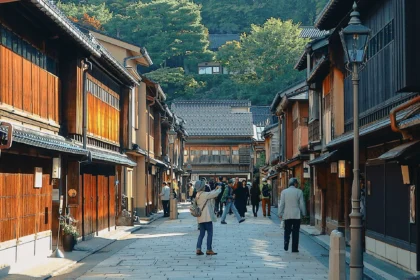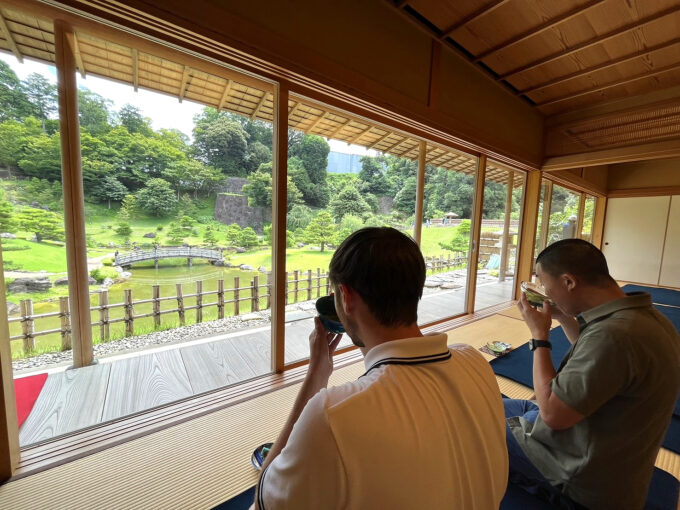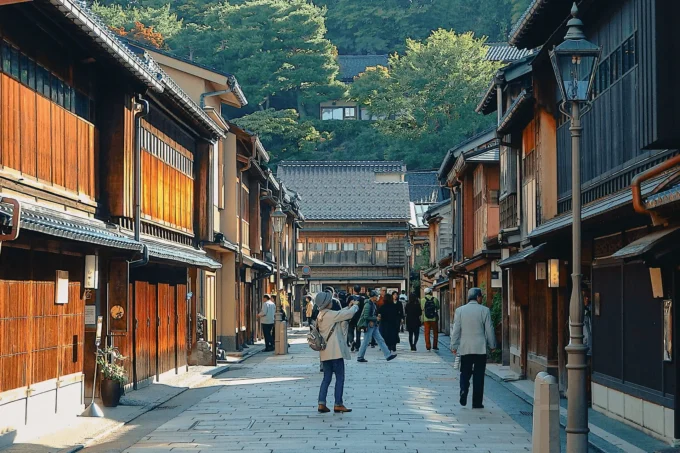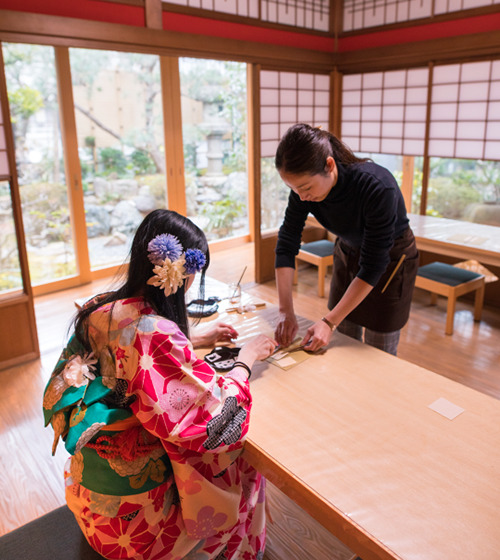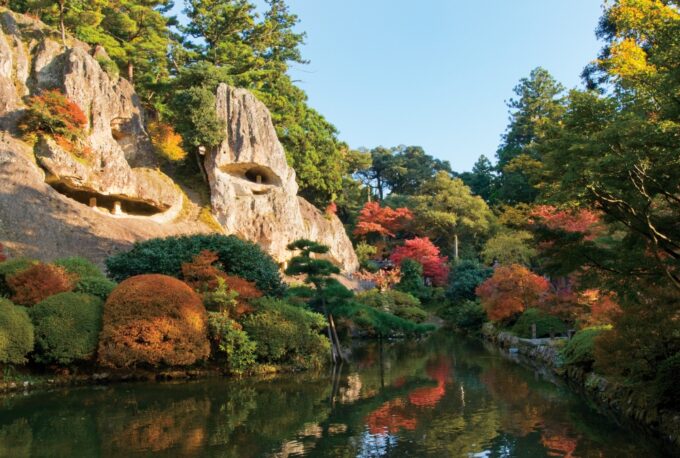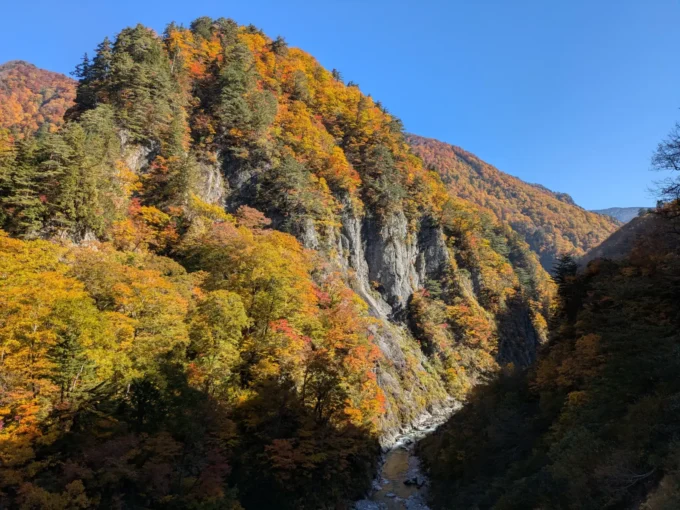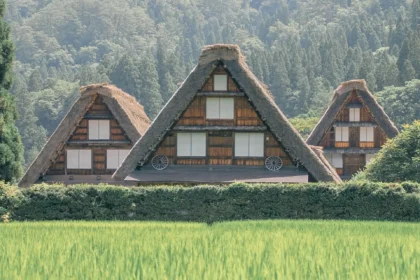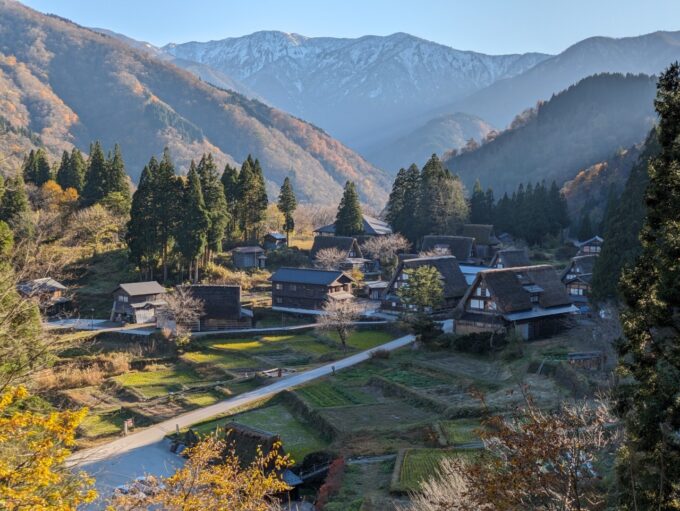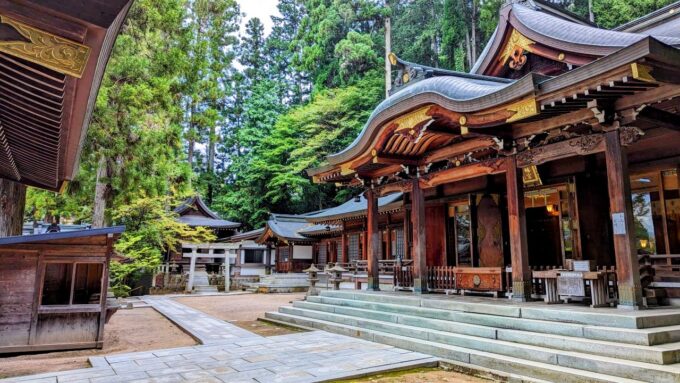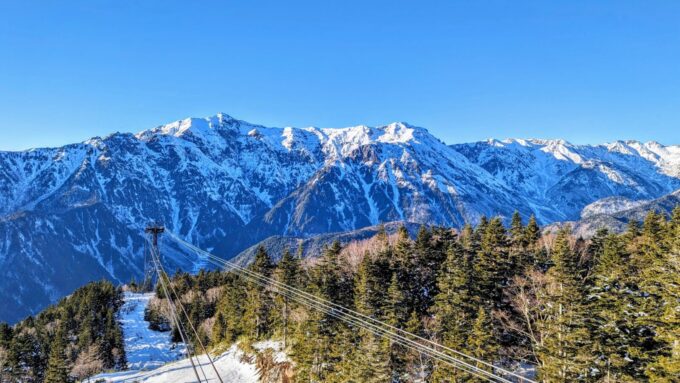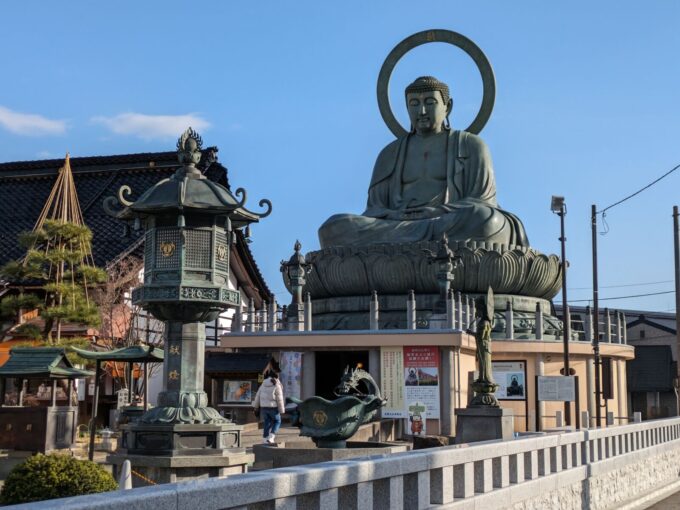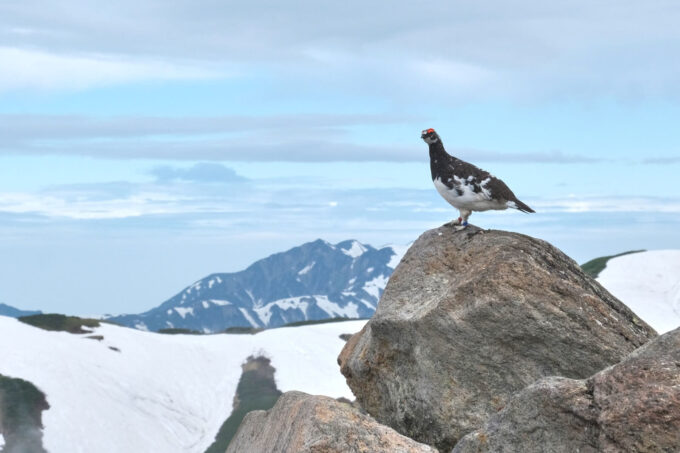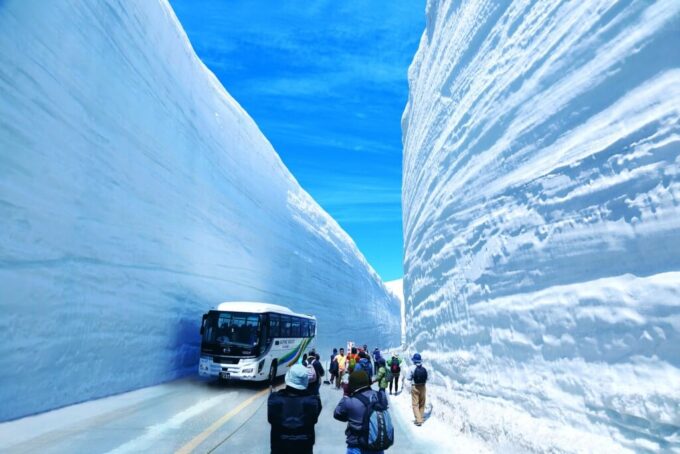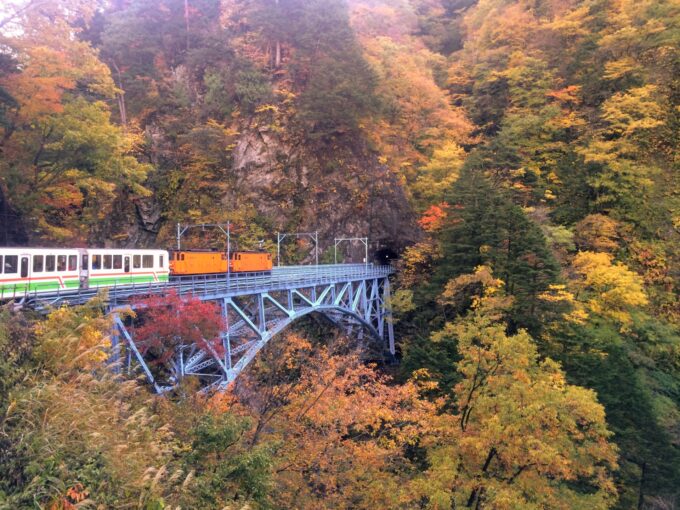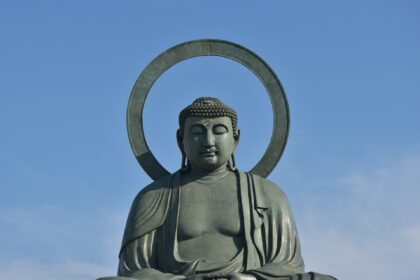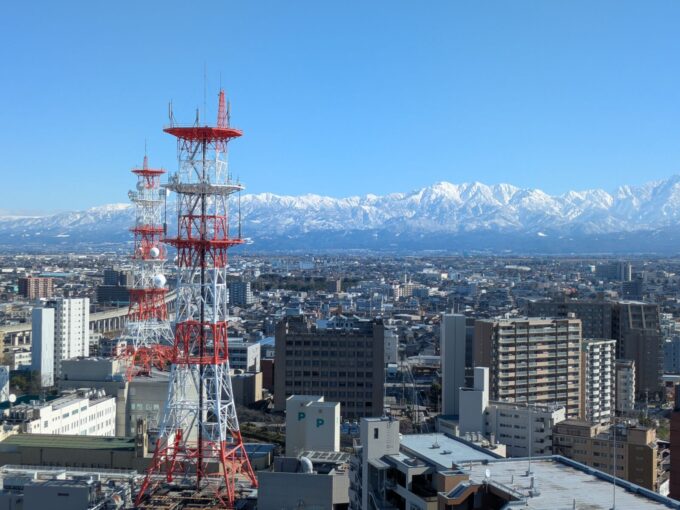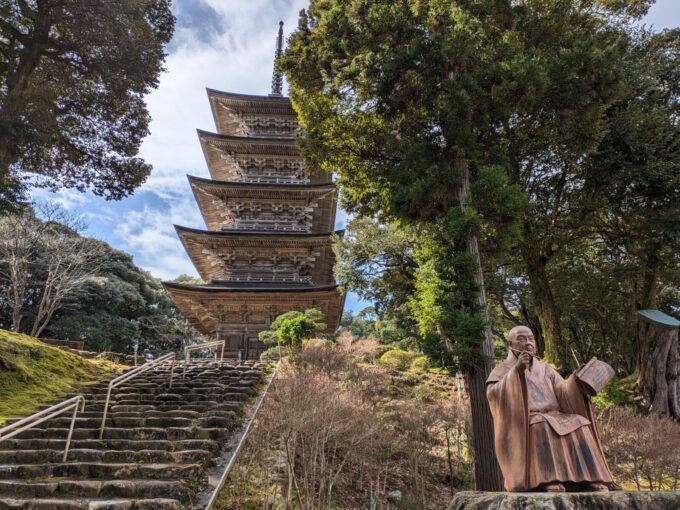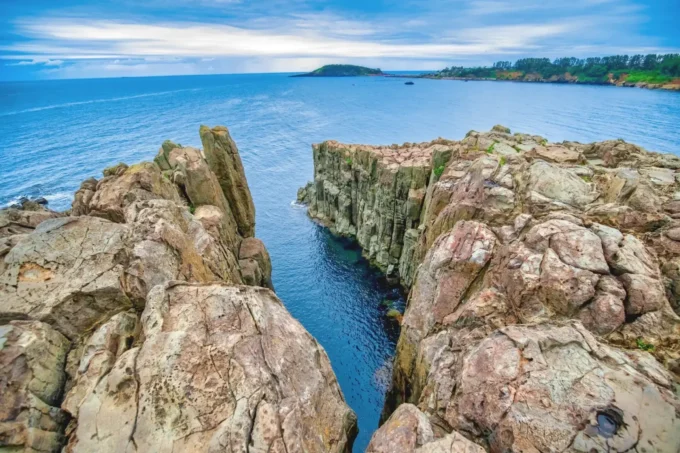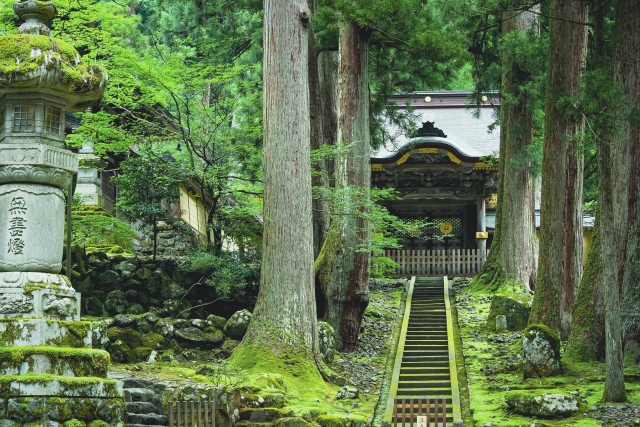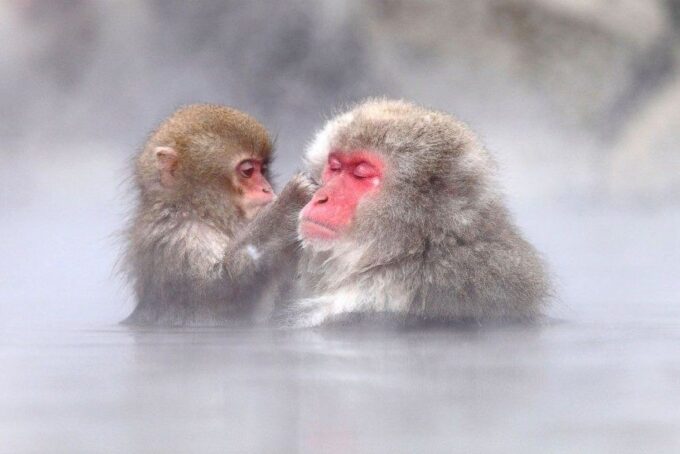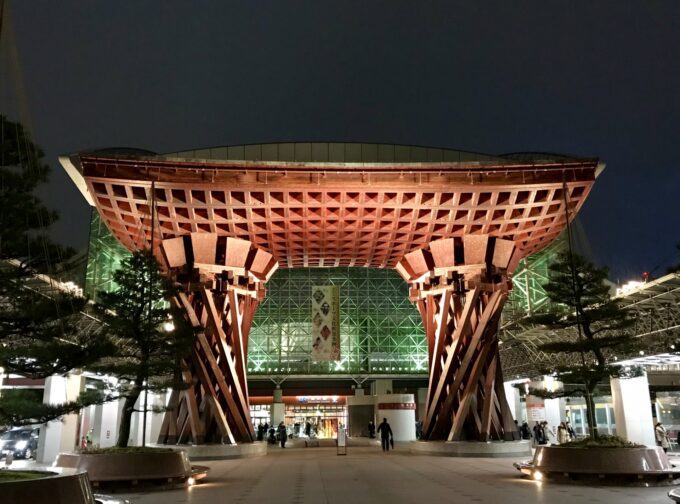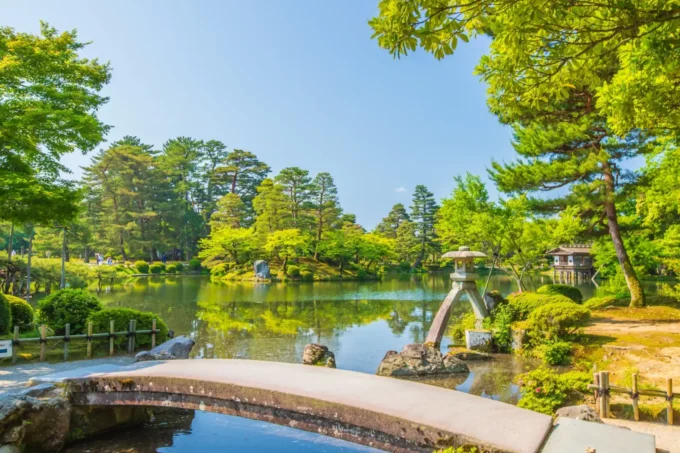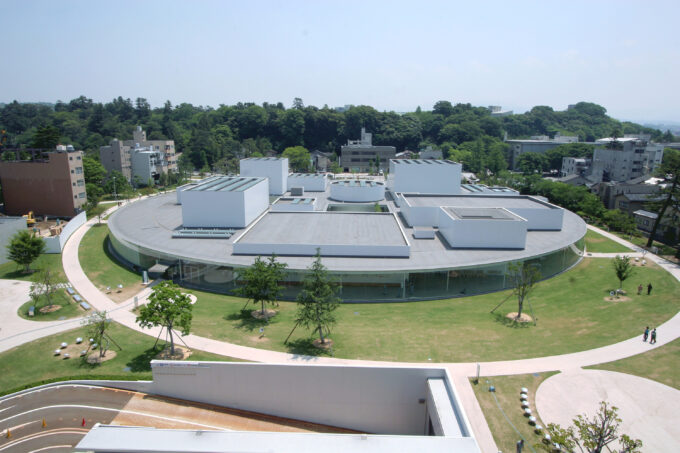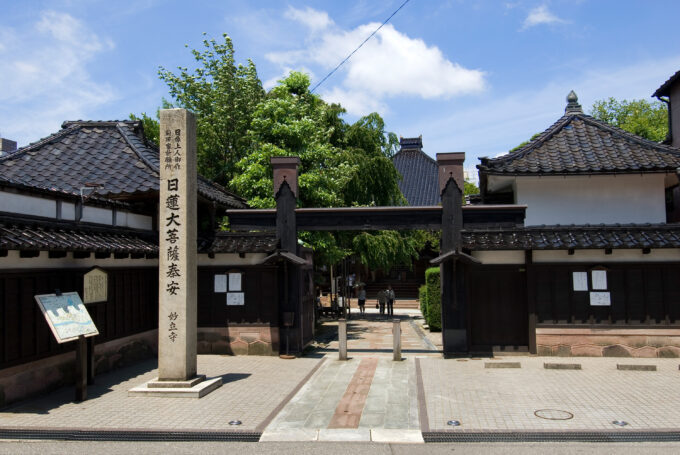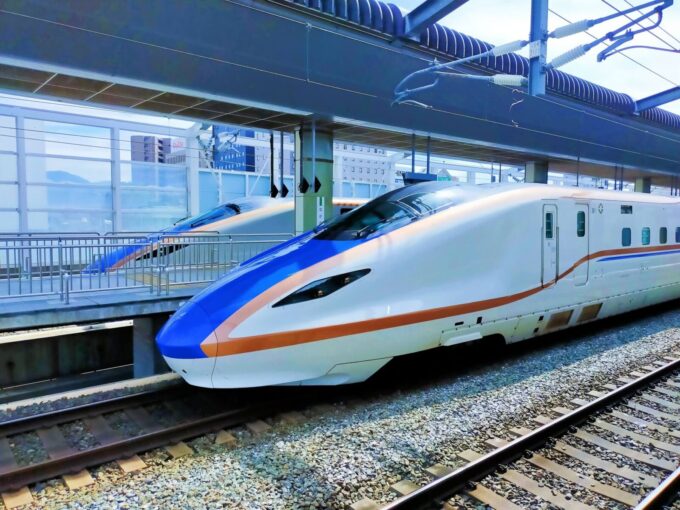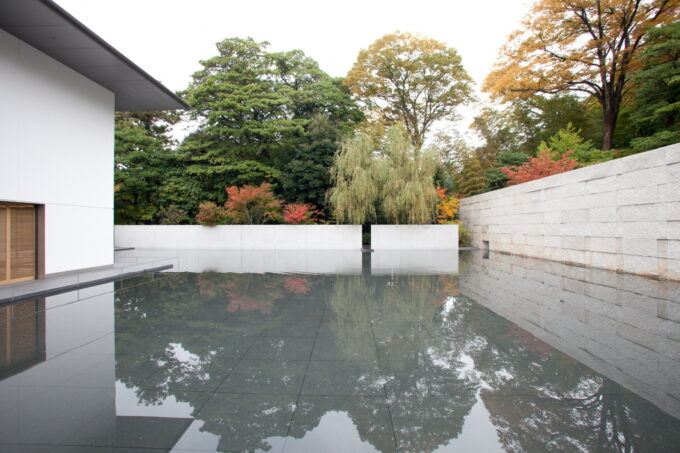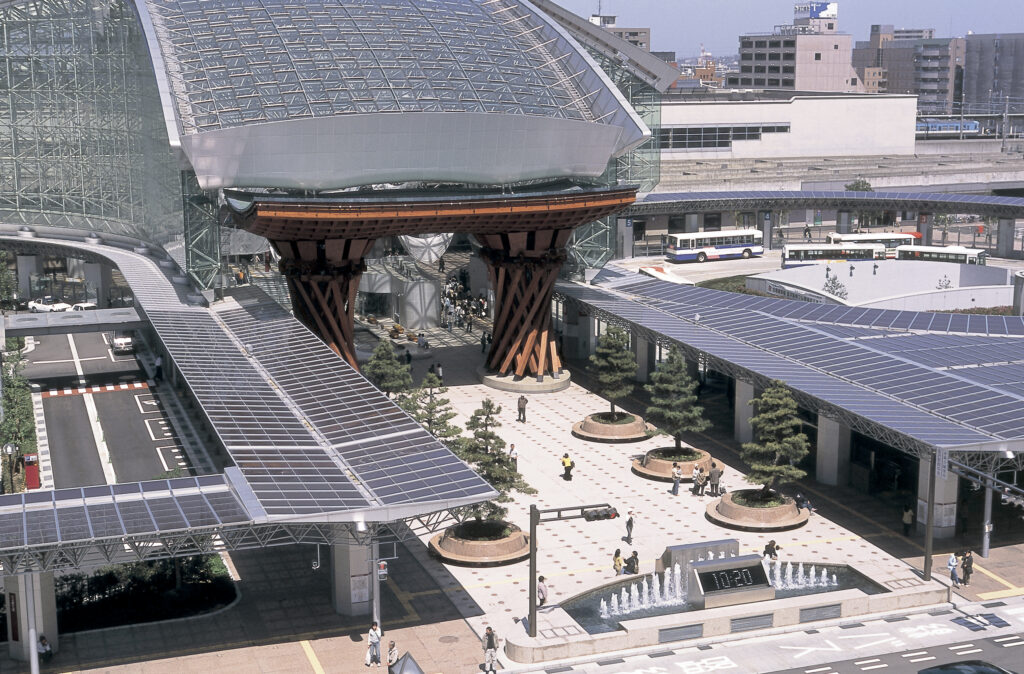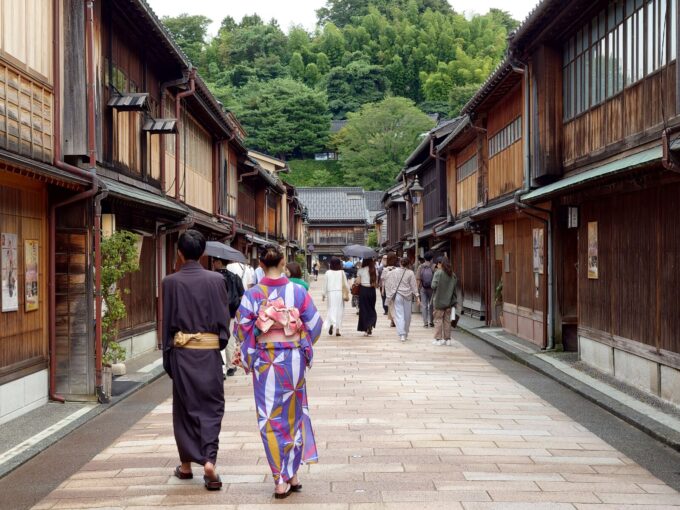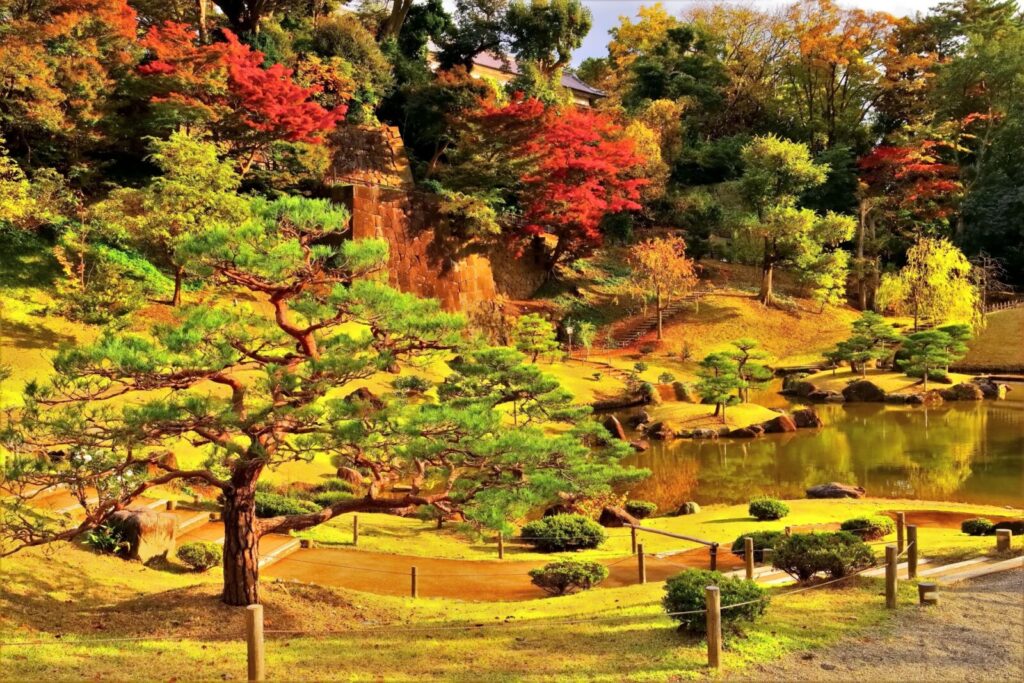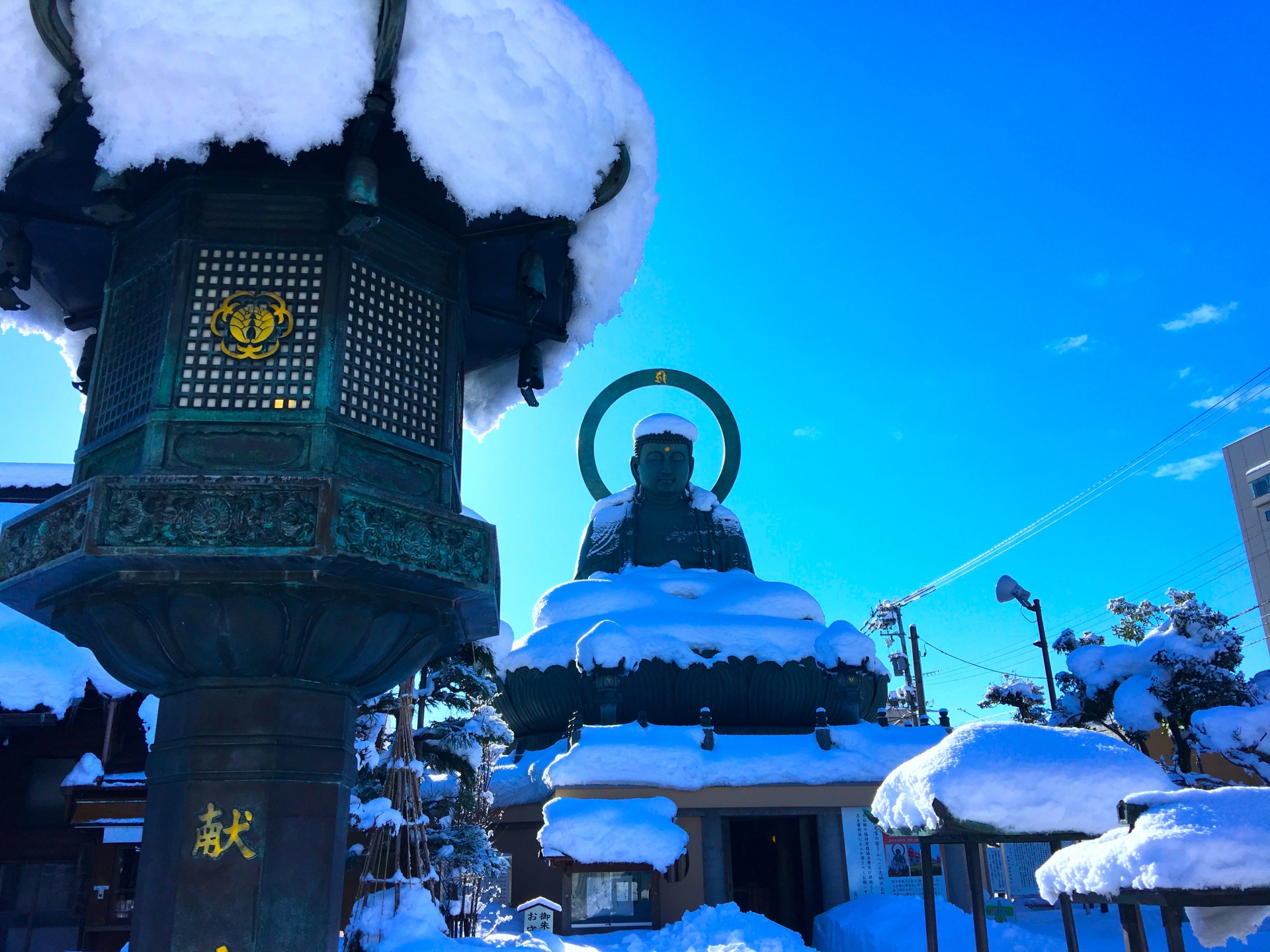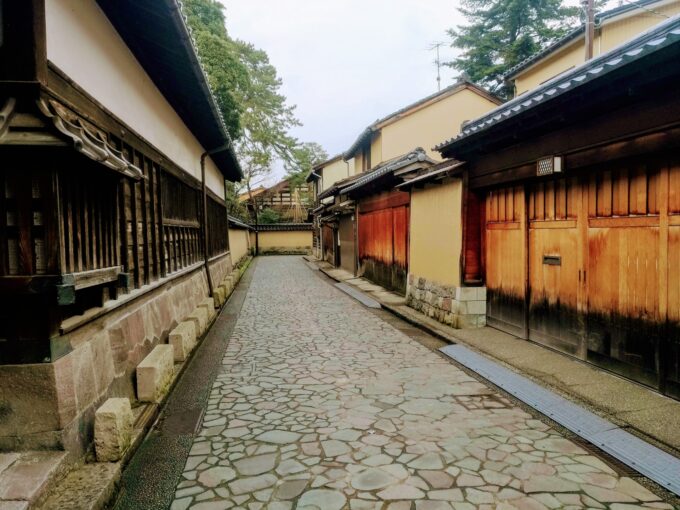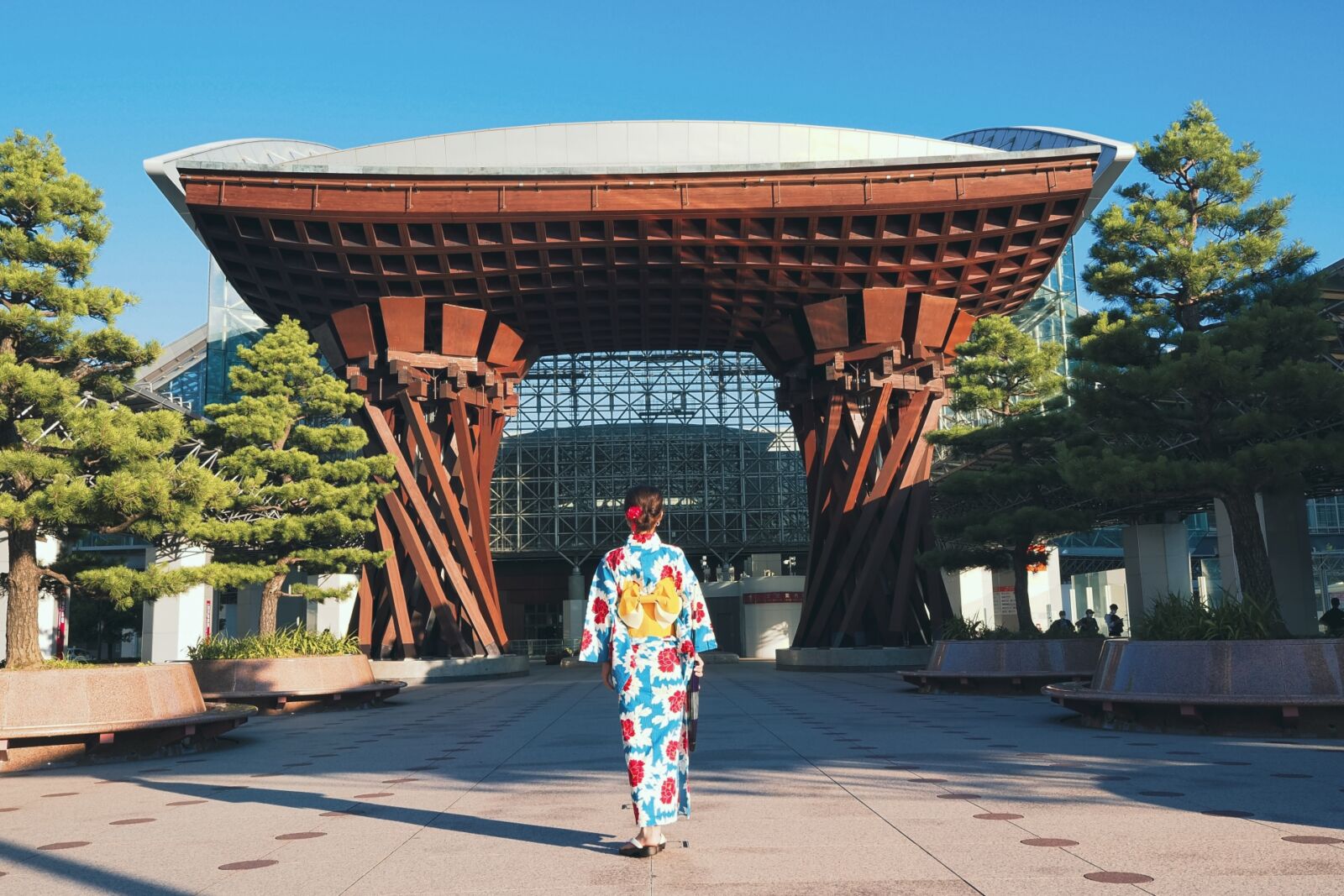
As a main stop of the Hokuriku Shinkansen Line from Tokyo and combined Hokuriku Shinkansen Line and Thunderbird Limited Express services from Osaka and Kyoto, Kanazawa is readily accessible from Japan’s major urban centers and as such, a popular stop between those cities. Kanazawa is a relatively small city with an attractive mix of historic areas, modern museums and great food. On this page, we'll give you all the information about Kanazawa's most famous sites - like the Kenrokuen Garden, historic Kanazawa Castle Park, and the fresh fish brought daily into Omicho Fish Market. If you're looking for a list of things to do in Kanazawa, this one has everything you need!
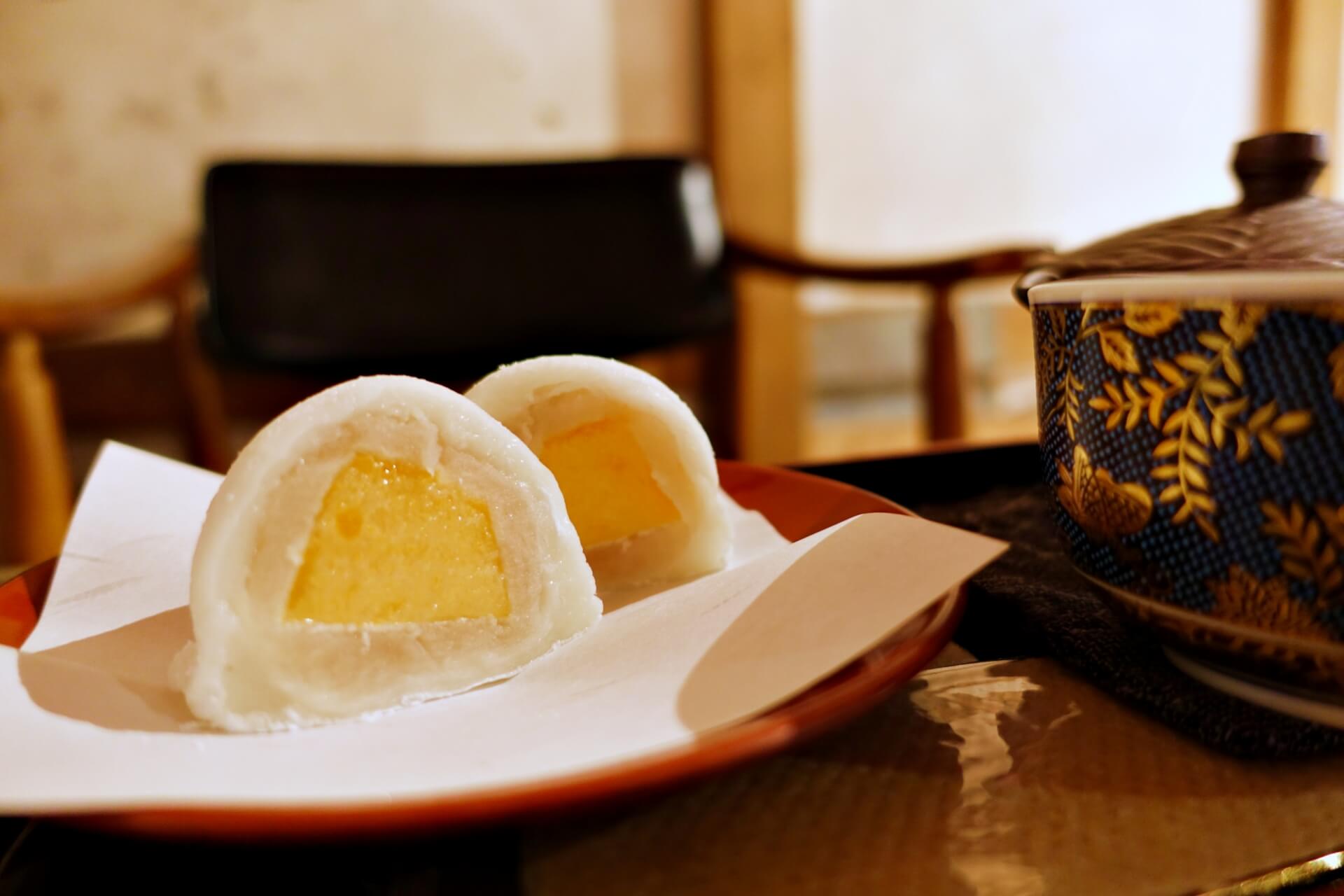
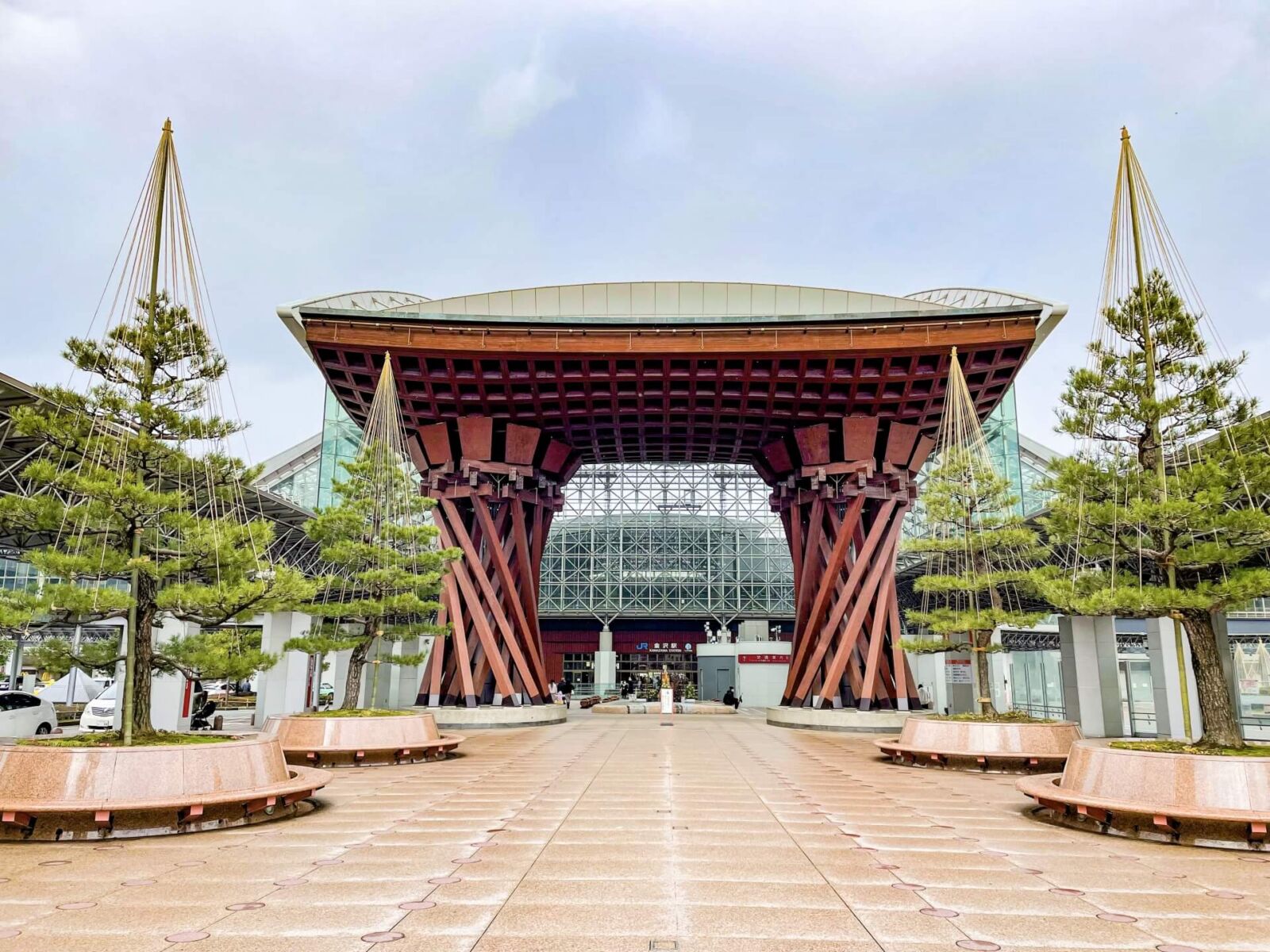
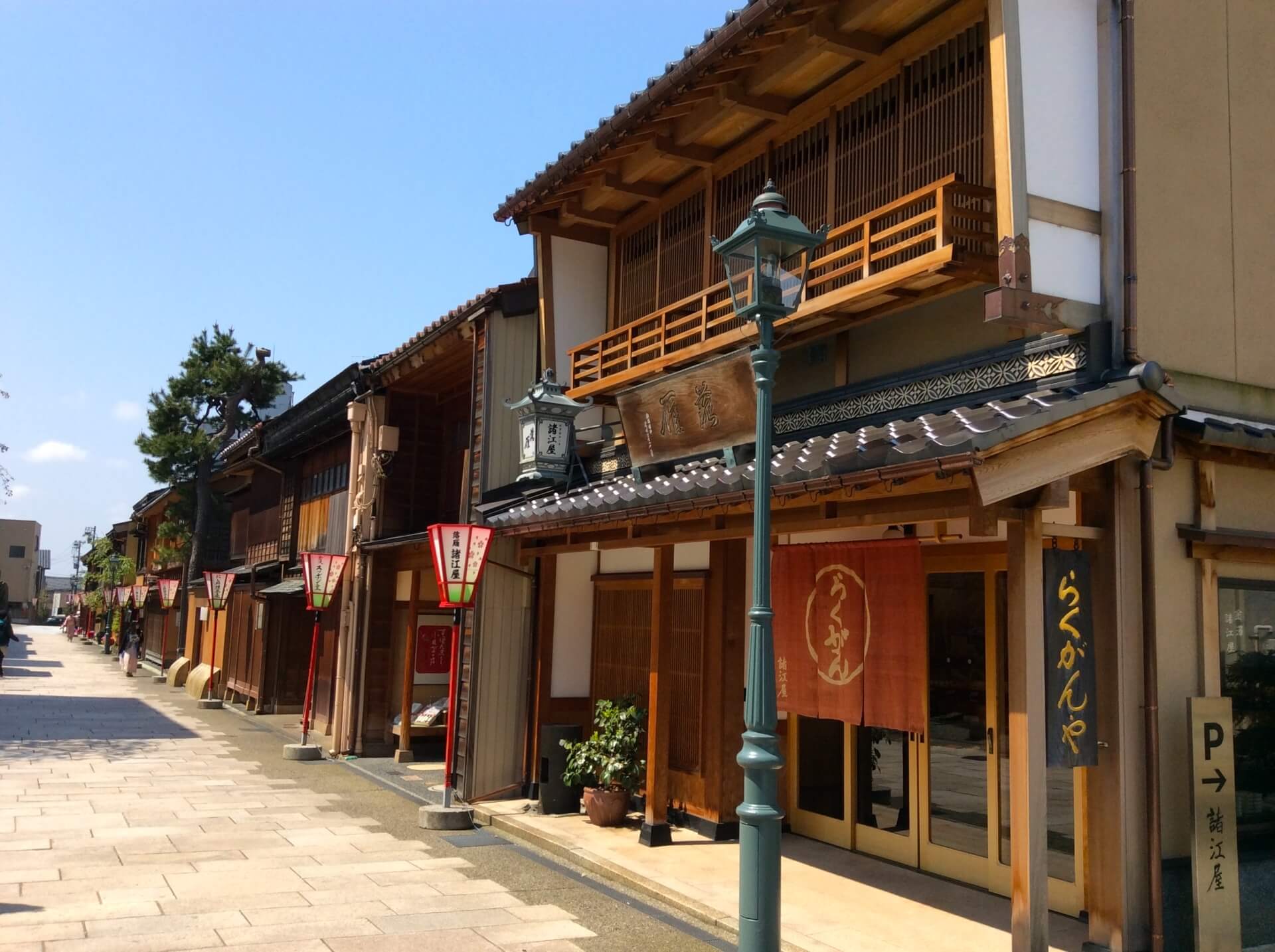
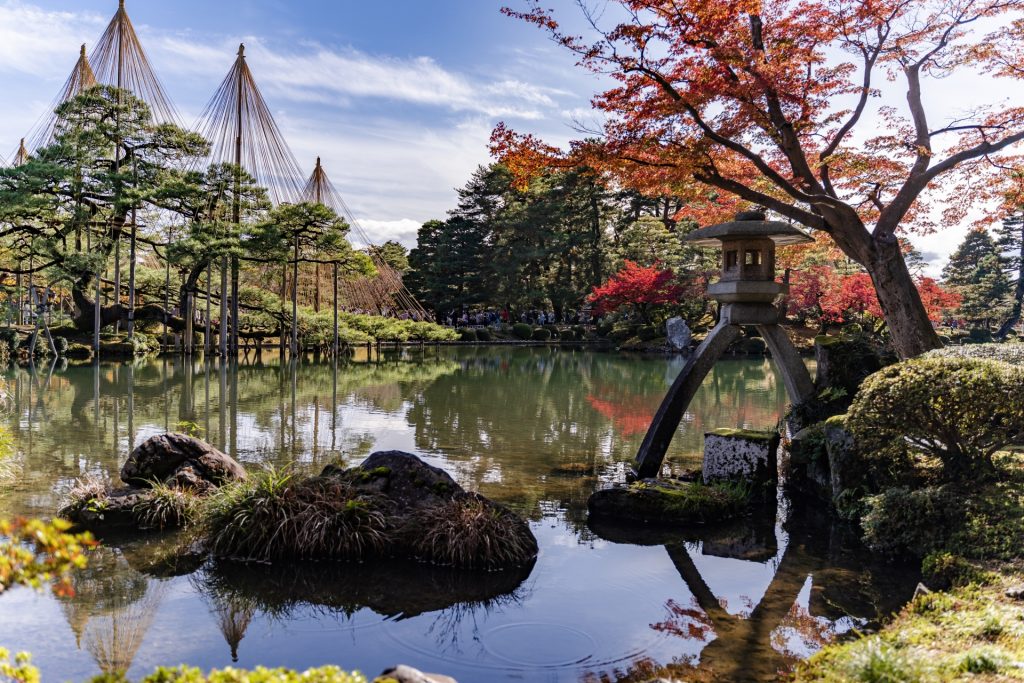
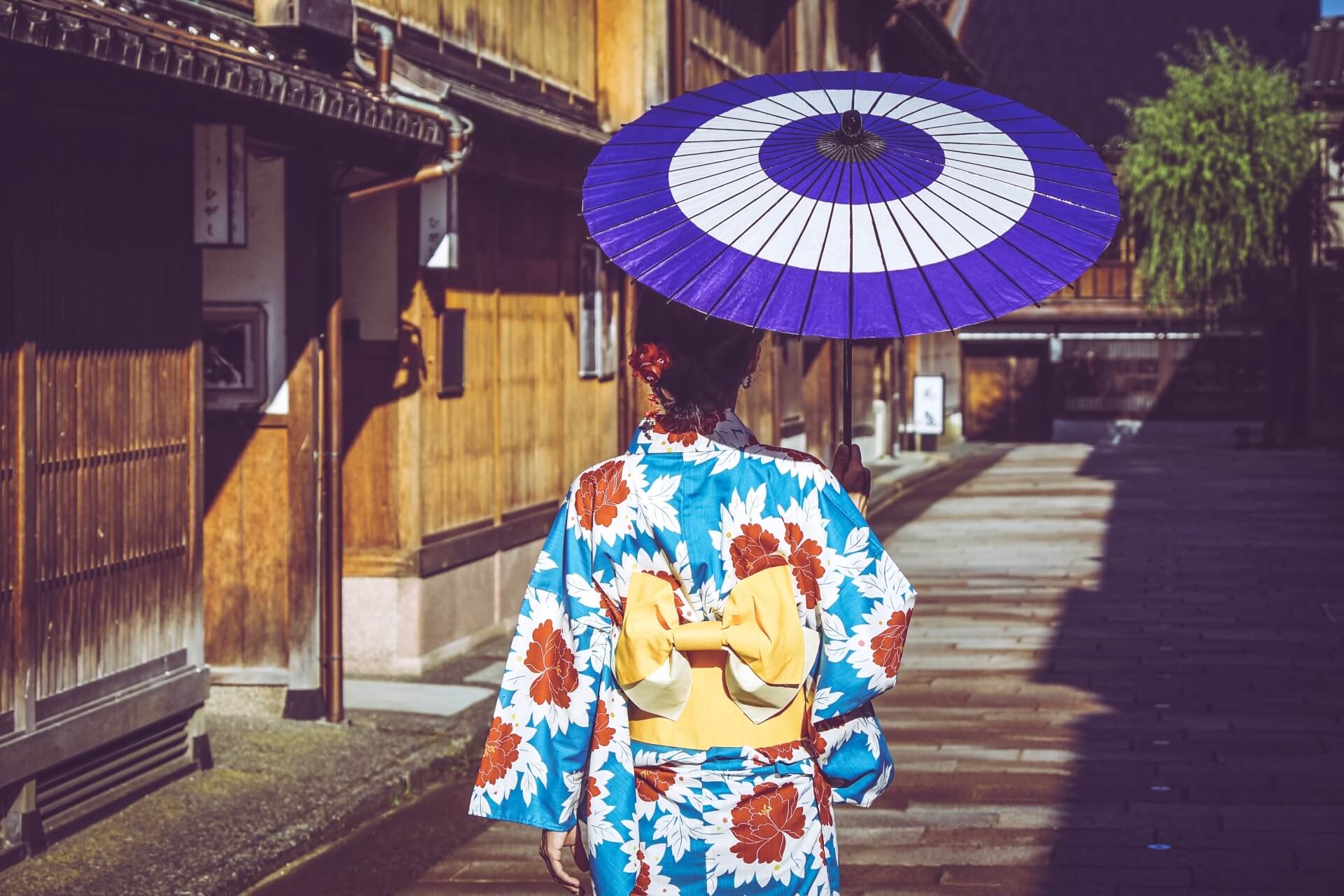
Part of the ancient Kaga Province, the name Kanazawa literally translates as ‘marsh of gold’. Under the rule of the Maeda clan during the Edo Period (1603-1868), Kanazawa developed into one of Japan’s most important cities, accumulating great wealth and attracting artisans through a series of policies designed to consolidate the power, and services the needs, of the samurai class. The Maeda clan won the favor (and alleviated the suspicion) of the shogunate by channelling a significant portion of its wealth away from the military and into the arts and crafts, including its famous gold-leafed items. Today, Kanazawa remains a city of historic districts and modern entertainments. From the centrally-located Kanazawa Station, it is a pleasant city to explore on-foot.
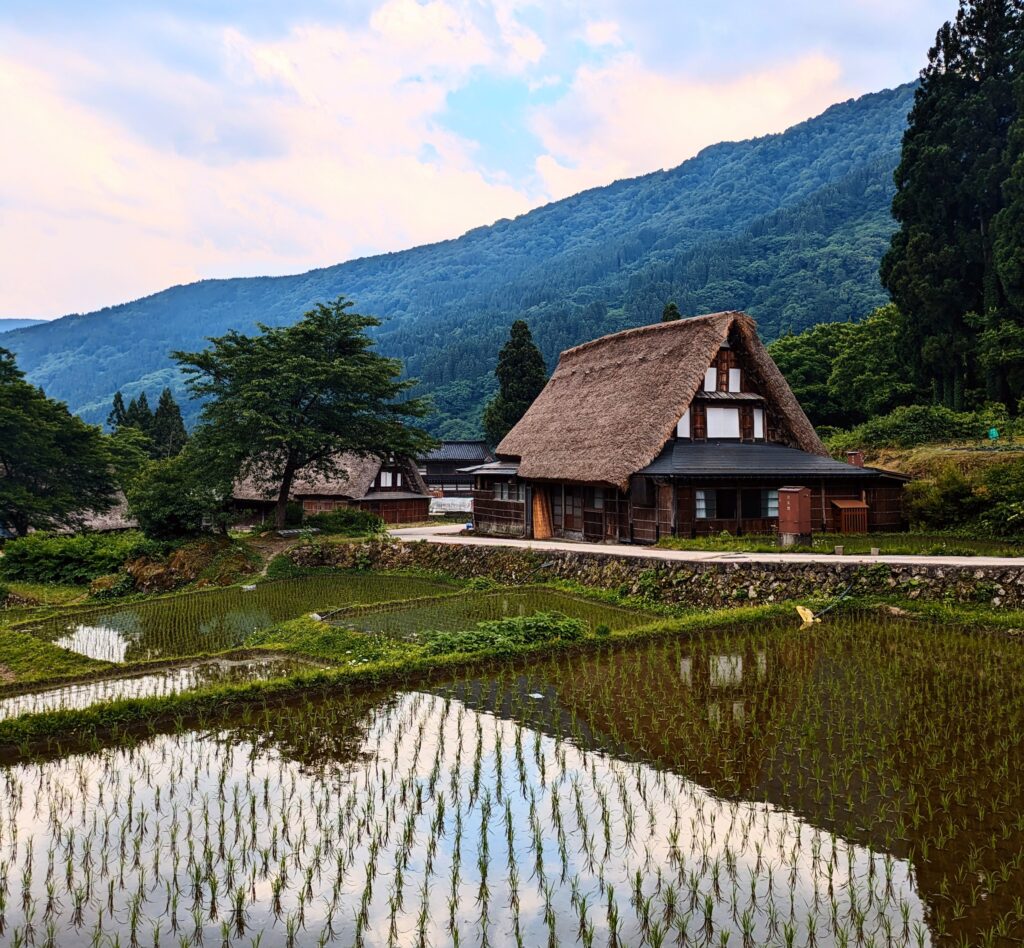
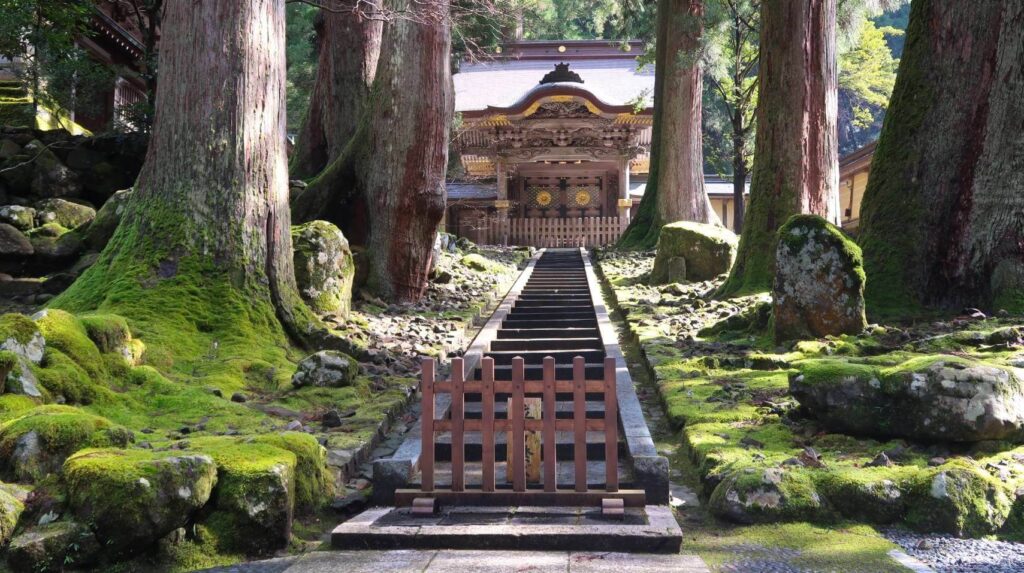
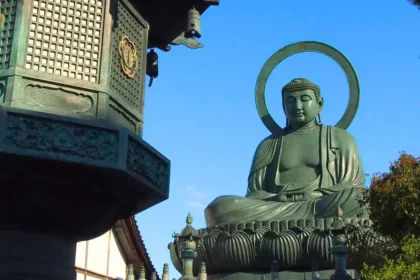
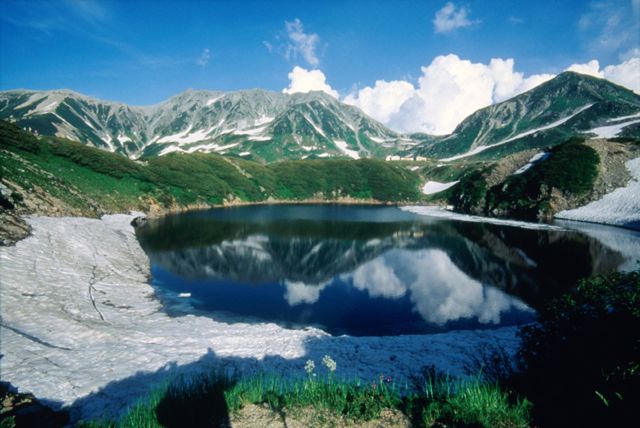
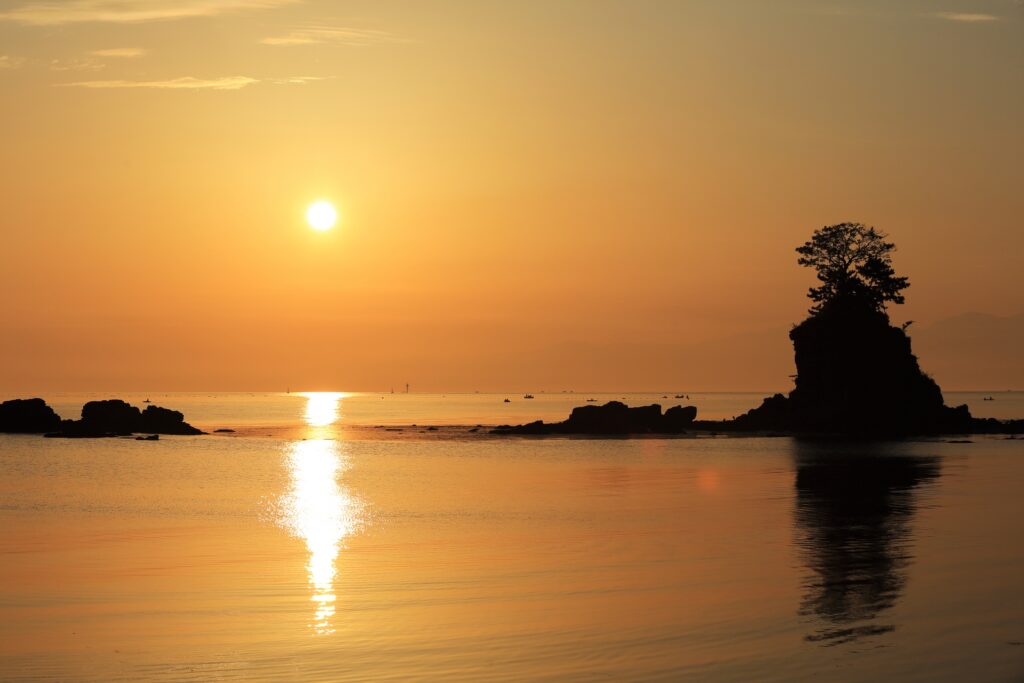
Outside of the city, the region is blessed with many outstanding destinations and attractions including Kaga Onsen, Hakusan National Park, the Noto Peninsula and a little further afield the Tateyama-Kurobe Alpine Route, Shirakawa-go and Gokayama, along with Takayama and Kamikochi. Let’s begin with the obvious question…
Where is Kanazawa?
Kanazawa is the capital city of Ishikawa Prefecture, located on north coast at the top of Central Japan. Under three hours from both Tokyo and Osaka by train, Kanazawa Station is a convenient transport hub from where to explore the city and region. The Hokuriku Shinkansen service runs to Kanazawa from Tokyo via Nagano, while the Limited Express Thunderbird service runs to Kanazawa from Osaka via Kyoto allowing travelers to reach the city quickly and in comfort. Once there, visitors discover one of Japan's most historic and pleasant cities - a place known for its former wealth and contemporary style. An ideal destination for visitors wanting to explore Japan's feudal past while enjoying some of the country's best seafood, dining and shopping, Kanazawa is now firmly established as a popular stop for international travelers. For more information on how to reach the city, see 'How To Get To Kanazawa' below.
30 Best Things to do Around Kanazawa
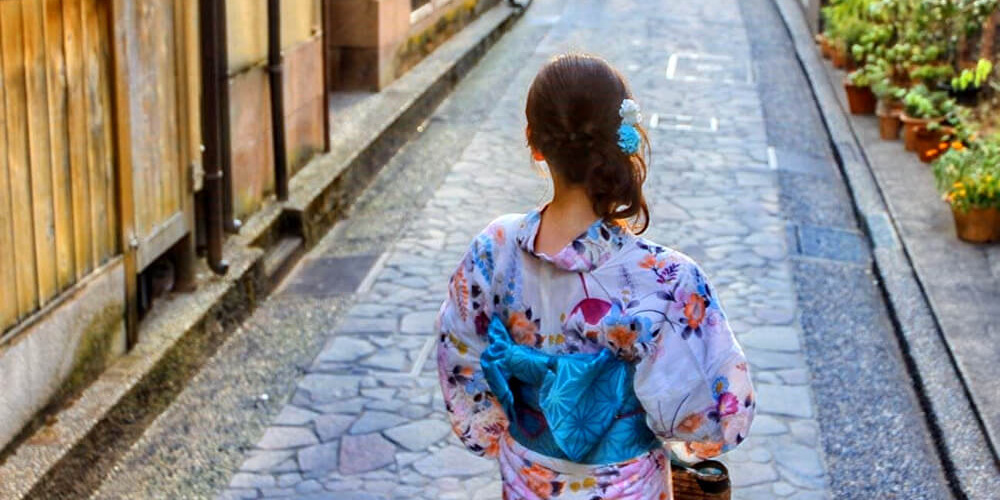
One of the most historic and enjoyable cities in Japan, Kanazawa is well-suited to a multi-day visit combining the many attractions of the city with nearby regional highlights. From it's historic attractions and districts to its excellent galleries, museums, shopping and dining, visitors tend to fall in love with Kanazawa and wish they'd allowed more time in their schedule to explore all it has to offer. The following suggestions of things to do around Kanazawa starts in the city before moving to nearby regional destinations and then onto more distant attractions and activities that can be combined into a multi-day exploration of Central Japan. Let's start with what is perhaps the city's most famous attraction:
1 / KENROKUEN GARDEN / all year round
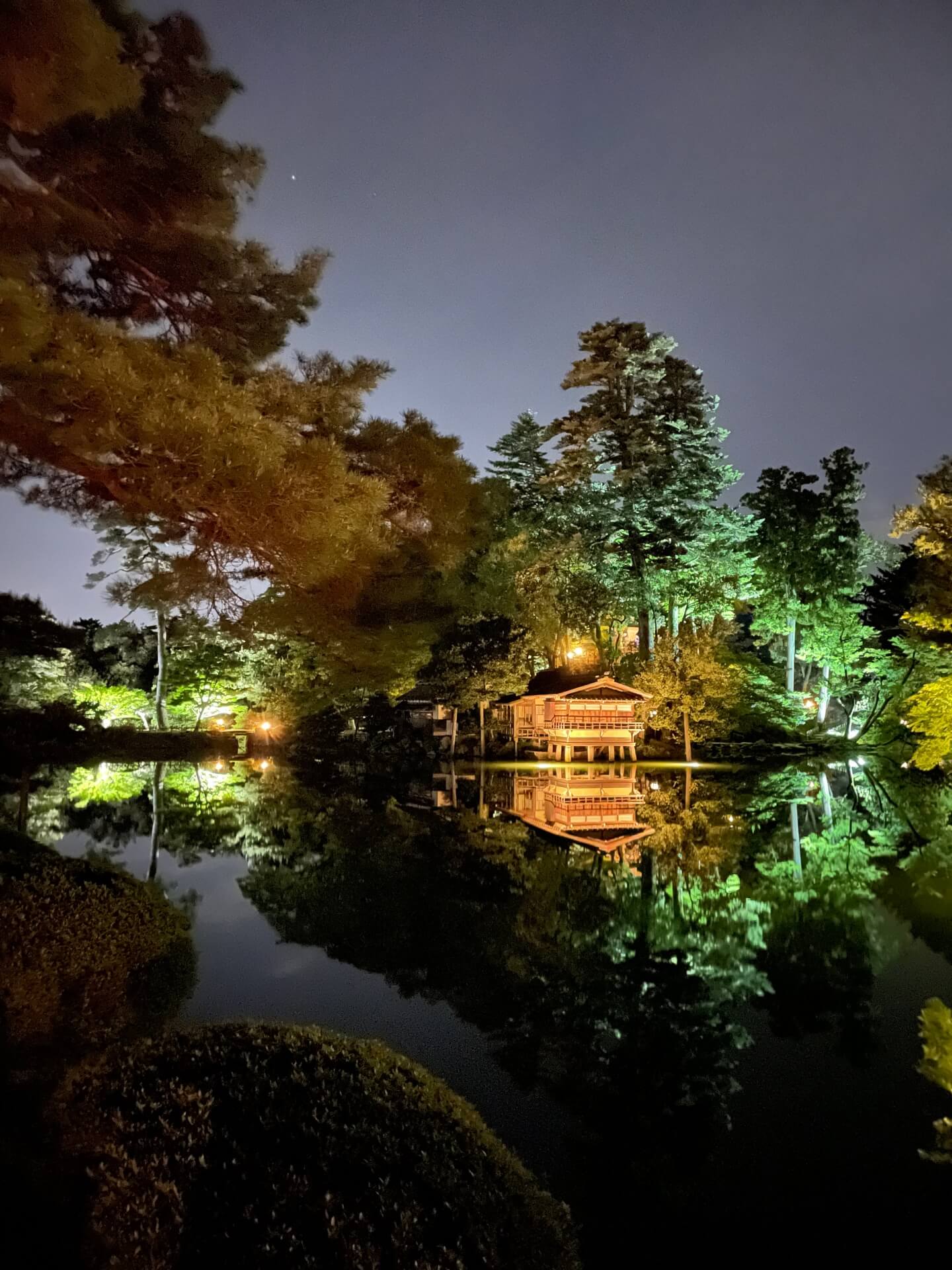
Opened to the public in 1871, Kenrokuen Garden was designed by the Maeda samurai clan and, to this day, is regularly cited as one of Japan’s three most beautiful gardens. The name ‘Kenrokuen’ translates as ‘Garden of the Six Sublimities’ and reflects a design underpinned Chinese landscape theory, and the six essential attributes needed to create an ideal garden. The garden is accessible any time of year however at its most beautiful during the cherry blossoms of spring and changing leaves of autumn. Open daily from 07:00 to 18:00 – March to mid-October – and from 08:00 to 17:00 – mid-October until the end of February. Admission is JPY320. From Kanazawa Station: 30 min walk.
2 / HIGASHI CHAYA DISTRICT / all year round
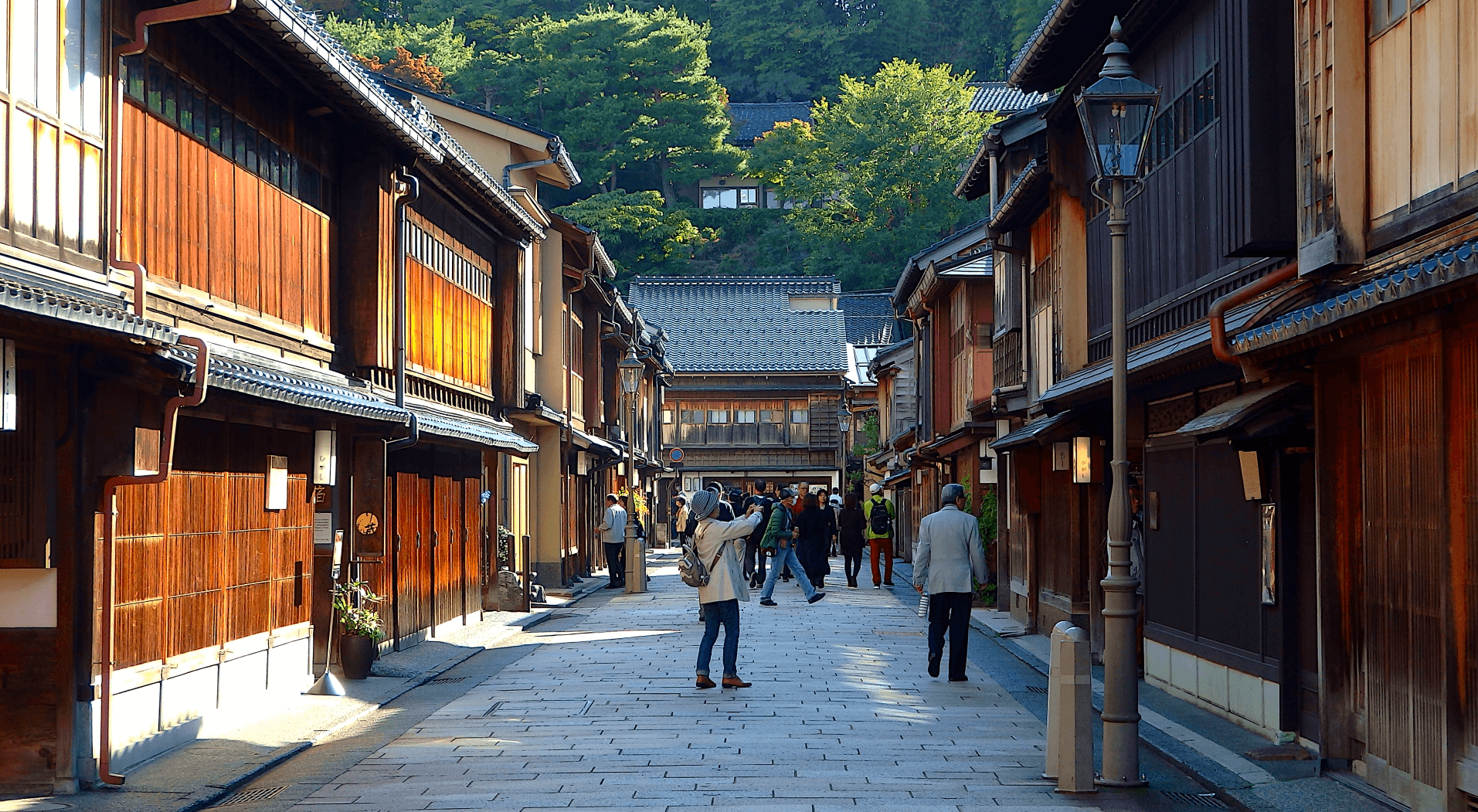
The historic precinct of Higashi Chaya is a well-preserved geisha district where geisha used to entertain their customers with singing and dancing at the ‘chaya’ or teahouses. Two teahouses – Shima Teahouse and Kaikaro Teahouse – are open to public, allowing you to see the spaces in which geisha once lived and applied their trade. Many other chaya have been converted into cafes and various shops. One of the more interesting is Hakuza Gold Leaf – selling all sorts of Kanazawa gold leaf items. From Kanazawa Station: 25 min walk.
3 / KANAZAWA CASTLE PARK / all year round
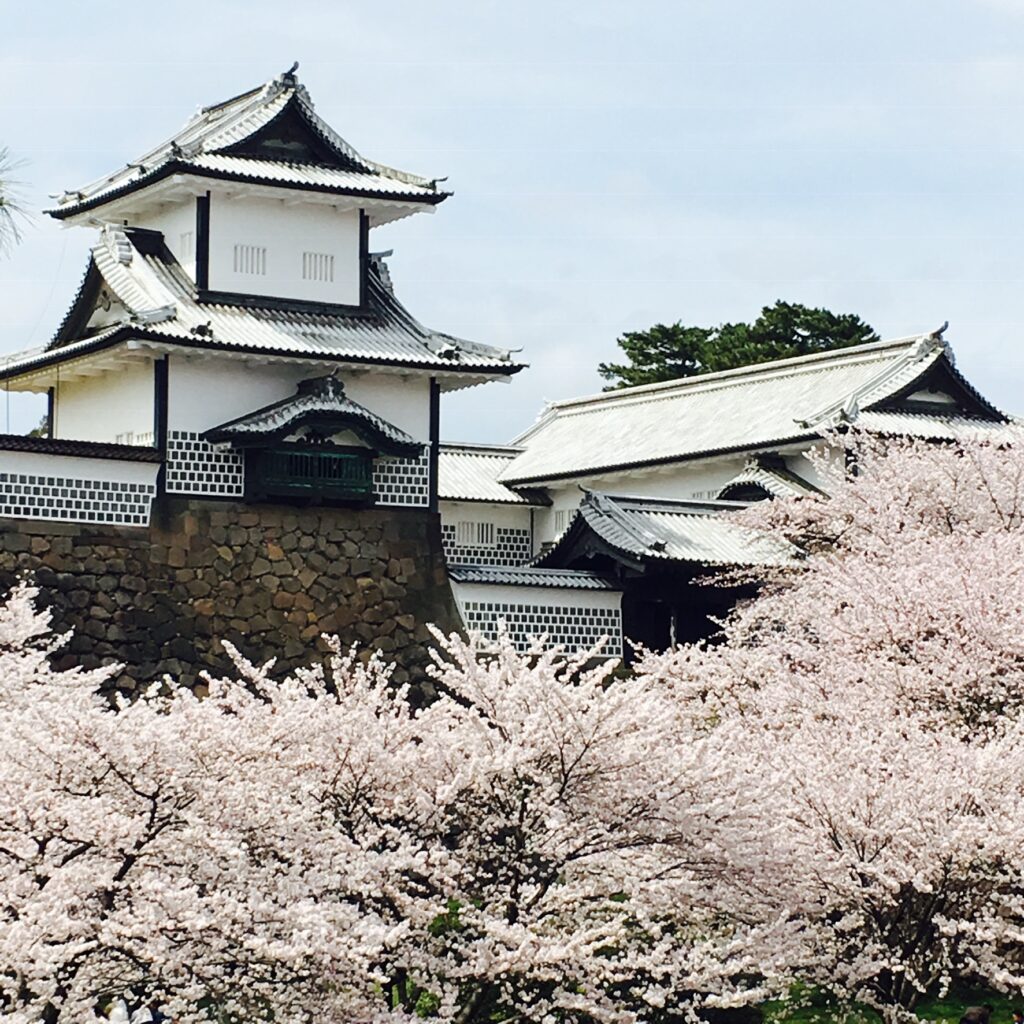
Exiting the garden via the Katsurazaka Gate, you will see a bridge leading to Kanazawa Castle Park. Home to the ruling Maeda Clan, the castle is a relatively recent reconstruction yet nevertheless, a beautiful and relaxing area to wander through. Currently, construction to rebuild the historic Ninomaru Palace at the centre of the castle park is ongoing. The grounds can be entered and enjoyed free of charge but to enter specific structures such as the Gojukken Nagaya Storehouse and Hishi and Tsuzuki Yagura turrets costs JPY320. Open daily from 07:00 to 18:00 – March to mid-October – and from 08:00 to 17:00 – mid-October until the end of February. From Kanazawa Station: 20 to 25 min walk.
4 / NAGAMACHI SAMURAI DISTRICT / all year round
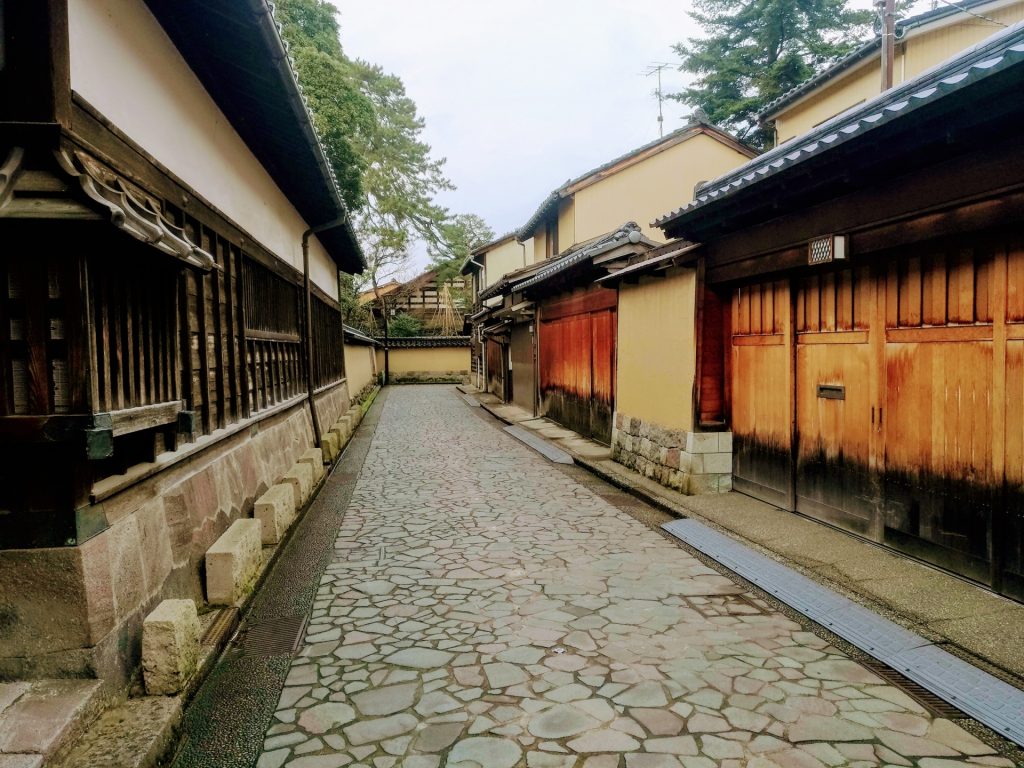
Located nearby Kanazawa Castle the Nagamachi District was traditionally home to samurai residences. While the samurai may now be gone, preservation of the historic character of the precinct including earthen walls, narrow lanes and traditional entrances convey the character and aesthetic of the past. The Nomura House - a restored samurai residence with a lovely garden – is open to the public while the Maeda Tosanokami-ke Shiryokan profiles the history of the Maeda clan. From Kanazawa Station: 20 min walk.
5 / OMICHO FISH MARKET / all year round
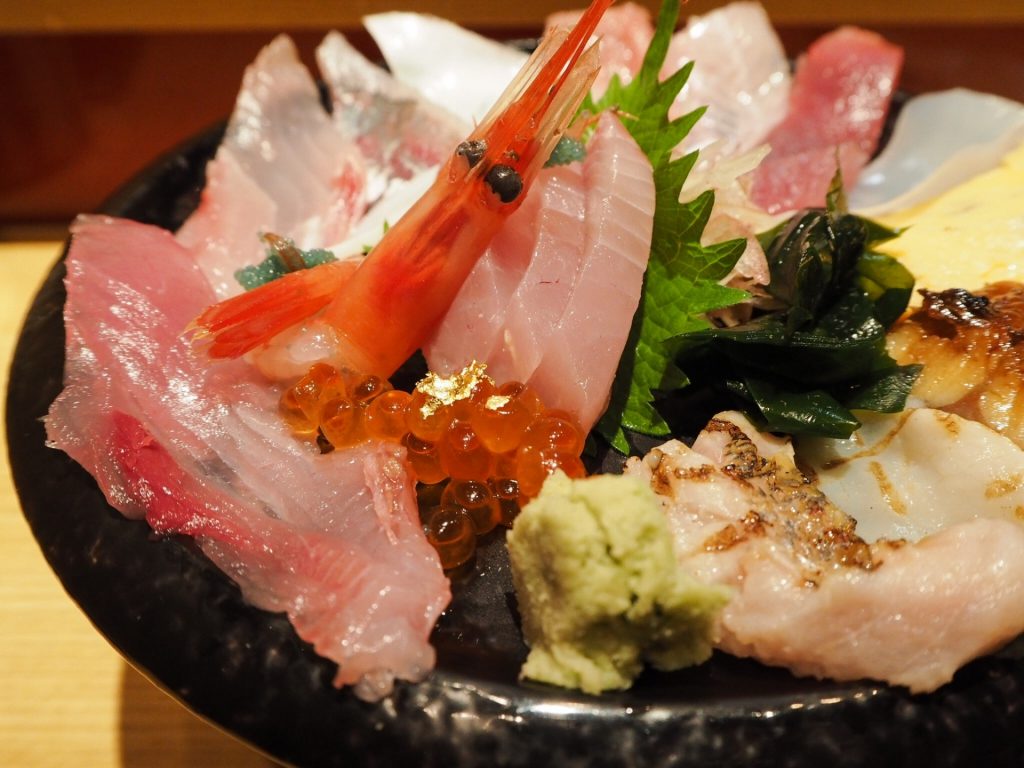
While not exclusively selling seafood, Omicho Fish Market is without doubt most famous for the delicious array of fresh seafood on sale at its 200 shops and stalls. The market is undercover and sells seafood from the fishing grounds in the nearby Sea of Japan. If you are a fan of seafood and in Kanazawa, you nearly have to go. While the market is open daily, individual shops will take days off with the greatest number of vendors shutting on Sundays, public holidays or Wednesday.
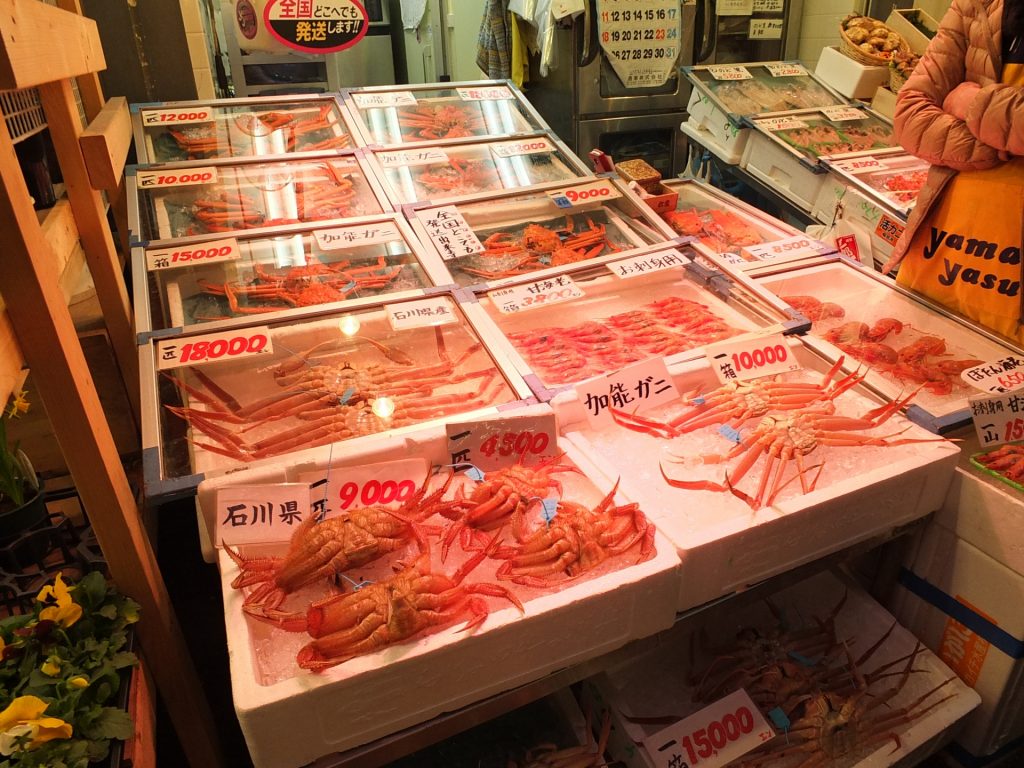
Some restaurants are open at night however daytime hours – between 09:00 to 2:30 – see the greatest number of vendors selling to the public. From Kanazawa Station: 15 min walk.
6 / OYAMA SHRINE / all year round
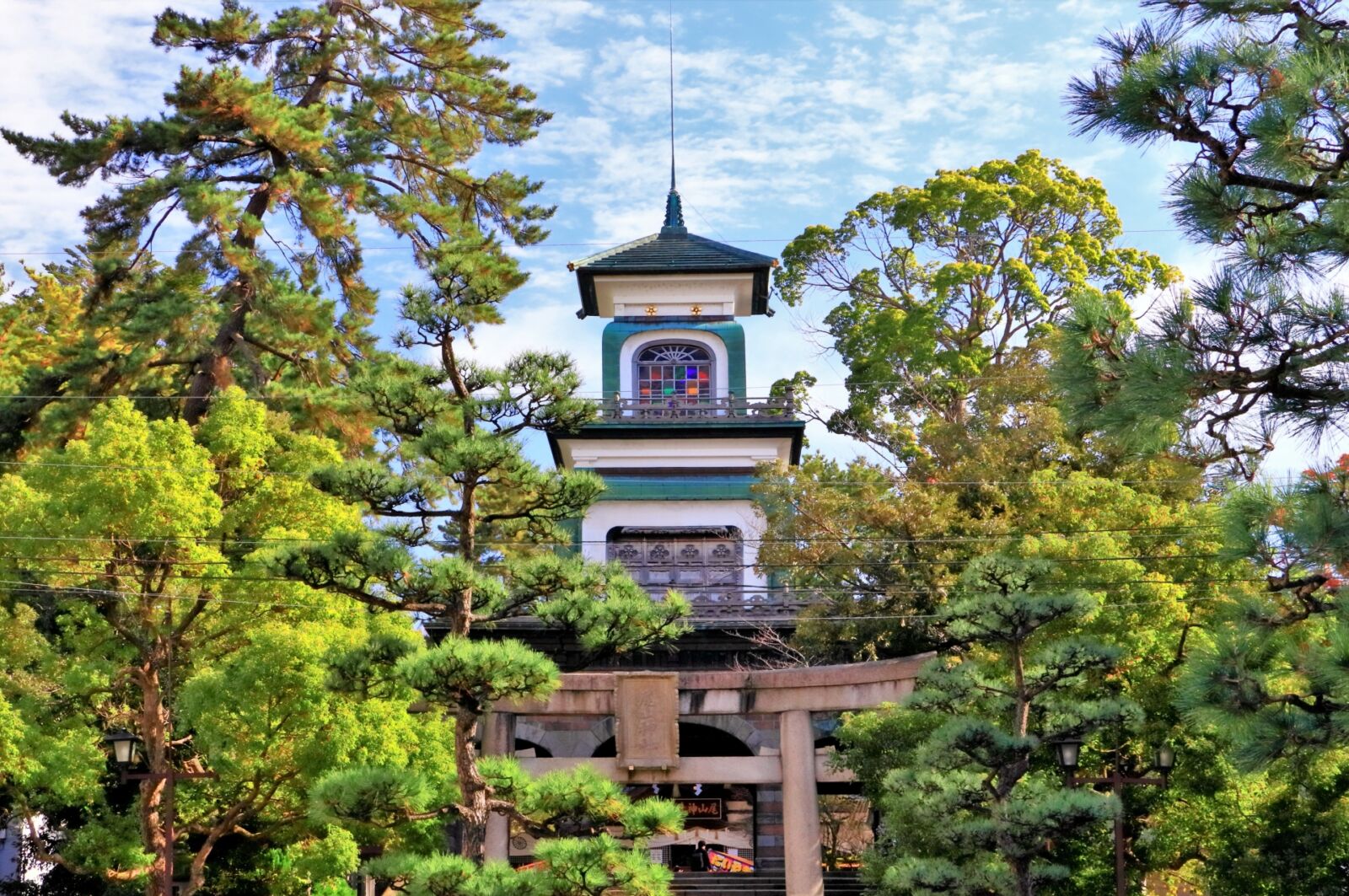
Adjacent to the castle is Oyama Shrine. The shrine is dedicated to the first lord of Kanazawa, Maeda Toshiie, and his wife, Lady Matsu. Toshiie's arrival to Kanazawa in 1583 is widely seen as the start of a prosperous and peaceful golden age for the city. In fact, many of the traditional arts and crafts of Kanazawa owe their standing to the Maeda family.
Oyama Shrine was built to honour their legacy and enshrine their spirits. The estate features a beautiful gate with a stained-glass window and the first lightning rod used in Japan. There are also intricate wood carvings on the door and charming golden frogs - said to bring change into your life - as well as a large pond in the shape of a koto, a Japanese harp.
The shrine is open all year round and is a perfect way to start the day, moving into the castle grounds and then leading to a stroll through Kenrokuen Garden.
7 / GOLD LEAF / all year round
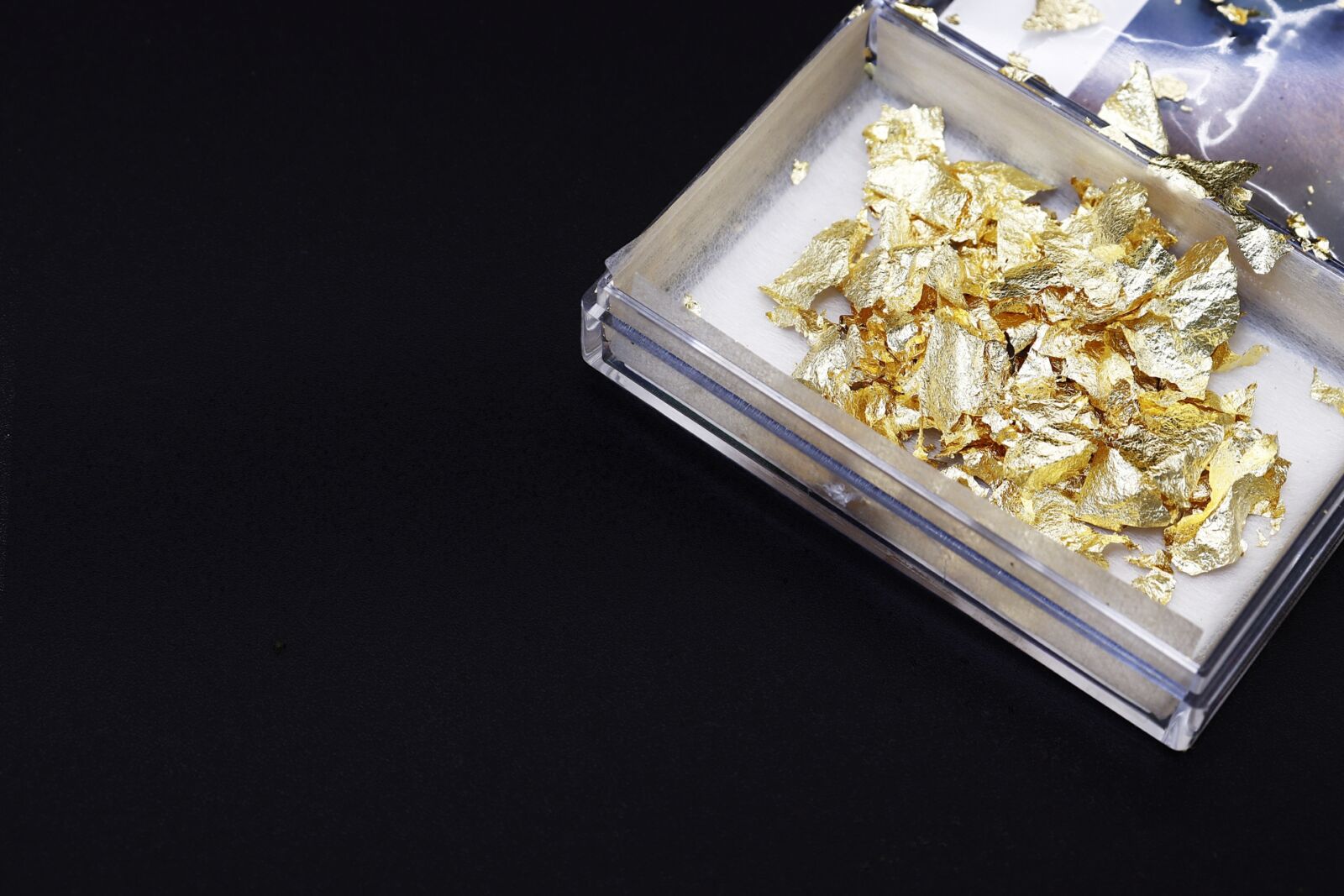
Kanazawa is the largest producer of gold leaf in Japan, making about 99% of the valuable material. Gold leaf is gold made into a sheet that is 1/1,000 of a millimeter thick. It is used in various ways that include wooden statues, pottery and even food! Everywhere you go in Kanazawa there is gold mixed into many of the traditional crafts. Another common sight in the city is ice cream topped with a sheet of gold leaf on top.
Gold leaf makes an excellent souvenir from Kanazawa, either for yourself or for a loved one back home. If you're struggling for ideas of mementos to bring back from your time in Japan, check out our Best Souvenirs from Kanazawa guide! It'll give you all the information you need to bring the best gifts back for all your friends and family.
For those who want to try making plates or other items with gold leaf on them, join one of our tours!
8 / NINJAS IN KANAZAWA / all year round
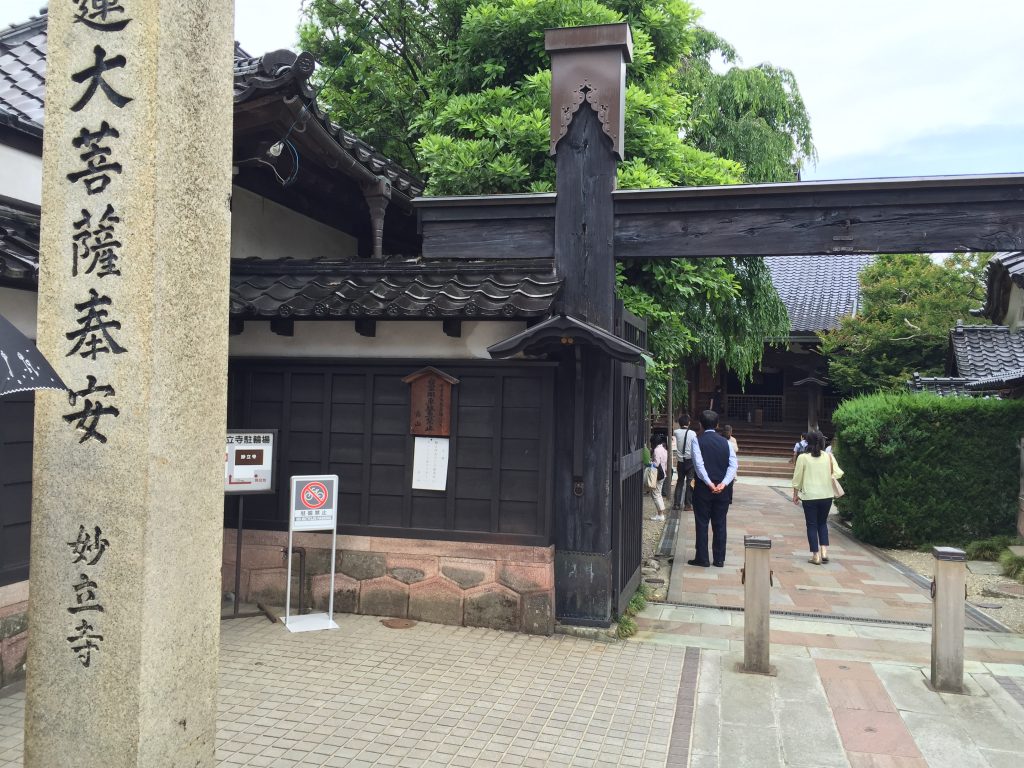
For visitors feeling a little 'templed-out' from their time in Japan, a visit to Myoryu-ji Temple might be just what you need to reengage. While ninjas were not actually associated with the temple, it is commonly referred to as the ‘Ninja Temple’ due to its use by the Maeda clan to watch for approaching enemies. Hidden tunnels, secret rooms, corridors and staircases reveal that Myoryu-ji was more than just a temple but in reality, a disguised military outpost. Located the Teramachi District of Kanazawa, the area is home to many important temples but the Ninja Temple can lay claim to being the most interesting. Entry is limited to Japanese-speaking tours – JPY1000 – operating every 60 minutes from 09:00 to 16:00 (weekdays and winter) or every 30 minutes from 09:00 to 16:30 (weekends and public holidays outside of winter). From Kanazawa Station: 35 min walk.
A short five-minute walk from Myoryuji Temple is a Ninja Weapons Museum that displays many different instruments used by ninjas in the region. You can see armour, claws, spears, helmets and even ground tacks used by ninjas in history. Ninjas were integral to warfare throughout the Warring States period of the 1500s and even beyond.
If you want to try your hand at throwing ninja stars and ninja needles, this is a great experience. It is also one you can find on our tours too!
9 / 21st CENTURY MUSEUM OF CONTEMPORARY ART / all year round
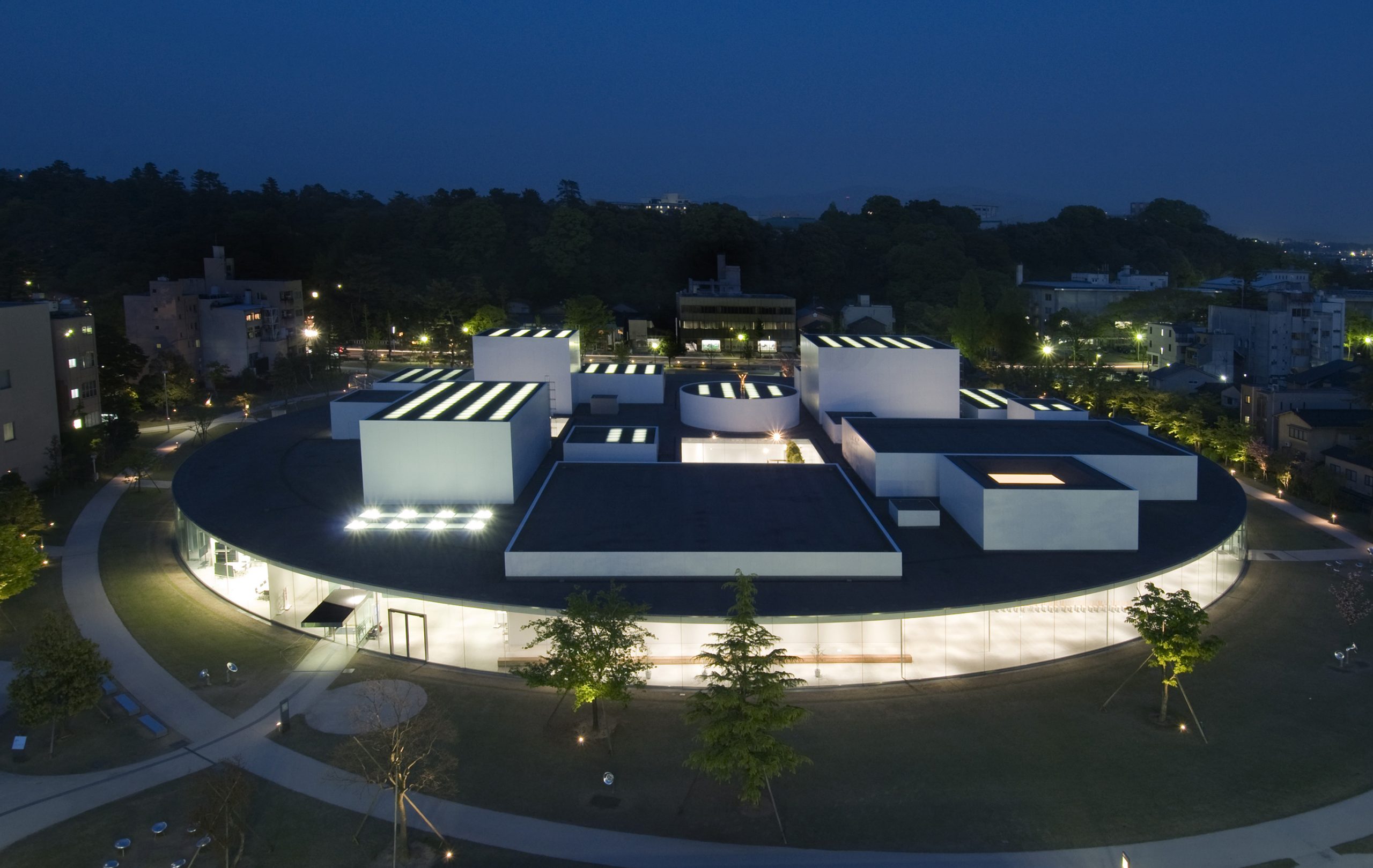
Opened in 2004, the 21st Century Museum of Contemporary Art is the most popular museum in Kanazawa and one of the best museums for contemporary art in Japan. Distinctly modern compared to Kanazawa’s historic buildings, the museum exhibits modern works by both Japanese and international artists – including, most famously, Leandro Erlich’s ‘Swimming Pool’. Located next to Kenrokuen and Kanazawa Castle, a visit to the museum can be incorporated into your exploration of those famous sights. Public areas of the museum are open from 09:00 to 22:00 while paid-entry/exhibition spaces are open from 10:00 to 18:00 (or until 20:00 on Friday and Saturday). Admission varies depending on the exhibition but is usually around JPY1200. From Kanazawa Station: 30 min walk.
If you're someone who loves spending a quiet hour or two in a museum, Kanazawa is the perfect place for you! As you'll see through more of this list, the city has a wealth of museums featuring gold leaf, local crafts, art, history and much more! To get a sense of what the city's museums have to offer, we've prepared a "Best Museums in Kanazawa" guide for you!
10 / DT SUZUKI MUSEUM / all year round
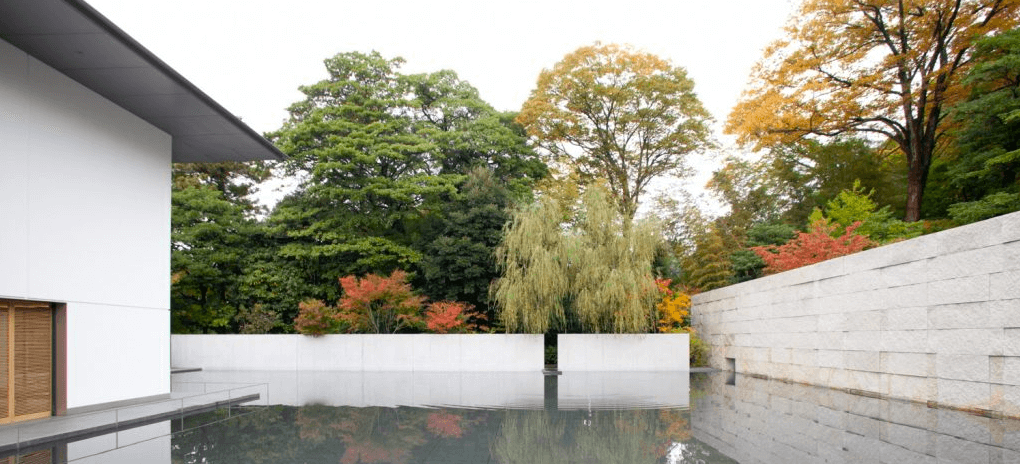
Opened n 2011, the DT Suzuki Museum commemorates the life and work of Suzuki Daisetz Teitaro. Many international visitors will be familiar with Suzuki – or at least heard his named mentioned before – due to his principal role introducing Japanese Zen philosophy and teaching to the West. The architecture reflects those teachings through tranquil, uncluttered lines and structures. Located on the backside of Kenrokuen and Kanazawa Castle, the museum is open every day other than Mondays and from Dec.29 to Jan.3 from 09:00 to 17:00. Admission is JPY310. From Kanazawa Station: 40 min walk.
If you are interested in trying out some of Kanazawa's traditions such as gold leaf, making matcha sweets and throwing ninja stars, this the tour for you! On this day you will see the D.T. Suzuki Museum as well so there are all kinds of sights for all kinds of people.
11 / KENROKUEN CULTURAL ZONE / all year round
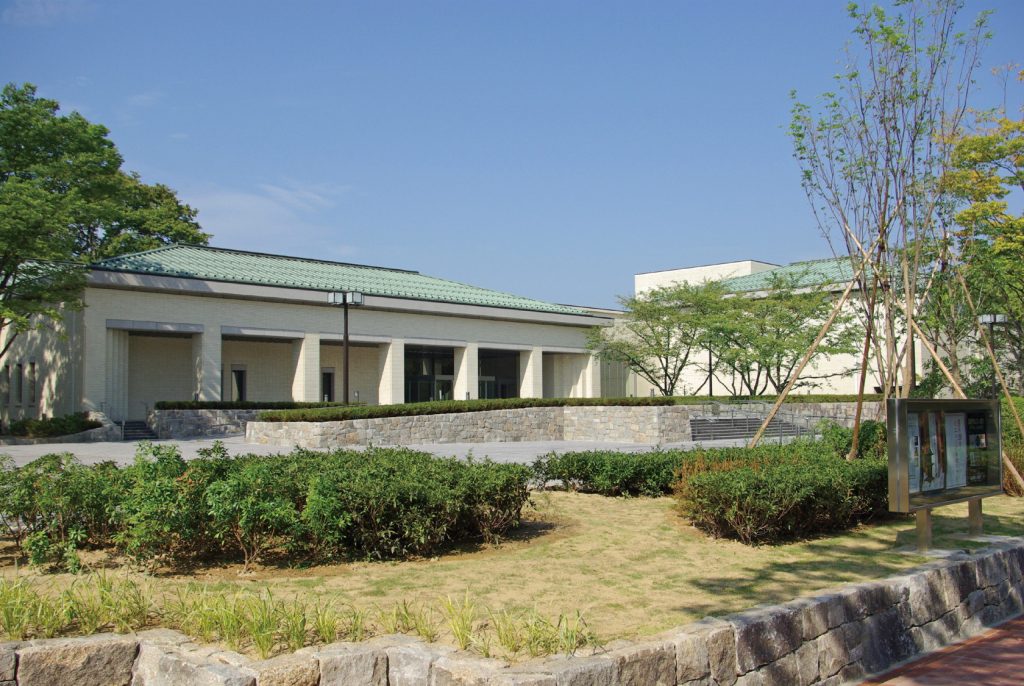
Adjoining Kenrokuen Garden, the 'Kenrokuen Cultural Zone' refers to four museums within close proximity of each other, the garden and castle, and other nearby destinations including the 21st Century Museum of Contemporary Art and DT Suzuki Museum. The four museums of the Kenrokuen Cultural Zone includes the Ishikawa Prefectural Museum of Art which exhibits thirty-six traditional crafts of Ishikawa Prefecture including lacquerware, porcelain silk-dyeing. Open everyday from 09:00 to 17:00 (other than the third Thursday of each month from April to November and every Thursday from December to March, along with New Years holidays). Admission is JPY260.
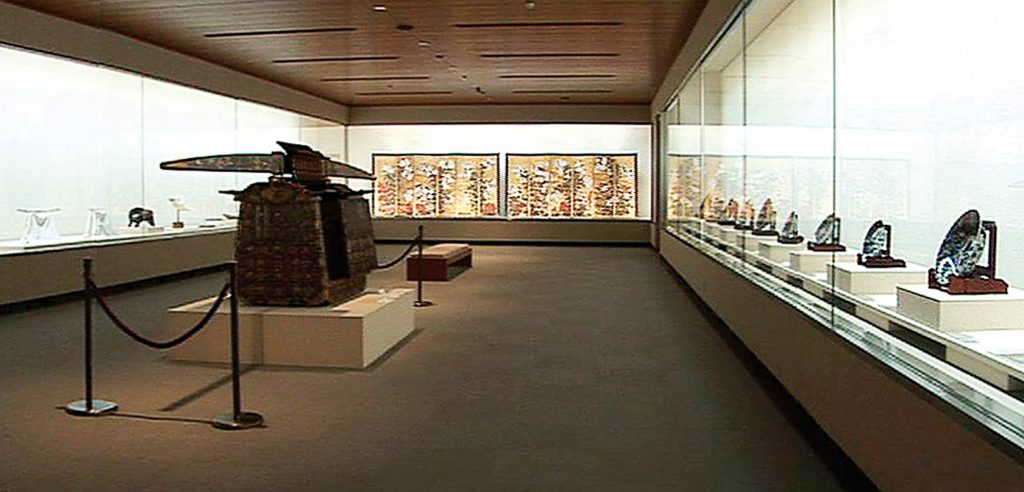
Another of the four is the National Crafts Museum. Relocated from Tokyo to Kanazawa in October 2020, the museum is the only major institute in Japan to focus solely on traditional crafts, the museum exhibits around 1900 pieces including ceramics, glass works and dyed textiles, along with more modern pursuits such as graphic and industrial design. Open everyday from 09:30 to 17:30 (other than Mondays, over the New Year Period or during installation of new exhibitions). The cost of admission varies depending on the exhibition.
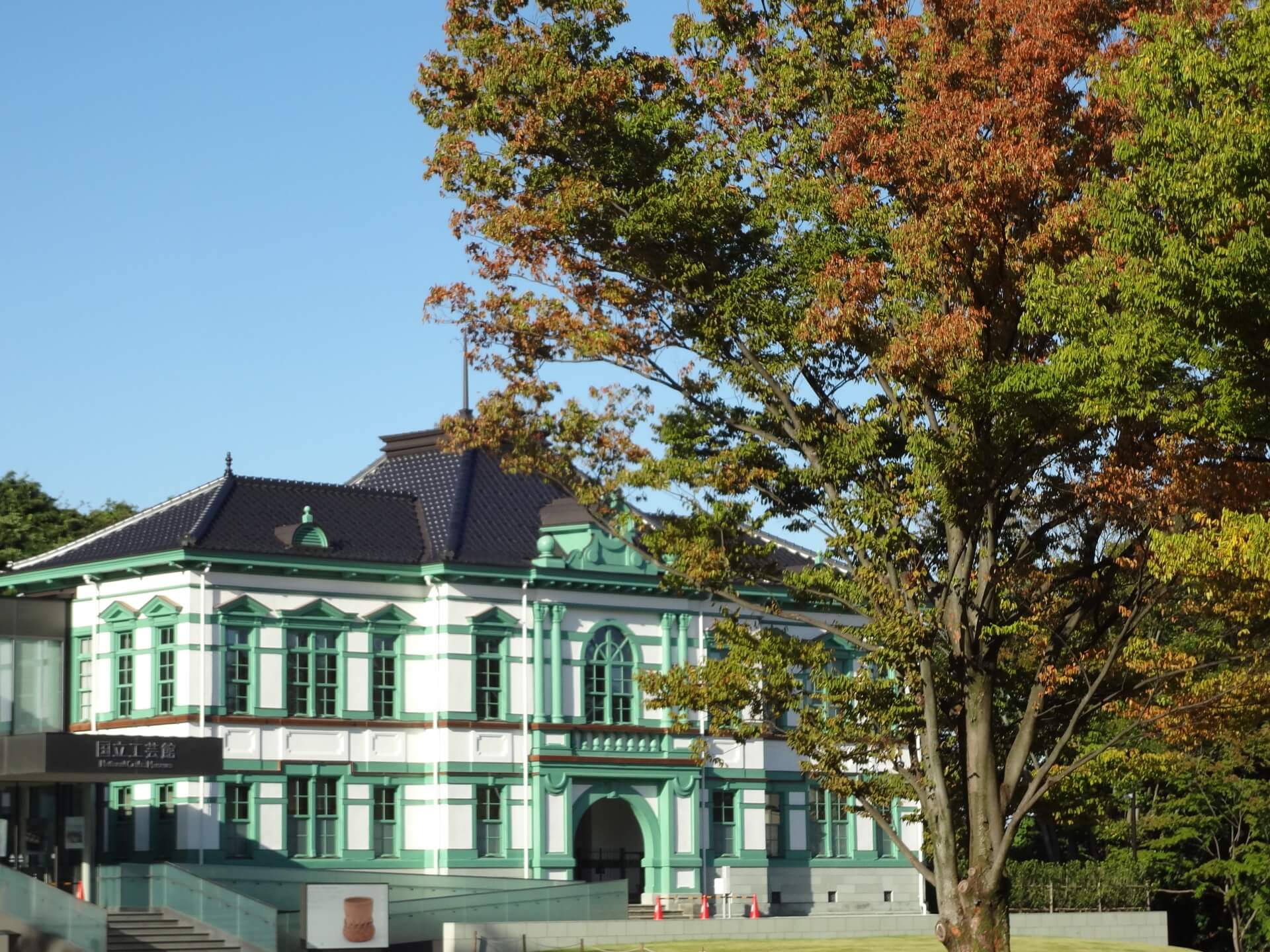
Rounding-out the four museums of the Kenrokuen Cultural Zone, the Ishikawa Red Brick Museum and Ishikawa Prefectural Noh Theater combine to create one of Japan's most engaging arts precincts. From Kanazawa Station: 40 min walk.
12 / KURANDO TERASHIMA HOUSE / all year round
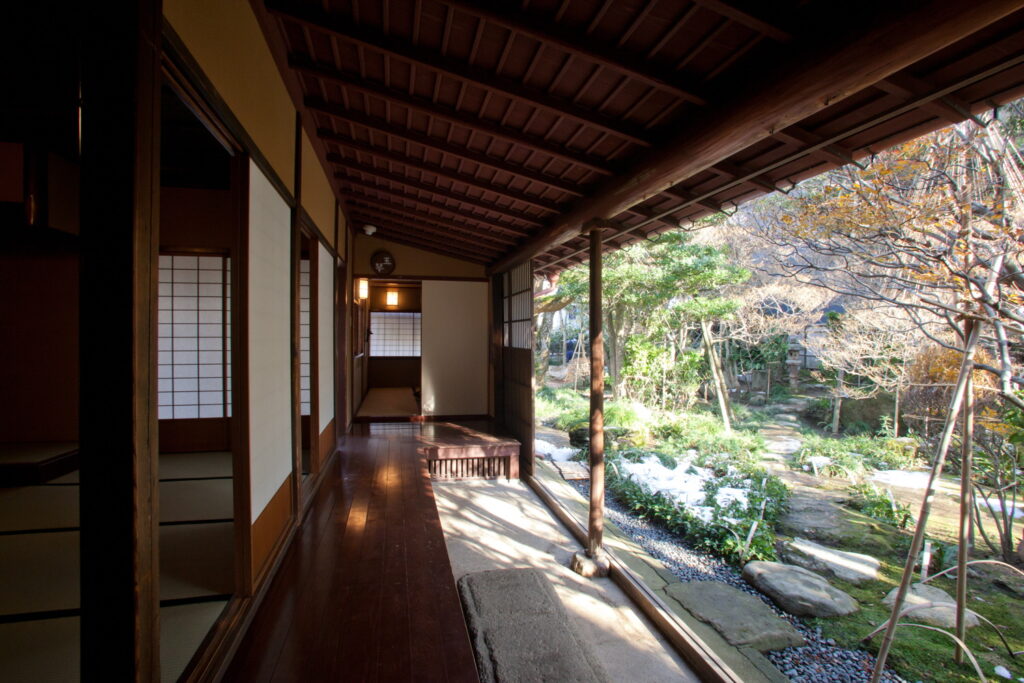
The former residence of Kurando Terashima – a middle-class samurai belonging to the Maeda clan – the house was constructed in the second half of the 18th century and offers a glimpse into the life and homes of the middle-class during the Edo Period. The house is most notable for its phenomenal garden, which can be enjoyed from a seat on the tatami mats indoors or by putting on the complimentary slippers and walking through it. Open daily from 09:30 to 17:00 (other than Dec.29 to Jan.3). Admission is JPY310. From Kanazawa Station: 25 min walk.
13 / KANAZAWA STATION AREA / all year round
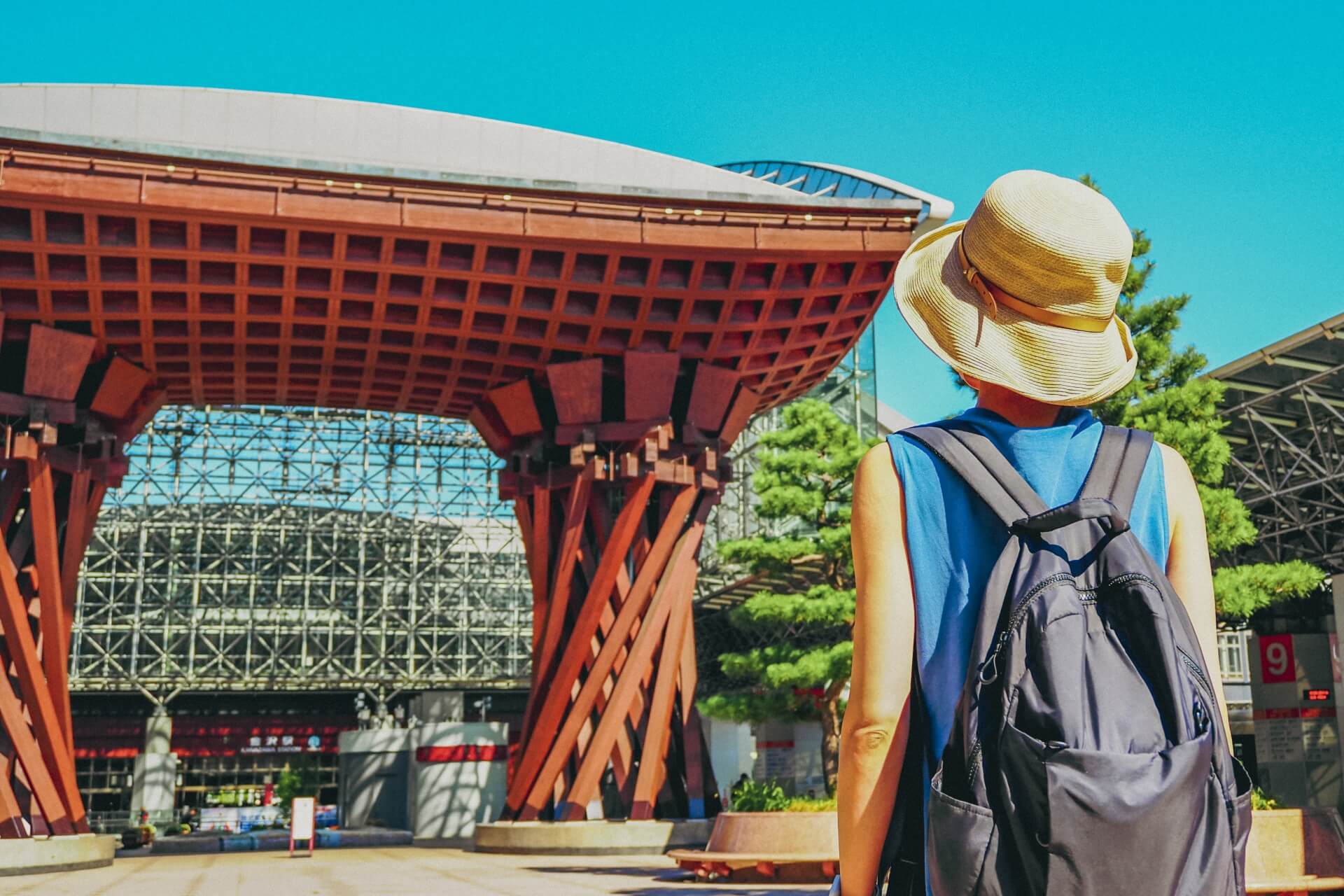
Located in the heart of the city, Kanazawa Station is your gateway to everything on offer. The station is relatively new and pleasant to spend time in. While large, it is nowhere near the size of stations in Tokyo and Osaka. It is easy to navigate yourself from one point to the next, and with lots of good shops and restaurants inside the station, it’s an excellent place to spend a few hours if transferring from one train line to another. Whether you are staying in Kanazawa or just transferring train services on your way to Nagano, Tokyo, Kyoto, etc. the station offers a good array of restaurants, cafes and shopping including good seafood and local produce.
Like most cities, the station area is the heart of Kanazawa. If you're on the hunt for the cities best photo spots, we recommend starting here. Check out our guide on the Best Photo Spots in Kanazawa for more!
14 / CHERRY BLOSSOMS / spring: late-March to April
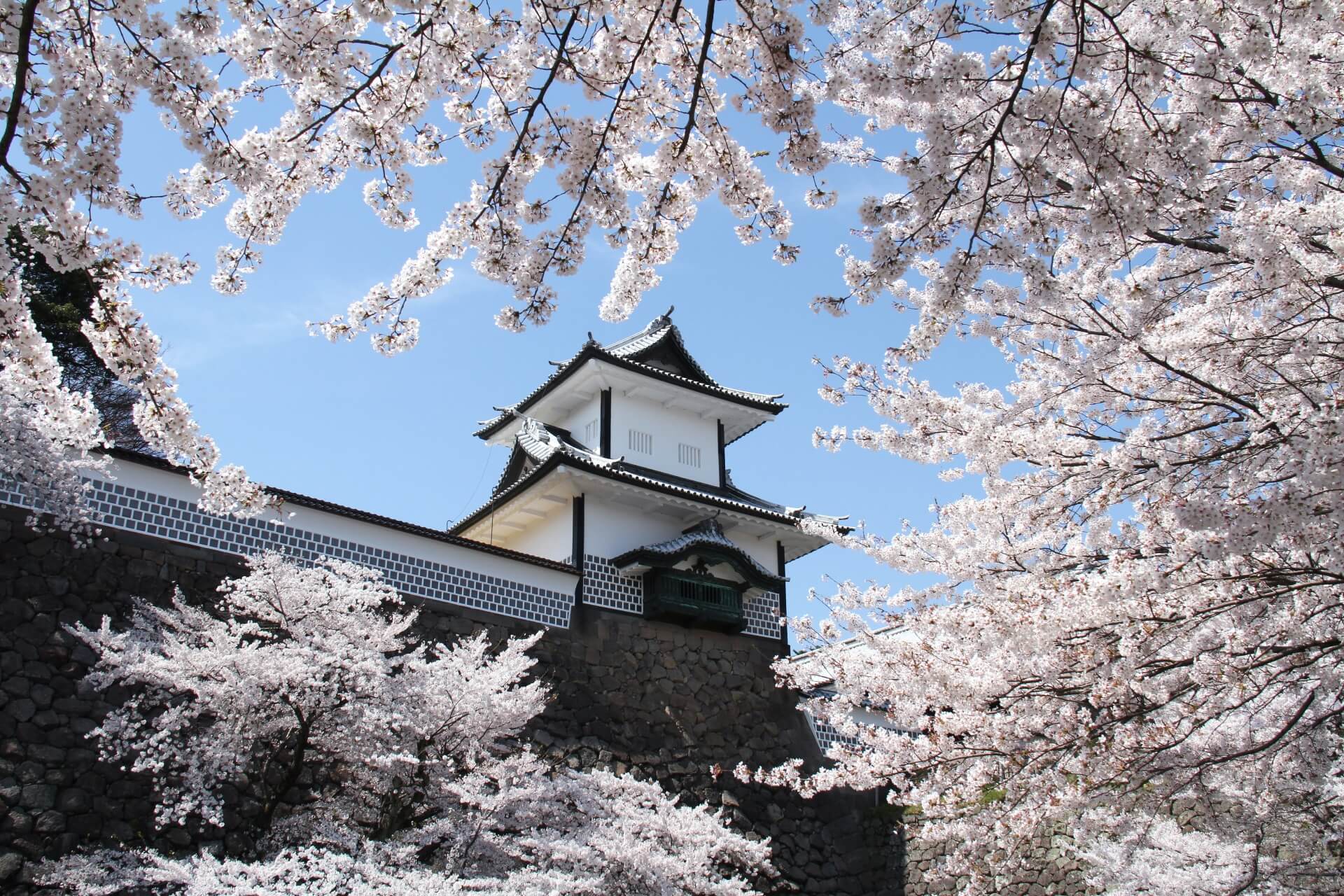
Blooming every April, the cherry blossoms of Central Japan transform the atmosphere and character of the region and banish all thoughts of winter. Known as ‘sakura’ in Japan, the blossoms are viewed as symbolic of the fleeting beauty and fragility of life itself and Japanese look forward to ‘hanami’ (flower-viewing) each spring. Given Central Japan’s higher altitude and cooler climate, the blossoms bloom later than in Tokyo with many varieties of wild cherry trees spread throughout the mountains. Our ‘Cherry Blossoms’ page introduces everything you need to know about the importance of the flowers and where to find them in Nagano. While in Kanazawa, the blossoms can be bested enjoyed (unsurprisingly) at Kenrokuen Garden and Kanazawa Castle.
Also, don't forget to check out the regional cherry blossoms in Fukui City, Toyama City and Noto-Kashima Station in northern Ishikawa.
15 / NATADERA TEMPLE / All year round


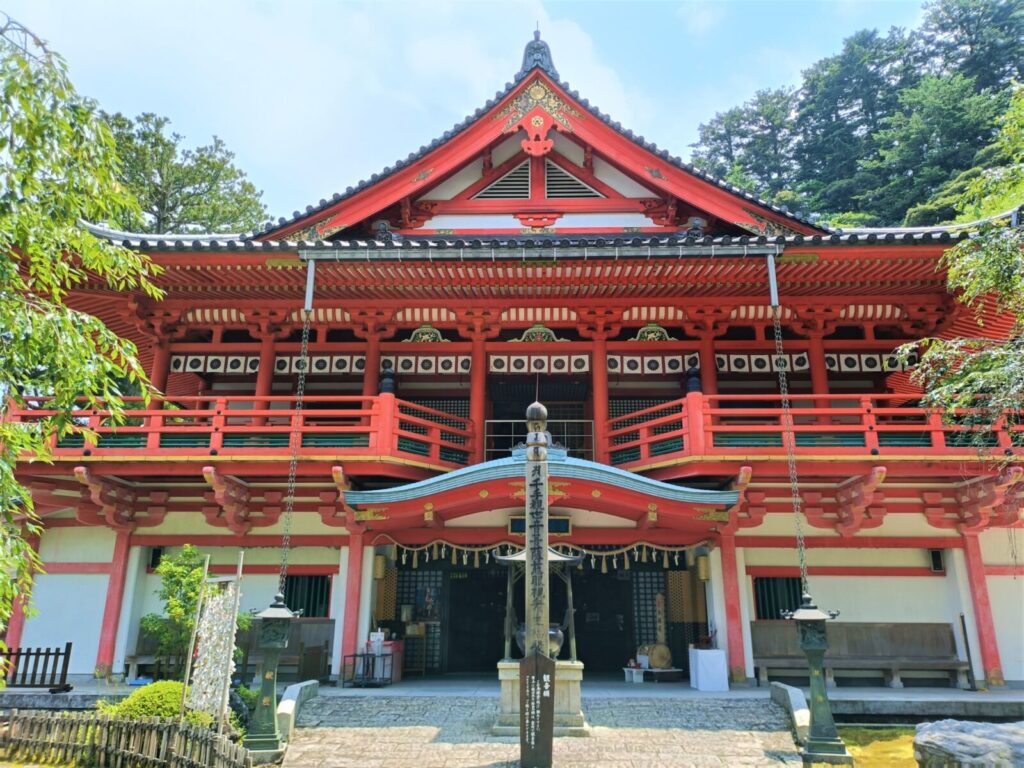
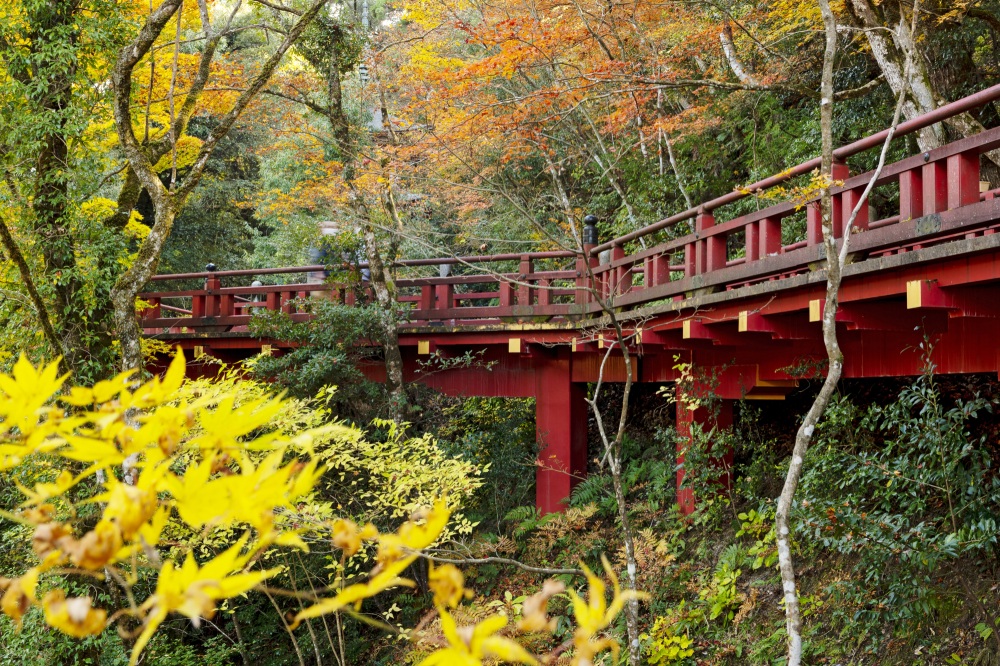
Just shy of an hour south of Kanazawa lies the sprawling temple complex of Natadera. This temple was originally associated with mountain worship, based on a cave that was said to symbolise the cycle of reincarnation and rebirth. Japan's most famous poet, Matsuo Bassho, visited the temple and wrote of its serene gardens. The attention firmly cemented Natadera as a place of special natural beauty; a reputation which continues to today.
There is no better time to take in that natural beauty than in the fires of autumn. October and November bring introduce a vibrant gradient of autumn colours in the garden, which has several viewing platforms and seating areas to take in the atmosphere.
Getting to Natadera can be a bit of a hassle, so why not check out our Beautiful Natadera Temple, Craft Village and Dance with Real Geisha in Yamanaka Onsen tour?
16 / HAKUSAN SHIRAKAWA-GO WHITE ROAD / best: July to early-November
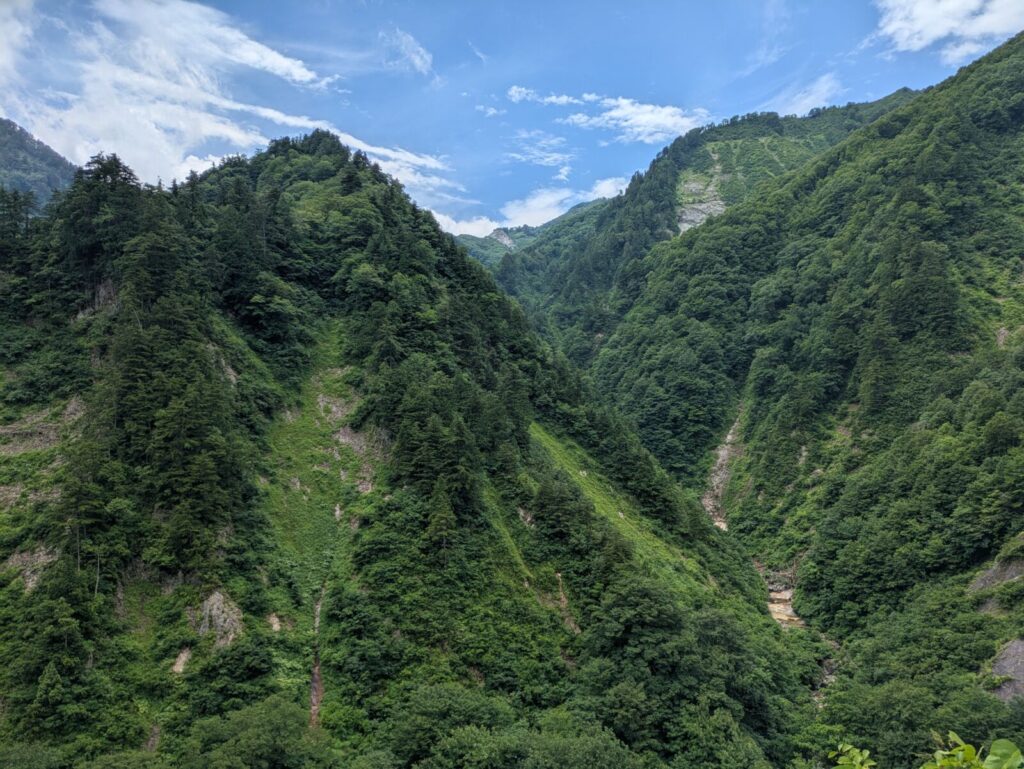
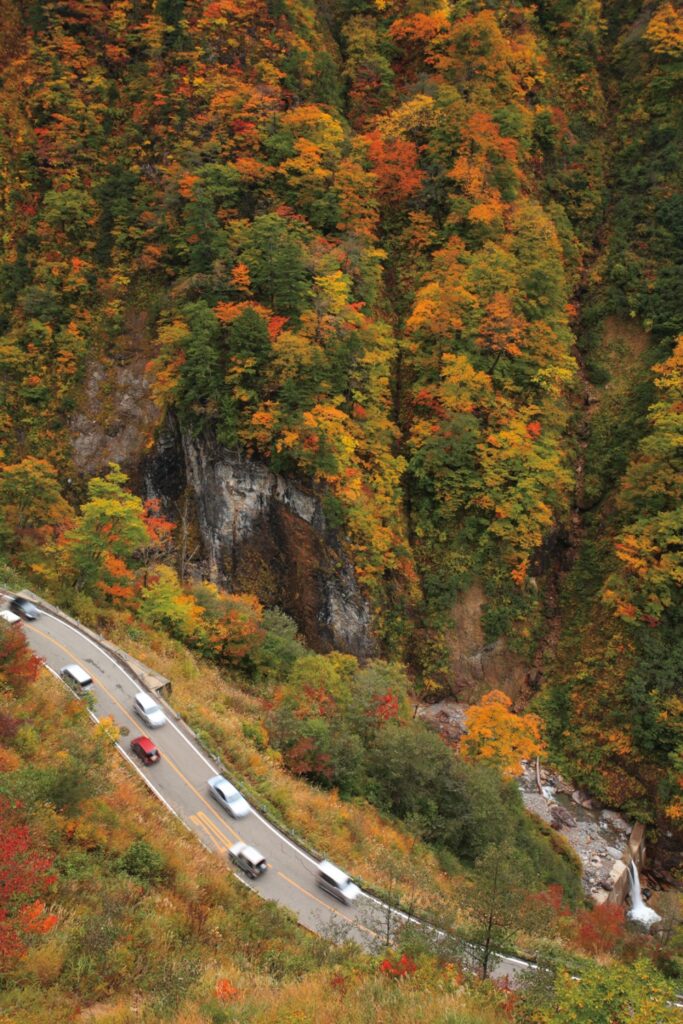
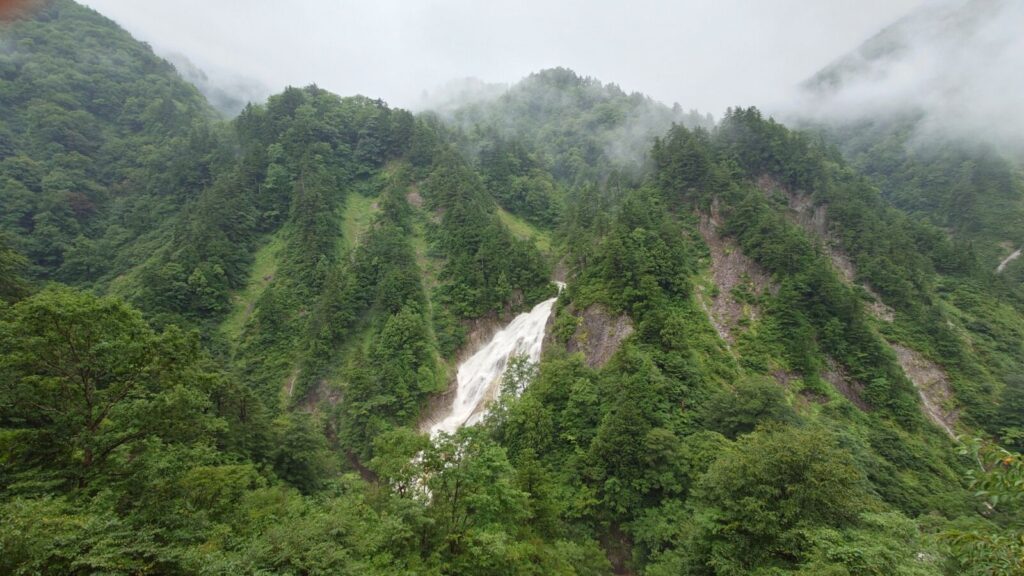
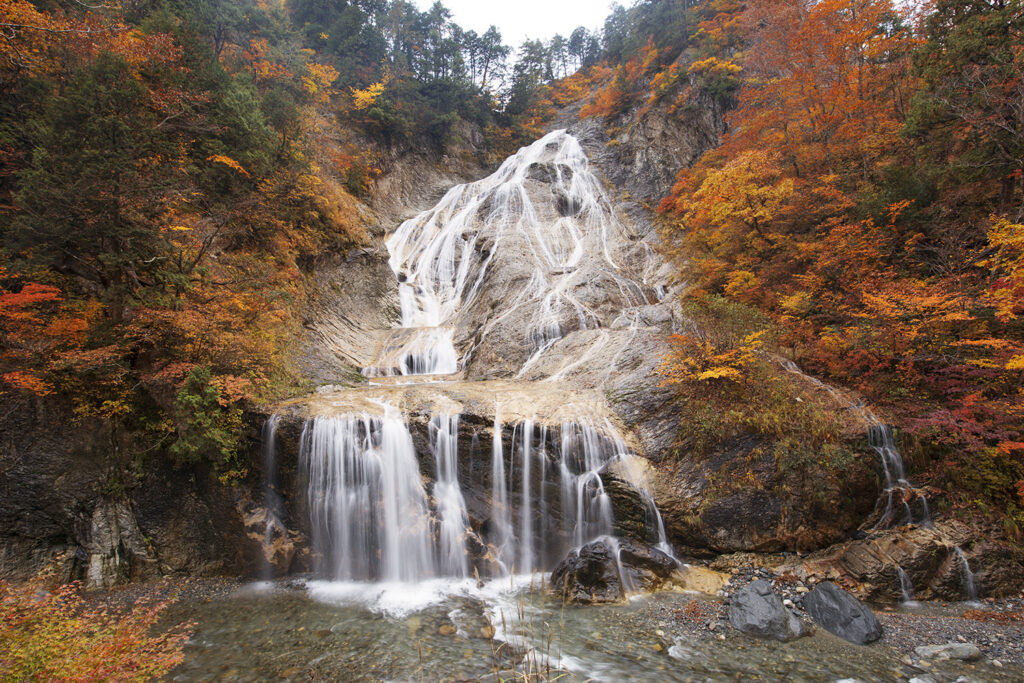
The Hakusan Shirakawa-Go White Road is a driver's dream. The winding 33km route leads through the mountainous Hakusan National Park. Like Natadera above, this area is most famous for its fall foliage. The stark difference in altitude and variety of trees - which include cedar, pine, maple, zelkova and gingko - mean there is every autumn colour imaginable!
The White Road features several stopping points to get the best views out through the valleys. These often showcase waterfalls, rock formations, trees more than 500 years old, and even just the most aesthetic views.
The White Road is only accessible by car. If you want to experience the White Road but you're anxious about renting a car while in Japan, not feeling up to reading up on the rules of the road, or simply want to just kick back for an easy day, don't miss out on our Tedori Gorge, Hakusan White Road and Shirakawago Village tour! This tour runs from July to November and is the absolute best way to take in the valley!
1 Day Tour from Kanazawa: Tedori Gorge, Hakusan White Road and Shirakawago Village
- Spots:
- KanazawaShirakawago
- Pick-up:
- Kanazawa
- Drop-off:
- Kanazawa
Entering from the Kanazawa side means you emerge at the UNESCO World Heritage Site Shirakawa-Go. so next on our list is...
17 / SHIRAKAWA-GO, GOKAYAMA & INAMI / best: June to November
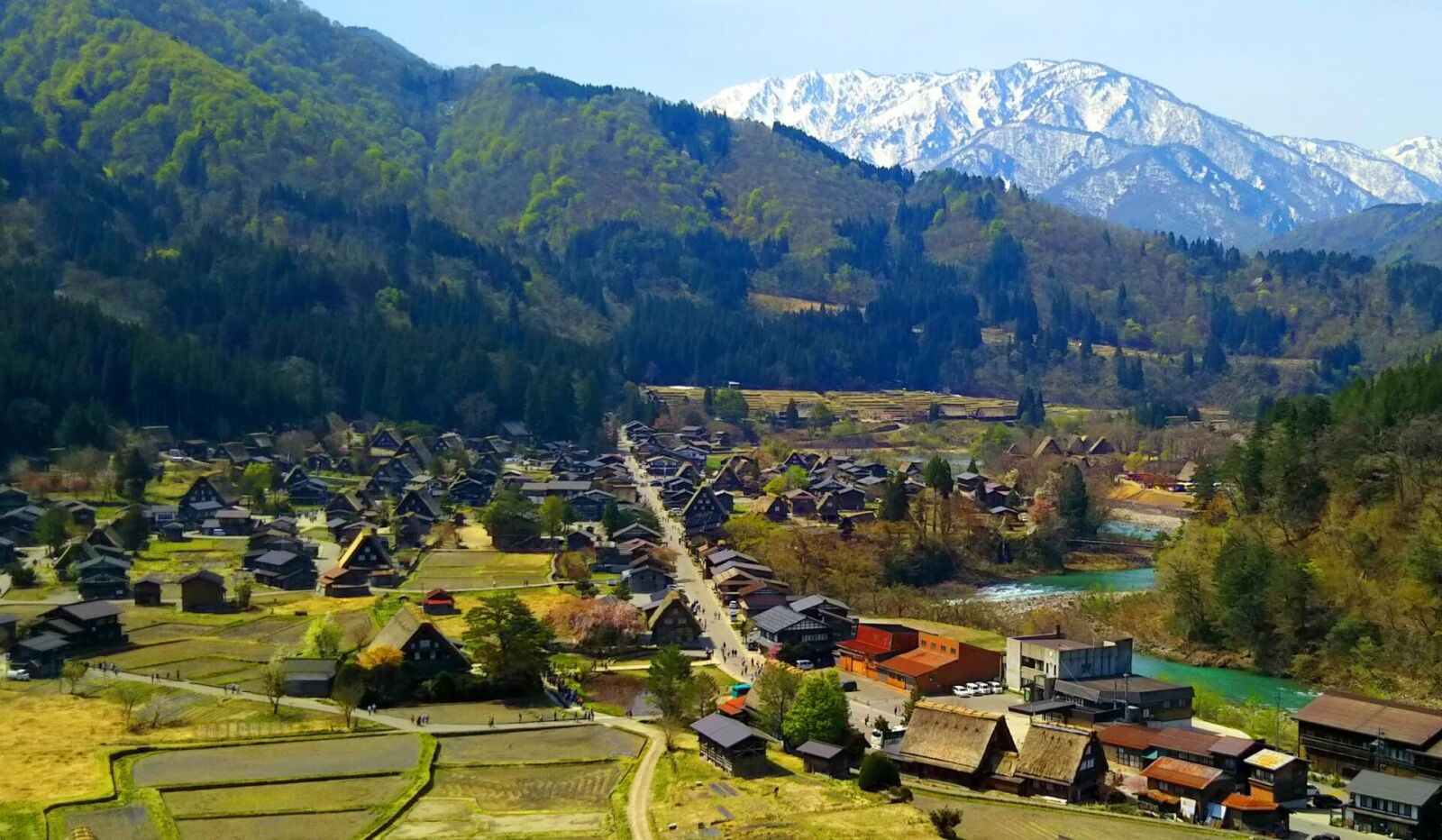
Easily accessible by bus from Kanazawa Station or train via nearby Toyama Station, the villages of Shirakawa-go and Gokayama were inscribed on the World Heritage list in 1995. Actually consisting of three villages, they are known for this distinctive ‘gassho-style’ thatch-roofed houses set in a beautiful alpine setting of rice fields and high mountains above. World Heritage-listing has ensured that the villages are hugely popular with both domestic and international tourists but don’t let that put you off. The villages are well-worth visiting and walking away for the central area of the main village of Ogimachi will quickly leave you unencumbered by other visitors. If you really want to avoid the crowds, consider heading to the other villages of Suganuma and Ainokura. Much smaller than Ogimachi they are also far less visited and offer a peaceful experience of these important rural hamlets.
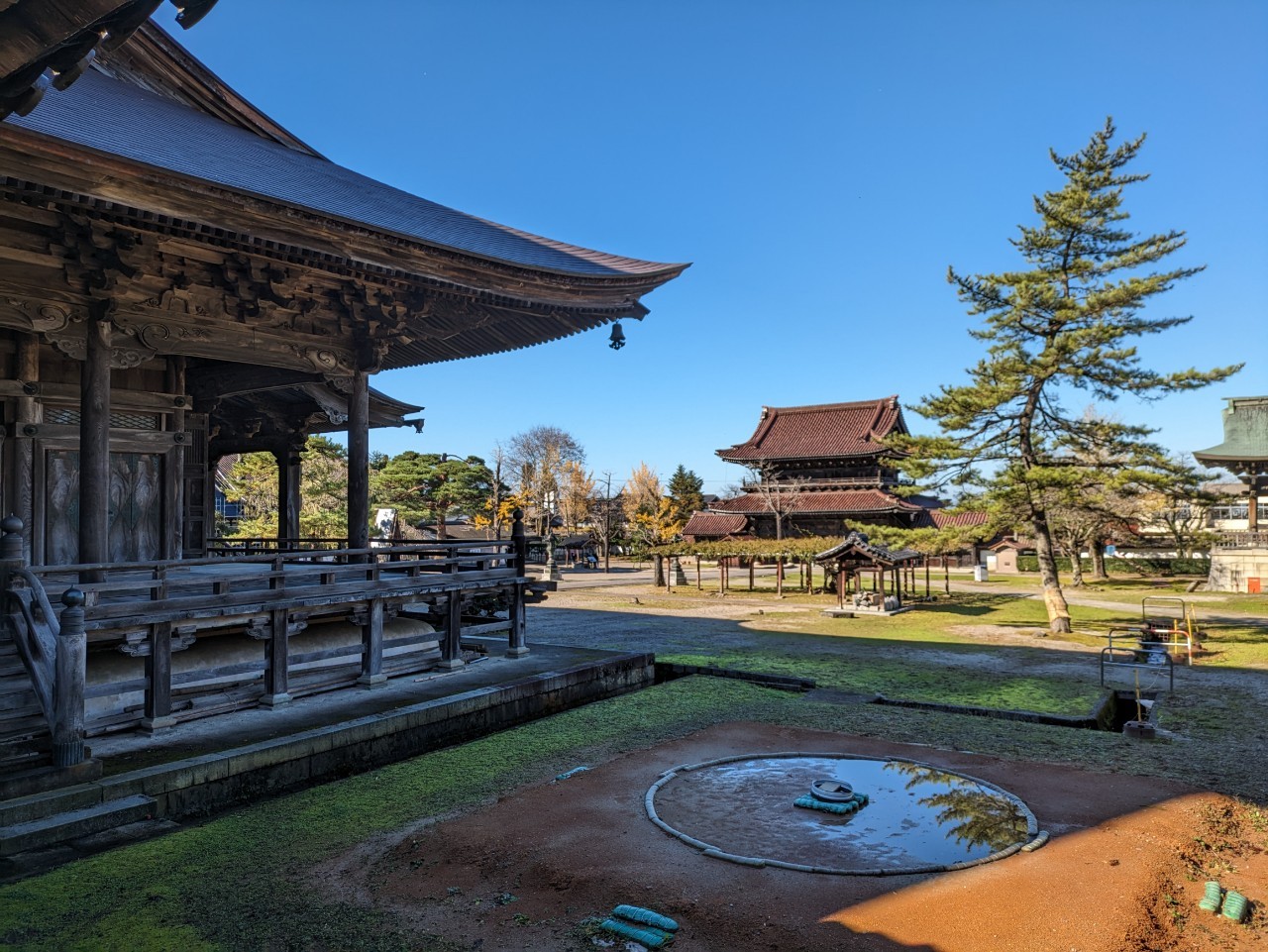
Inami is famous for its woodcarving and there are over 100 professional traditional woodcarvers in the area, mostly on the main street. That main street leads towards the centerpiece of Inami, Zuisenji Temple and has many beautiful wood-carvings. Not only in the temple itself but in the shops around it. If you search, there are over 30 cute wooden cats around the town. Zuisenji Temple is a magnificent example of master woodcarving, with some of the carvings being over 200 years old.
It is often difficult to combine Shirakawago, Gokayama and Inami when traveling on your own. Try one of our tours where you can see these three villages and can even end the tour in Takayama!
Best Selling
1 Day Tour from Kanazawa: Shirakawa-go, Gokayama and Wood Carving Village
- Spots:
- KanazawaShirakawago
- Pick-up:
- Kanazawa
- Drop-off:
- TakayamaKanazawa
18 / A DAY AT THE BEACH / Summer
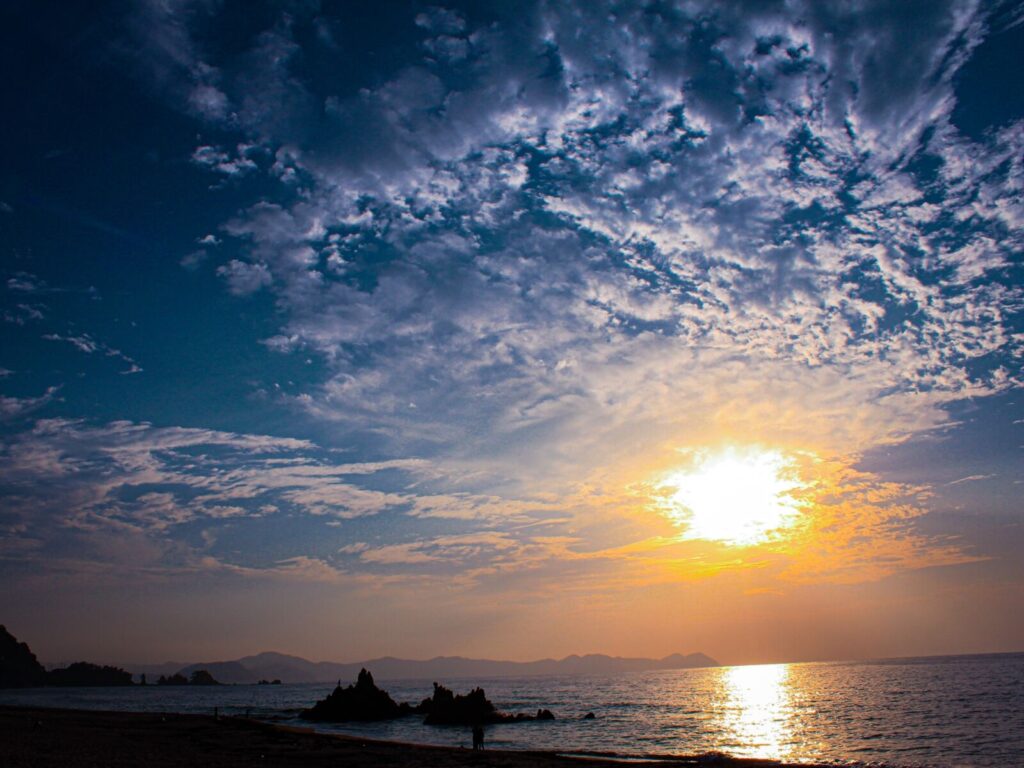
Kanazawa is, at times, one of the hottest areas of Japan and the summer heat can be baking. Thankfully, the city is well-placed to easily get to the beach. From Kanazawa Station, you can arrive at Uchinada Beach in just under an hour. In summer, there are a number of stalls and cafes to help you get set up. Don't forget sun cream!
If you've rented a car for the White Road and are looking to flex your motor-muscles, then Chirihama Beach is the perfect place for you! It is Japan's only driving beach, so you can let loose on the sands over the 8km course, then take a dip in the ocean to cool down afterwards!
If you're interested in taking a trip to the beaches near Kanazawa, check out our Best Beaches Near Kanazawa and Fukui guide for more information!
Around one hour from Shirakawa-go and Gokayama, the historic old town of Takayama is another popular destination. Famous for the excellent preservation of its Edo Period (1603-1868) historic center, Takayama draws large crowds. Much like Shirakawa-go, be prepared to share the streets with many other visitors. Try to avoid the middle of the day - between 11:00 and 15:00 - when large tour buses arrive and crowd the small historic area with tourists.
Join one of our tours and dive deep into the history of this traditional gem in the mountains. Go beyond just the center of town and wind your way around the beautiful streets to temples and shrines at the base of the ever-present eastern mountain.
19 / TAKAYAMA / all year round
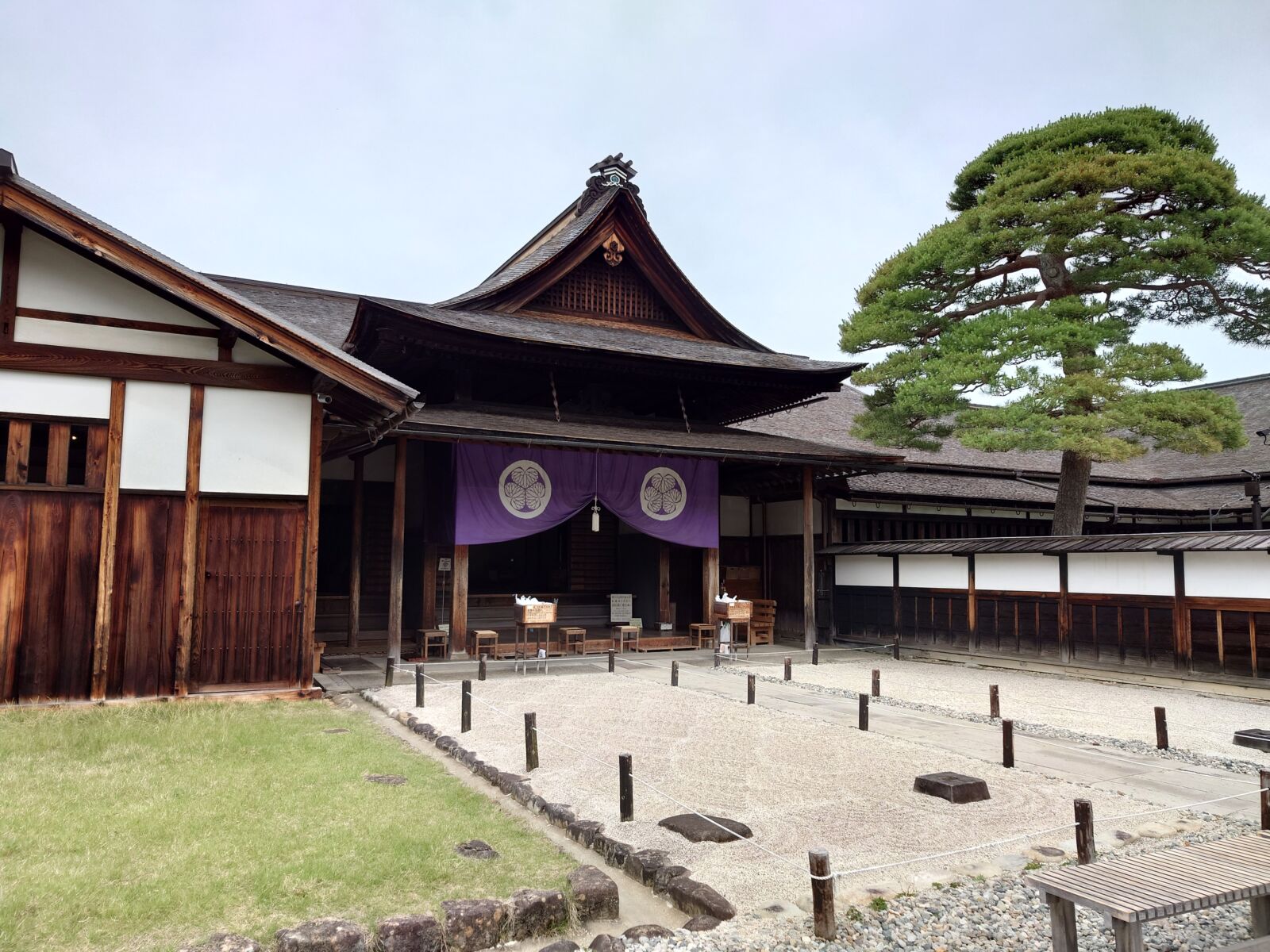
Around one hour from Shirakawa-go and Gokayama, the historic old town of Takayama is another popular destination. Famous for the excellent preservation of its Edo Period (1603-1868) historic center, Takayama draws large crowds. Much like Shirakawa-go, be prepared to share the streets with many other visitors. Try to avoid the middle of the day - between 11:00 and 15:00 - when large tour buses arrive and crowd the small historic area with tourists.
Join one of our tours and dive deep into the history of this traditional gem in the mountains. Go beyond just the center of town and wind your way around the beautiful streets to temples and shrines at the base of the ever-present eastern mountain.
20 / AROUND TAKAYAMA / all year round
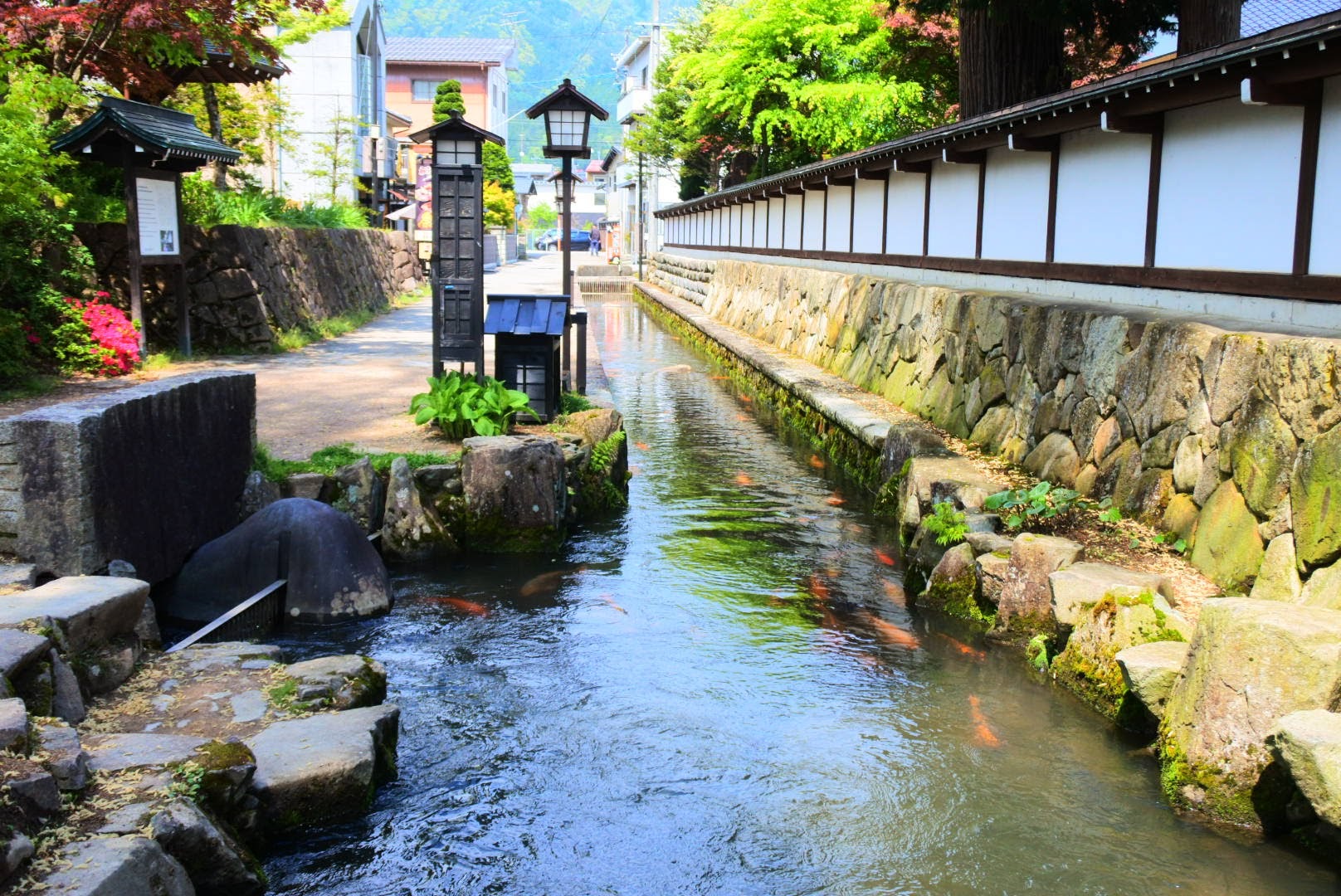
Although the city of Takayama has plenty of excellent historical and cultural sites, the greater region around it can be just as amazing. A short distance from Takayama Station is Hida-Furukawa and its beautifully preserved traditional streets and streets. Don’t forget to find all the koi fish swimming in the waterways and on many of the buildings around the area. Gero Onsen, south of Takayama, is another excellent getaway if you want to experience one of the largest and most popular onsen towns in Japan. To the east of Takayama is the Shinhotaka ropeway, with its stunning views of the Central Japan Alps, the Hida Limestone Caves and the bear sanctuary. Don’t forget to check out Gujo and Kamikochi as well!
If you are interested in seeing what we have available in the Takayama area, please check out our Top Tours in Takayama page. Takayama is about 2-4 hours from Kanazawa by bus or train.
Recommended
1-Day Tour from Takayama: Hida's Hidden Gems - Hida Folk Village, Limestone Caves and the Shinhotaka Ropeway
- Spots:
- TakayamaShinhotaka
- Pick-up:
- Takayama
- Drop-off:
- Takayama
21 / TAKAOKA / all year round
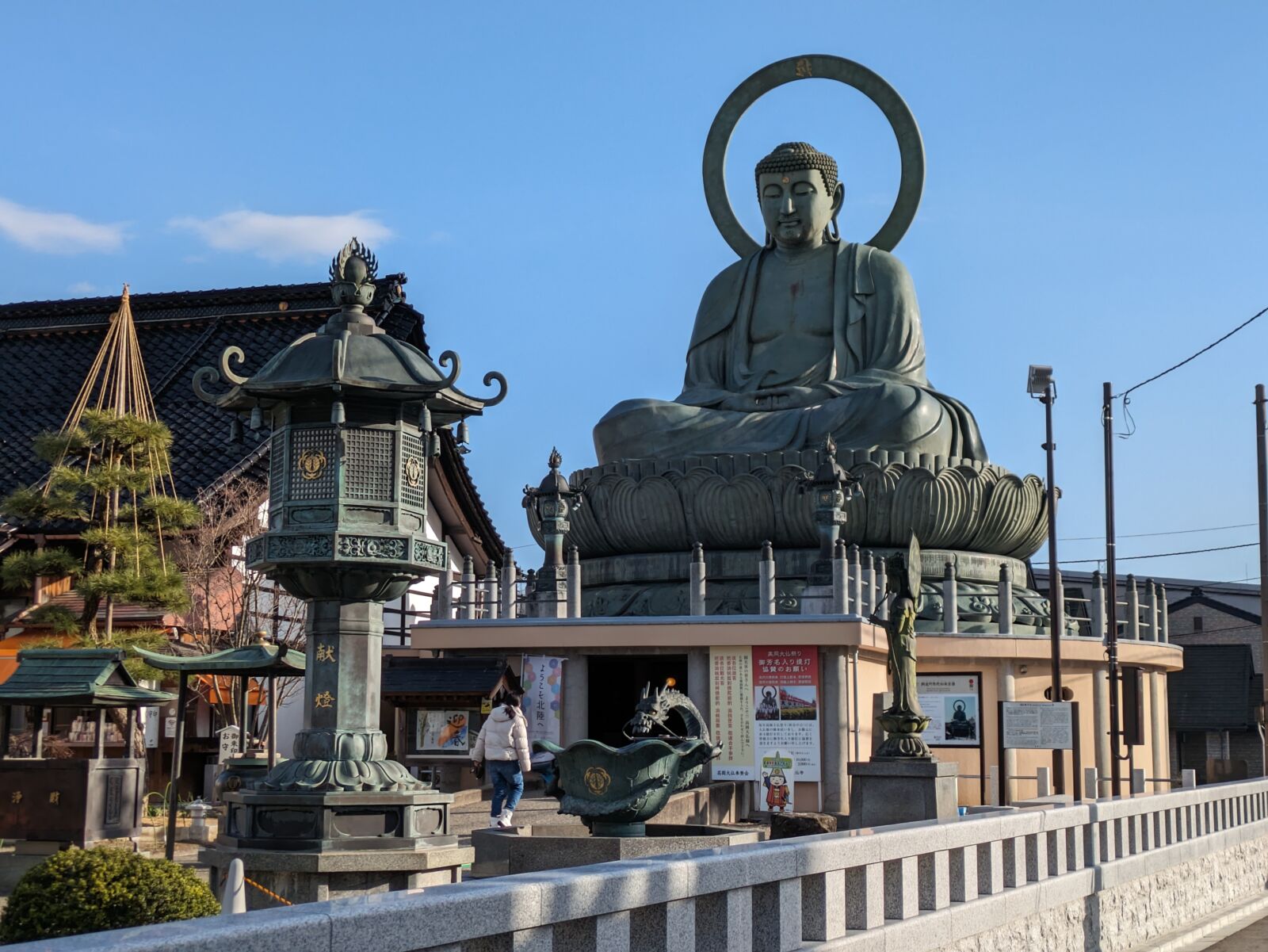
About 30 minutes east of Kanazawa, about 30 minutes north of Shirakawago and abutting the remarkable Toyama Bay, Takaoka is a city with a diverse history of over 350 years. Known as the “Kitchen of Kanazawa”, it produced large amounts of food, metal working and pottery. As the second city of the Kaga Domain, much wealth was poured into the city, mostly in the form of building great temples. Two of those great temples, Zuiryuji and Shokoji, still remain and are considered National Treasures. The views across the Toyama Bay of the Tateyama mountains are truly stunning. The small rocky islands against the snow-capped mountains are especially beautiful.
If you are looking for a way to see it all, join us for our Takaoka tour. You can even do some of the famous Takaoka metalworking and take it home afterwards.
22 / TATEYAMA-KUROBE ALPINE ROUTE / April to November
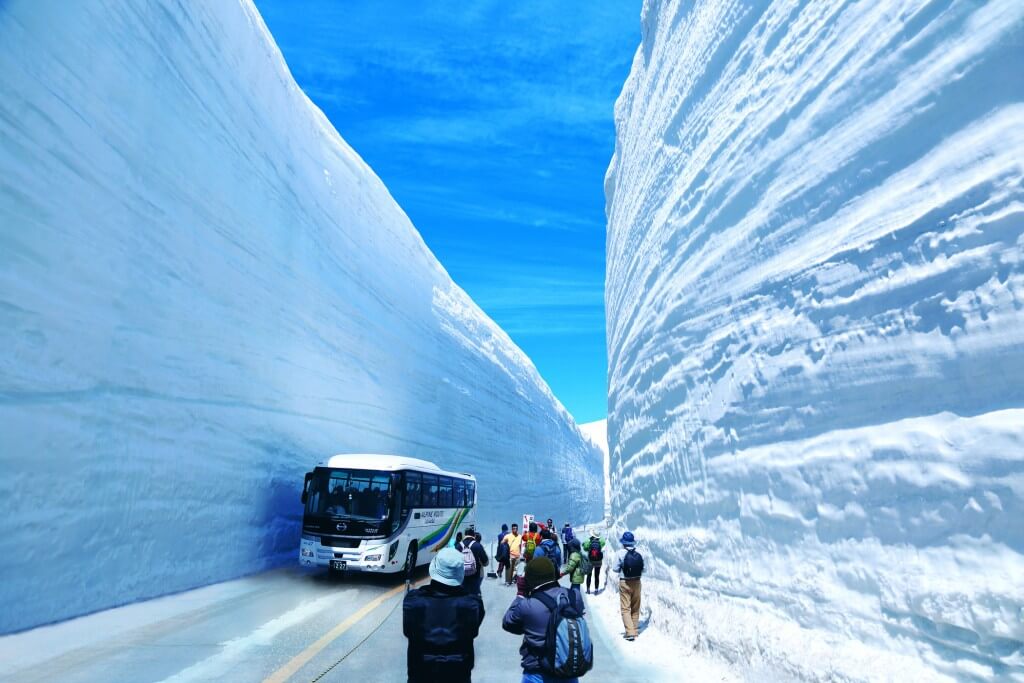
Continuing another hour east from Takaoka, it's an easy onward journey to the Tateyama-Kurobe Alpine Route. Heralded as one of Japan’s best experiences, traversing the Alpine Route takes approximately 6 hours without allowing for time to stop and enjoy all of its stunning sights. In reality, undertaking a visit to the Alpine Route is therefore a full-day activity. Visitors can start from Toyama via Tateyama Station or Nagano via Ogizawa Station, and choose to finish on the other side or return to their point of origin. A series of mountain transports including trolley buses, cable cars, a ropeway, and coaches transport visitors to and from Murodo Station – which at 2540 meters is the highest station in Japan.
Recommended
1 Day Tour from Kanazawa or Toyama: Tateyama Alpine Route Snow Wall and Mysterious Valley
Best Selling
[Spring Only] 1-Day Tour from Nagano: Snow Walls of Tateyama-Kurobe Alpine Route
- Spots:
- NaganoAlpine Route
- Pick-up:
- Nagano City
- Drop-off:
- Nagano City
Open from mid-April to mid-November, the Alpine Route is most famous for its immense snow walls which, at their peak, ascend 20 meters above the road below. The walls are at their best from the opening day in April until late-June, after which outstanding hiking is available through summer and autumn, climaxing with stunning autumn colors in October until the route closes again in November. On the way, you can also catch sight of the famous Shomyo Falls, the tallest waterfalls in Japan.
23 / KUROBE GORGE & UNAZUKI ONSEN / best: June to November
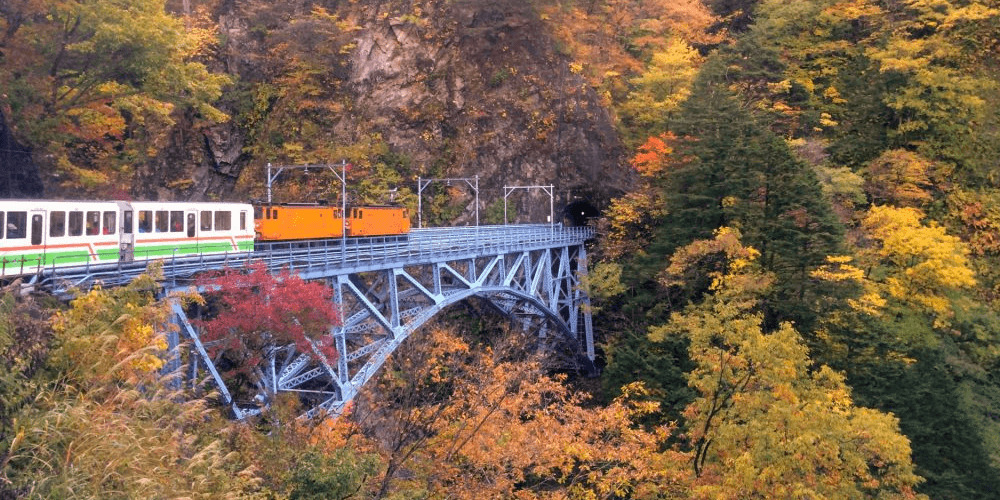
An hour east of Takaoka and not too far from Tateyama Station lies a small beautiful onsen town sitting at the entrance of an even more amazing sight, Japanese deepest V-shaped gorge, Kurobe Gorge. In this area you can see foot baths and healing buddhas, ride on the trolley train across spectacular gorges and finally walk in nature with onsen water rivers. If you are more into Taisho-era architecture than the streets of Unazuki Onsen are more for you. Stroll in a yukata as you take a dip in the famous waters. City and scenery, bridges and buddhas, trolley trains and quaint walks, fully enjoy a lesser traveled part of Japan in Unazuki Onsen and the Kurobe Gorge!
1 Day Tour from Kanazawa: Kurobe Gorge and Unazuki Onsen
- Spots:
- KanazawaKurobe Gorge
- Pick-up:
- Kanazawa
- Drop-off:
- Kanazawa
24 / TOYAMA / all year round
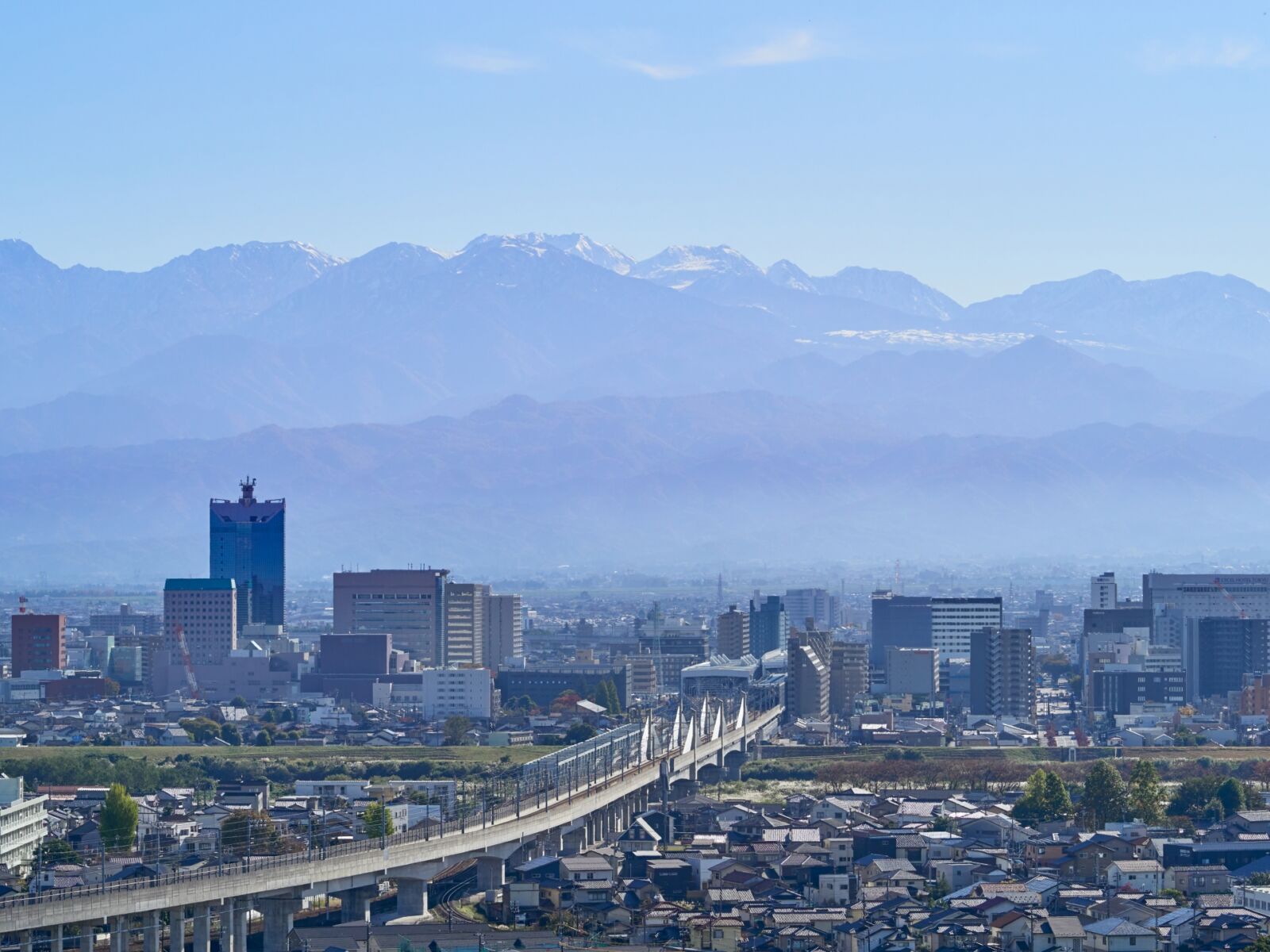
The capital of Toyama prefecture and in the middle of Takaoka, Tateyama-Kurobe Alpine Route and the Kurobe Gorge, the coastal city of Toyama can be reached using the Hokuriku Shinkansen service bound for Nagano and Tokyo. Located nearby Toyama Bay, the region is known throughout Japan for its fantastic seafood. One of the great pleasures of visiting the city is trying its famous seafood, best experienced at the seafood markets on the coast or at one of the many seafood restaurants dotted throughout the city. Toyama is a modern and youthful city without the crowds of nearby Kanazawa making it an attractive and convenient option for many travelers.
25 / NOTO PENINSULA / all year round
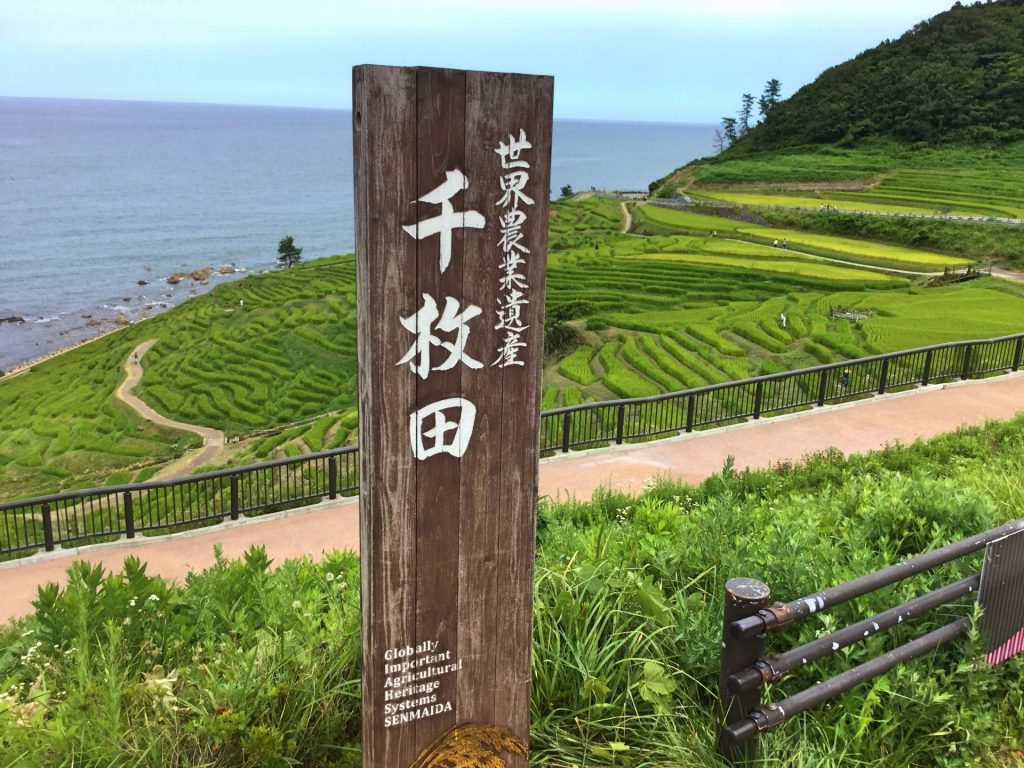
A short train or bus ride to the north of Kanazawa, the Noto Peninsula is not well-known to international visitors. Extending 100 kilometers into the Sea of Japan, Noto Peninsula is relatively isolated and almost forgotten. A place of tremendous beauty including rugged coasts and lush forests, the area has not developed to the extent of other regions of Japan and as such, offers visitors escape, solitude and pristine beauty. Coastal roads allow for scenic drives while just inland from the sea, rural villages ago about their daily lives with a strong sense of tradition. Needless to say that any visit to the peninsula basically obliges you to try plenty of seafood which is unsurprisingly pretty amazing.
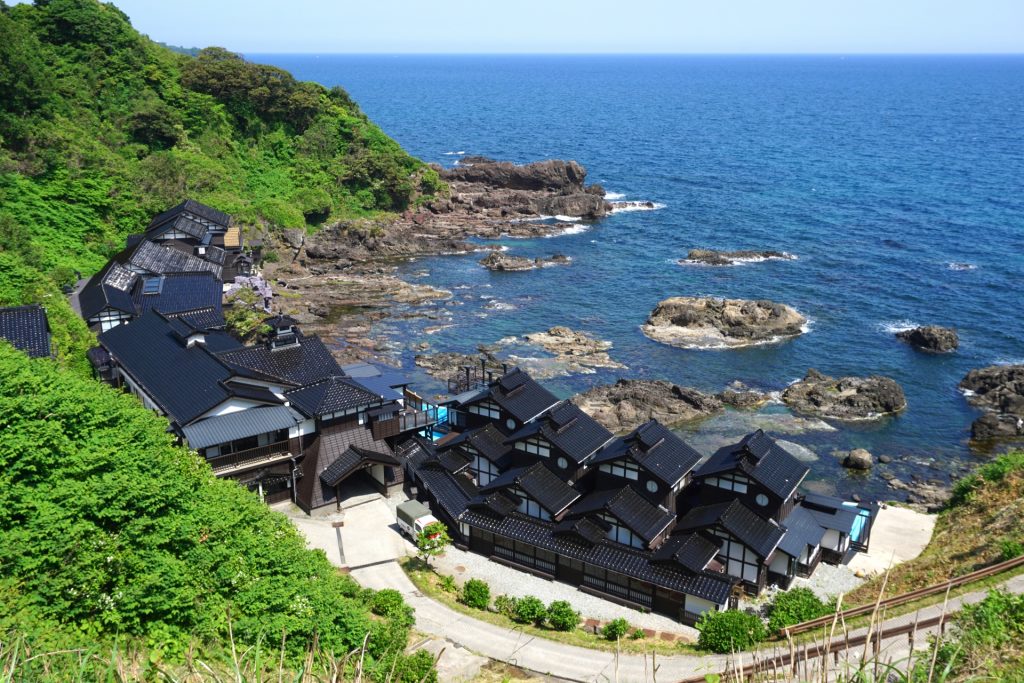
A lack of public transport in and around the Noto Peninsula also helps to keep visitor numbers down, requiring you to arrange a rental car to really make the trip worthwhile. Avoid August, when Japanese school children enjoy their summer holidays and areas of the peninsula will be buys with holidaying families. Otherwise, rent that car and get going – we highly recommend it.
26 / HAKUI / best: April to November
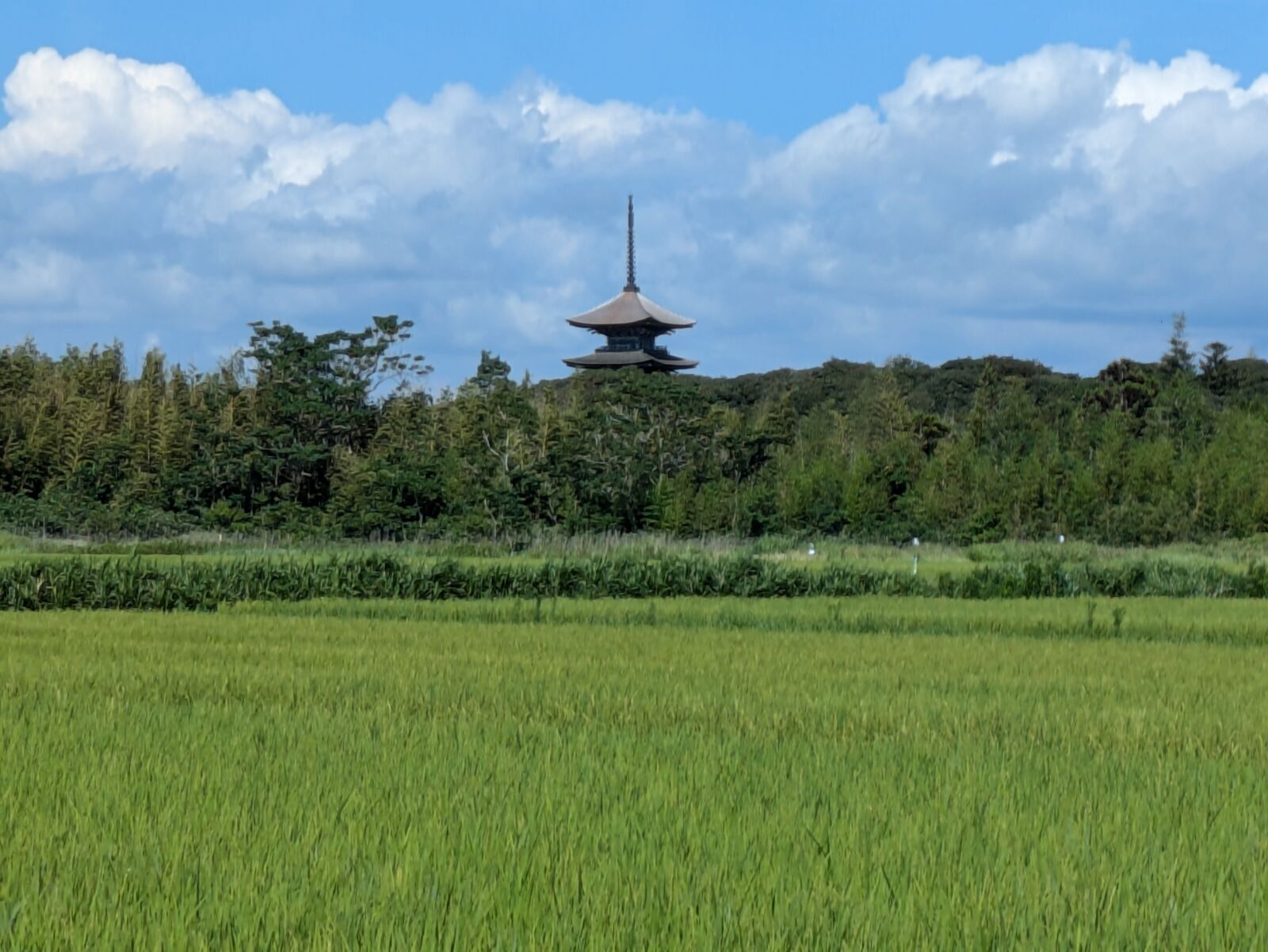
In the southern park of the Noto peninsula is the city of Hakui. A short train 30 minute train ride on the limited express train, it punches way above its weight. The natural beauty of Chirihama Beach, the only one in Japan that you can drive on, extends for kilometers in both directions. If you are looking for history and culture, Myojoji Temple and Noto Ichinomiya are perfect stops. Myojoji Temple was founded in the 1200s and the current buildings are over 400 years old. Modern cosmology is also featured in the city with the Cosmo Isle Museum. There are real spacecraft that were used on space missions by the US and USSR that you can see, very unusual for museum in the middle of the Japanese countryside. This little city is a true tour de force of tourist attractions.
If seeing nature, historical and modern sights in a location rarely traveled to by foreign tourists, check out our Hakui Tour below!
27 / HAKUSAN NATIONAL PARK / best: June to November
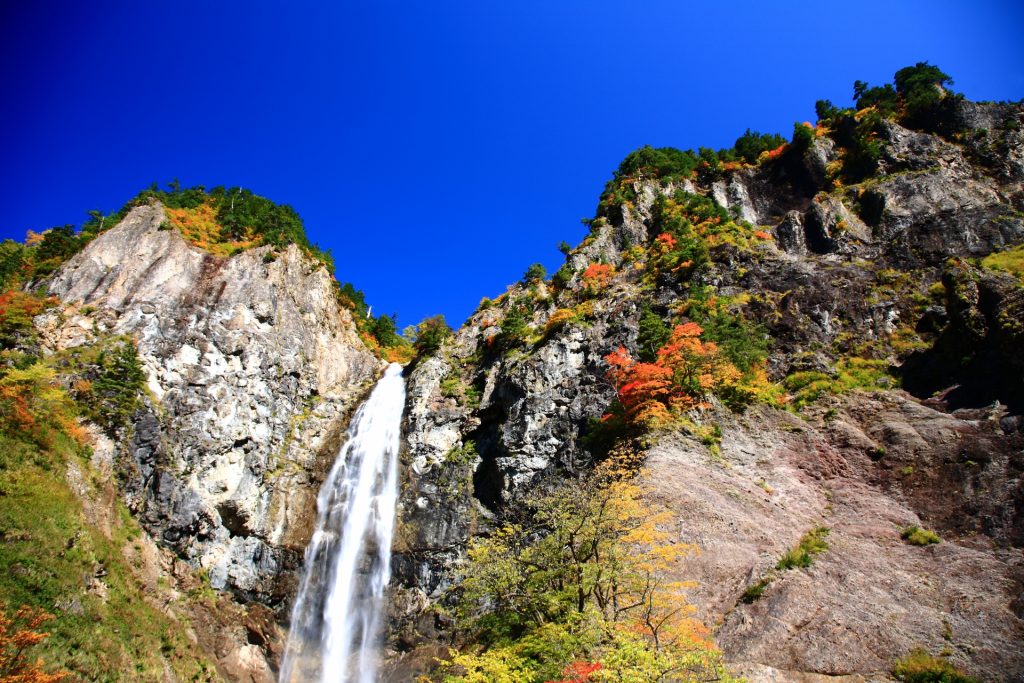
As we now continue to the southwest of Kanazawa, Hakusan National Park covers a total area of 47,700 ha and is home to Mount Haku – one of Japan’s three sacred mountains – and a stunning landscape, rich in flora and fauna. Known for its seasonal beauty and excellent mountaineering and hiking, The park extends across four prefectures – Ishikawa, Fukui, Gifu and Toyama – and is accessible from Kanazawa in around 60 minutes (by car). Visitors in Kanazawa heading to the World Heritage villages of Shirakawa-go and Gokayama should consider making the journey by rental car, and in doing so, navigate the ‘Hakusan White Road’ across the national park.
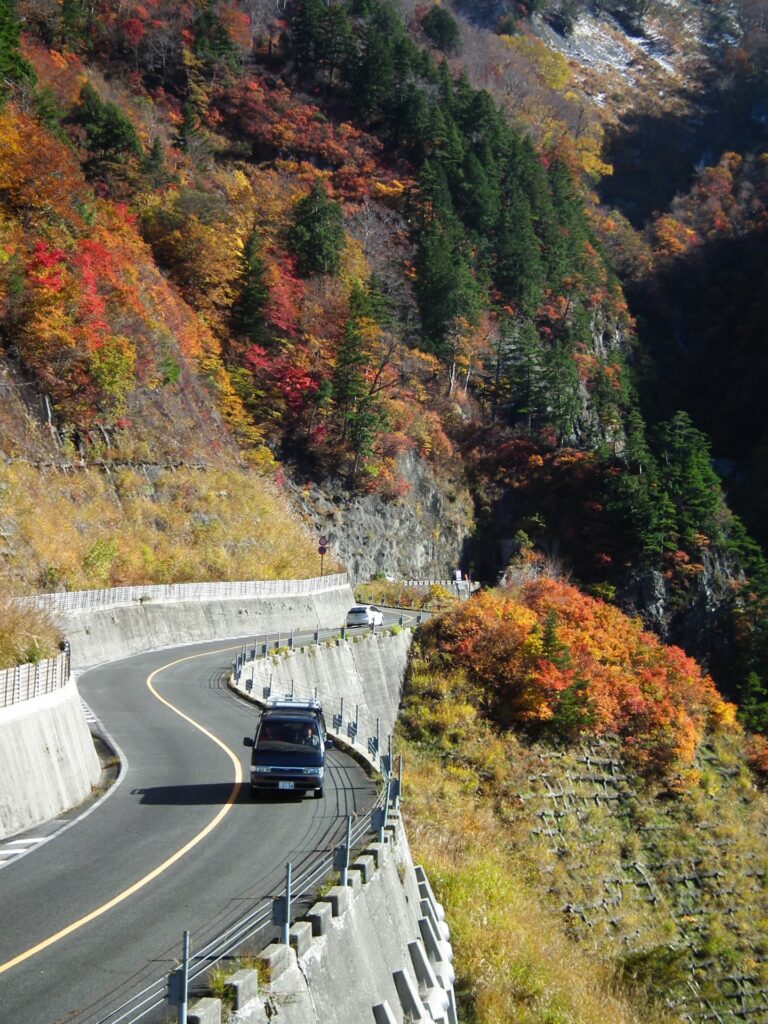
Stretching 33km from Ishikawa Prefecture to Shirakawa-go in Gifu Prefecture, the road ascends to 1400 meters above sea level, offering beautiful views of the pristine landscape. The road is well-maintained and comfortable to drive, with viewing-points, walking trails and the occasional restaurant or drinks stand along the route.
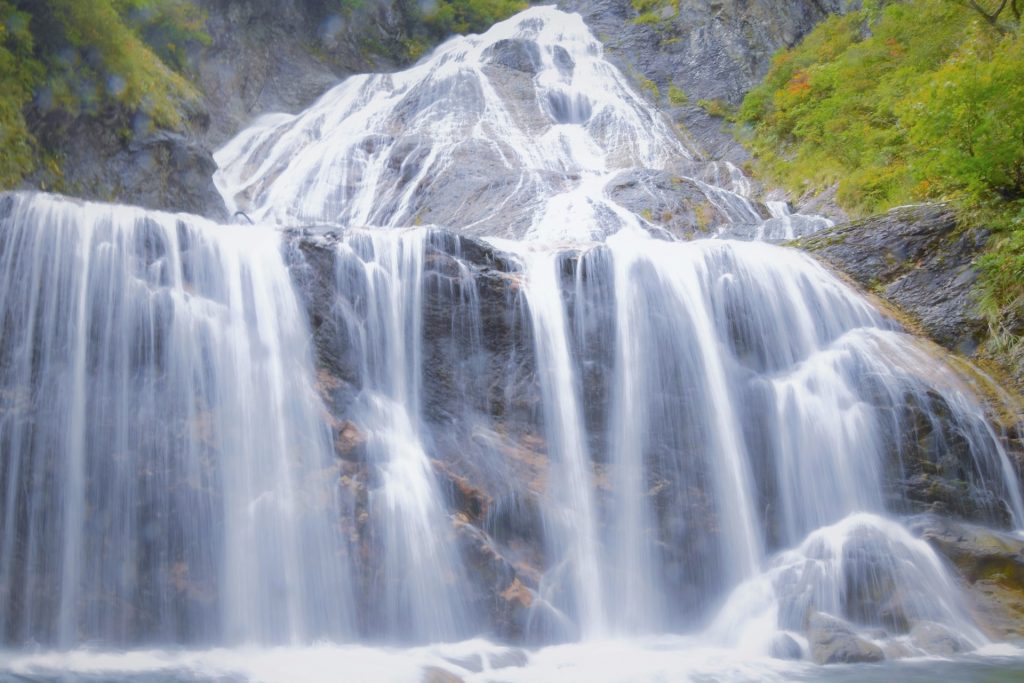
The road takes around 60 minutes to go from one side to the other (without stopping) and is only open 07:00 to 18:00 from June to August and 08:00 to 17:00 from September until November 10th. From that date onward until the end of May the road is closed to public traffic. Tollgates at either end of the road charge JPY1700 one-way or JPY2600 for a round-trip.
28 / KAGA ONSEN / all year round
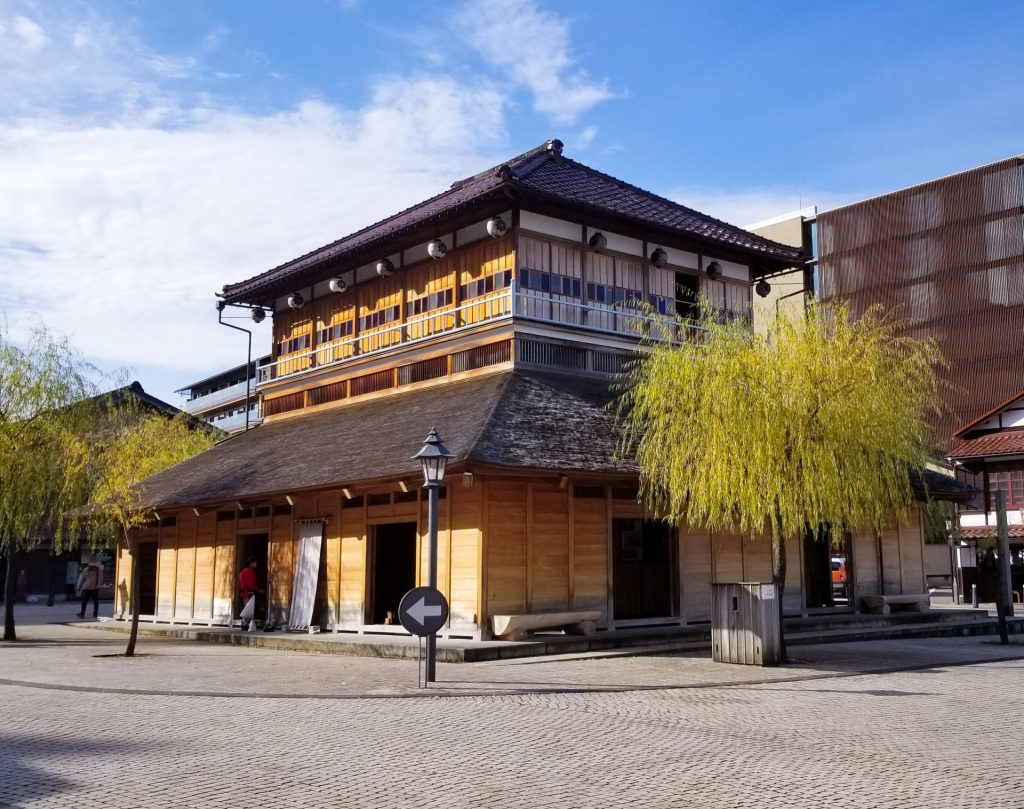
Right off of the new shinkansen stop, 20 minutes from Kanazawa Station, Kaga Onsen consists of four hot spring towns - Yamashiro, Yamanaka, Amazu and Katayamazu. Said to have been discovered 1300 years by monks on pilgrimage to nearby Mount Haku, Kaga Onsen is one of Central Japan’s most popular hot spring areas. Each town has many ‘ryokan’ (traditional guesthouses), most of which have their own in-house hot spring, and a central ‘soyu’ (public bath). The entire Kaga Onsen area is quite spread out however a convenient shuttle bus service called ‘Canbus’ connects each of the onsen towns, costing JPY1000 for a 1-day pass or JPY1200 for a 2-day pass. Kaga Onsen can be easily reached from Kanazawa Station using a local train to Kaga Onsen Station – 50 min / JPY770 – or take the Thunderbird from Kanazawa to Komatsu Station and switch onto the Hokuriku Line (local line, not the shinkansen) and head to Kaga Onsen Station. From there, visitors can use the Canbus to reach their desired hot spring town.
29 / FUKUI / all year round
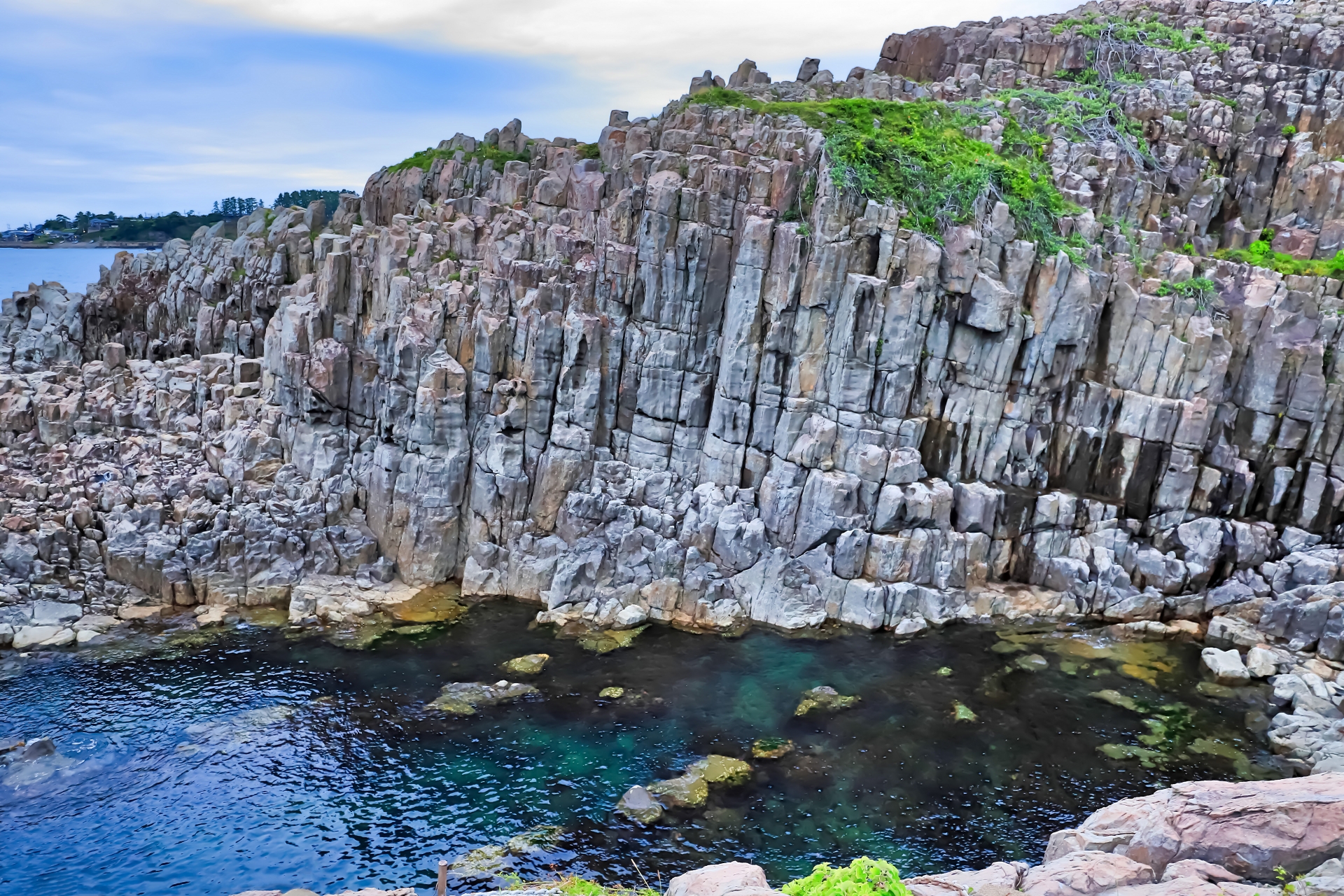
With the completion of the extension of the Hokuriku Shinkansen, this area which used to be almost an hour away is now about half of that, making it an easy day trip from Kanazawa. Fukui city itself has a few interesting sites, such as the castle walls, rainbow shrine and Atagozaka Slope, Fukui prefecture as a whole has many unique sights that are not as known as other parts of Japan. There is the Fukui Prefectural Dinosaur museum, Heisenji Shrine and the largest Buddha in Japan out in the mountain regions to the east. On the western coast there are the impressive Tojinbo Cliffs, Oshima sacred island and Awara Onsen. And don’t forget about Maruoka Castle, one of only 12 original castles still remaining in Japan. The far south of the prefecture has another host of excellent natural sights that can be easily reached from the new terminus of the Hokuriku Shinkansen in Tsuruga.
If you love the natural beauty of coastlines, nature walks and historic ports, please join us on our tour! You can see the stunning cliffs above as well as the sacred island of Oshima, famous for its its 200 meter long red bridge, and Mikuni Port, a bustling port that has maintained many of its traditional merchant buildings and picturesque temples.
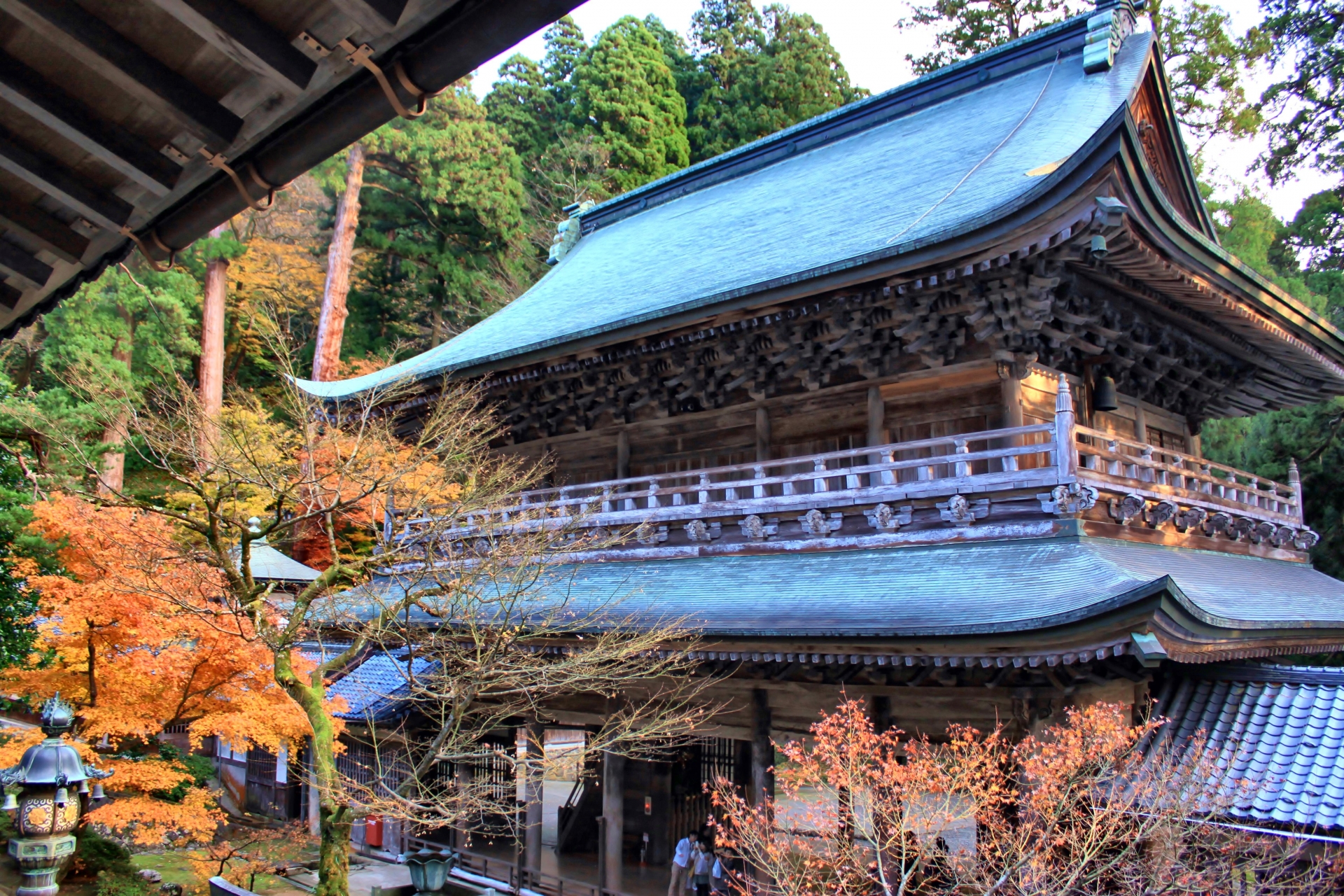
The most famous sight in all of Fukui has to be Eiheiji Temple. There are many Japanese cultural traditions that have made their way to world audiences with one of the most famous being Zen. Eiheiji Temple is one of the head temples of the Zen Buddhist sect that has been in existence since the 1200s. Many of the buildings and cedar trees that surround them are said to be from around the founding, making them about 680 years old. This makes for an unbelievable sight, especially during the autumn months.
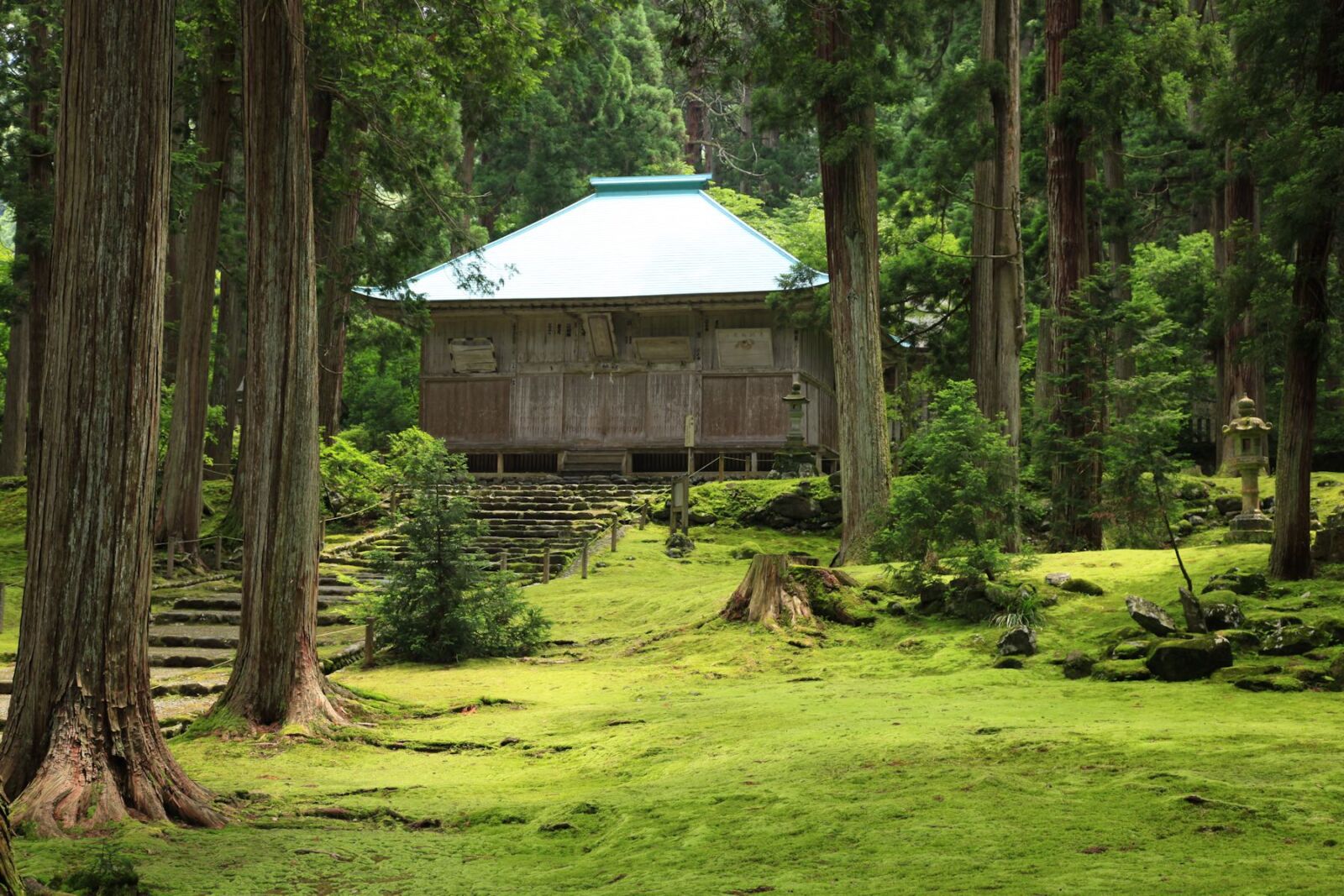
If you go deeper into the mountains there are even greater gems to find. The Heisenji-Hakusan Shrine is a mythical experience as you climb up the steps to the main hall. The moss covered steps and shrine grounds make you feel just like you’re in a Ghibli movie. Nearby the shrine is the Prefectural Dinosaur museum where you can see many of the fossils that were dug up in the area. The largest Buddha in Japan is also in the same city. If castles are your thing, Echizen Ono Castle is one of those “castles in the skies” when viewed in the early morning mists from October to April.
If you are interested in making your way to this temple in the mountains, join one of our tours!
30 / JIGOKUDANI MONKEY PARK / all year round
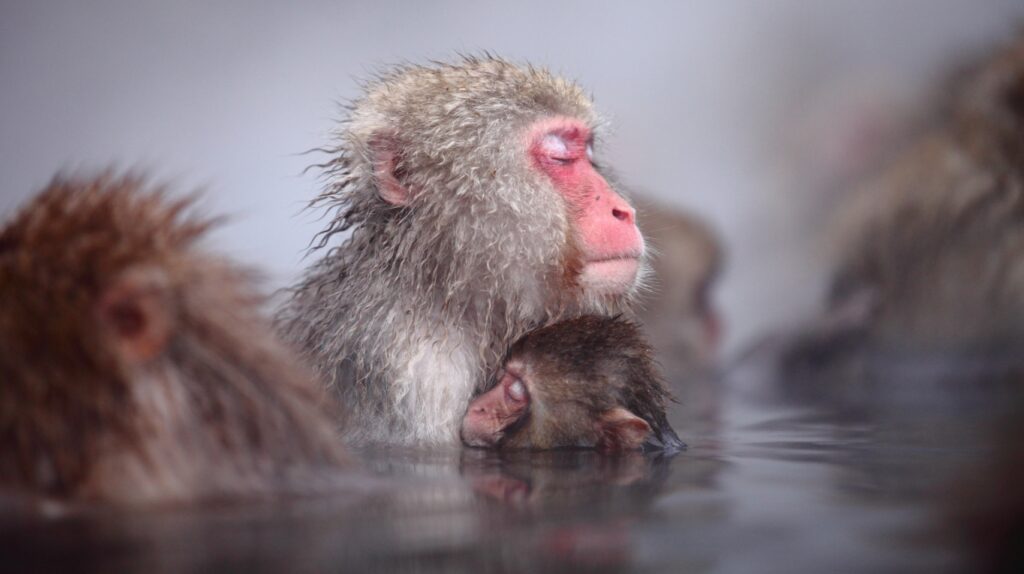

Accessible via Nagano Station, on the Hokuriku Shinkansen, the Jigokudani Monkey Park is one of Central Japan’s most well-known destinations. At its most popular through the snow of winter, the park is in fact open all year round. The monkeys – known for their hot spring-bathing antics – come to the park all year round with each season offering its own reasons to visit. Known fondly as ‘snow monkeys’, they are in fact there all year round with spring, summer and autumn each providing their own reasons to visit to the park.
Best Selling
1-Day Tour: Snow Monkeys, Zenkoji Temple & Sake in Nagano
- Spots:
- NaganoSnow MonkeyHakuba
- Pick-up:
- Nagano CityHakuba
- Drop-off:
- Nagano CityHakuba
Best Tours and Itineraries in and Around Kanazawa
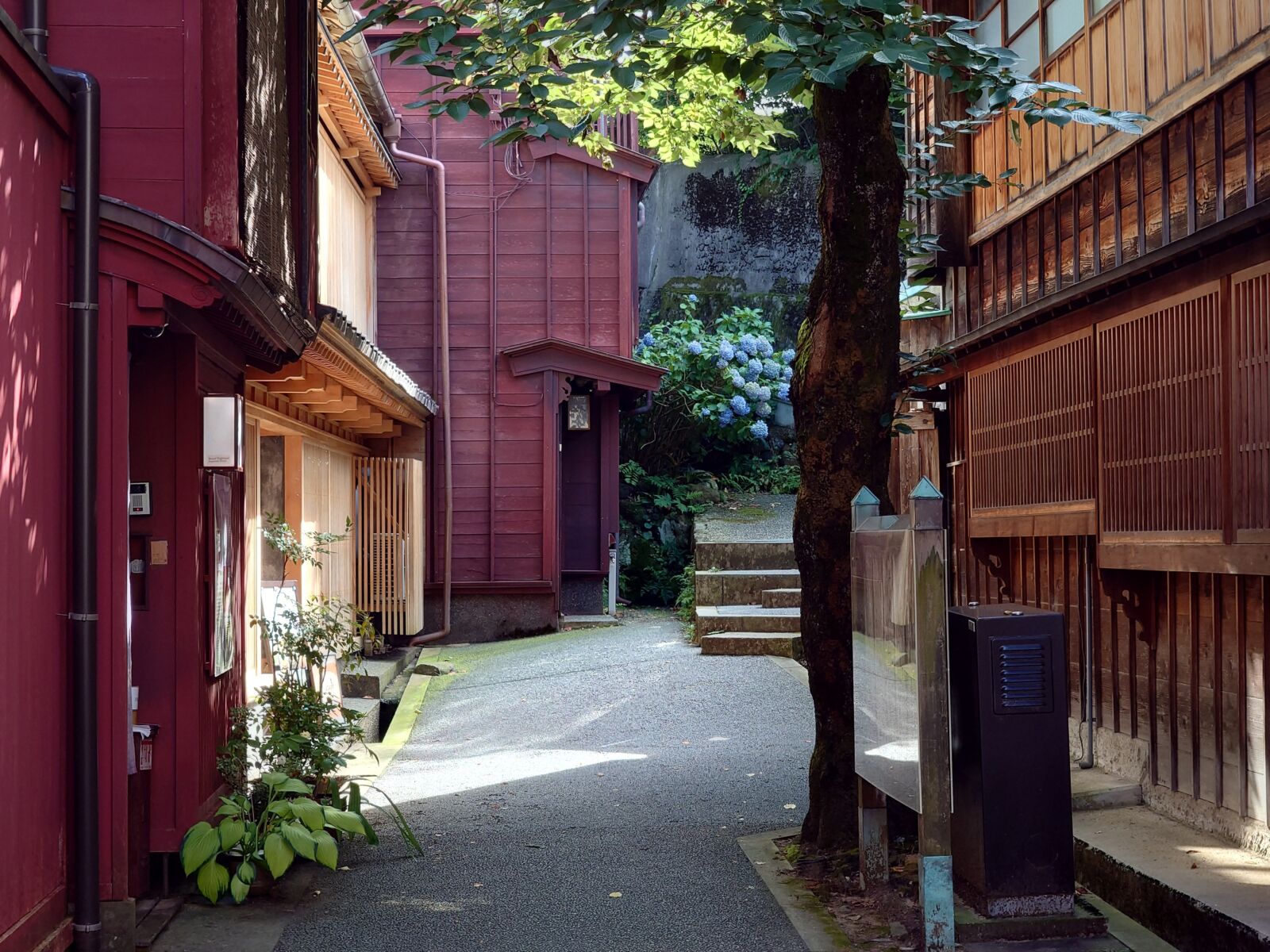
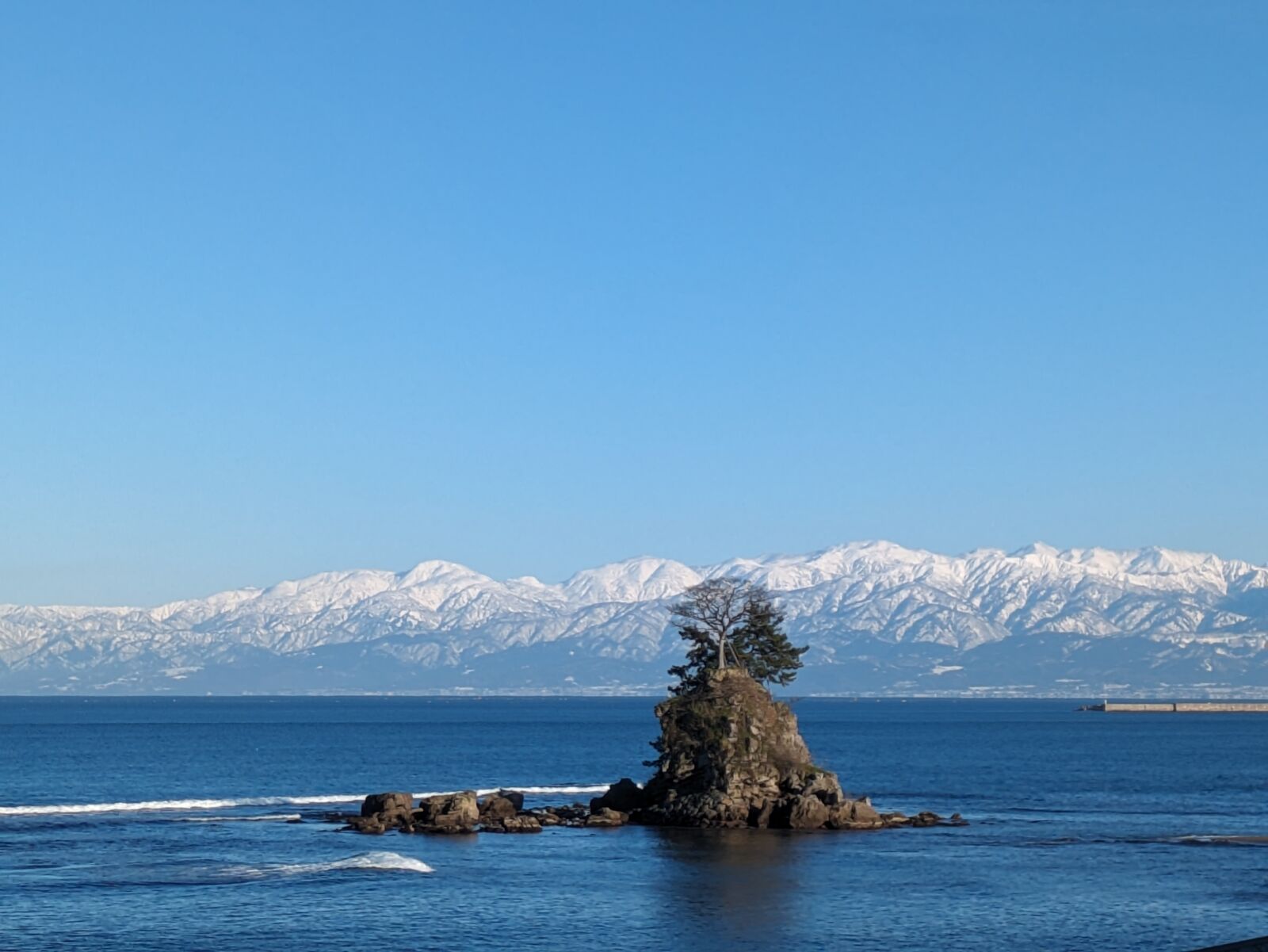
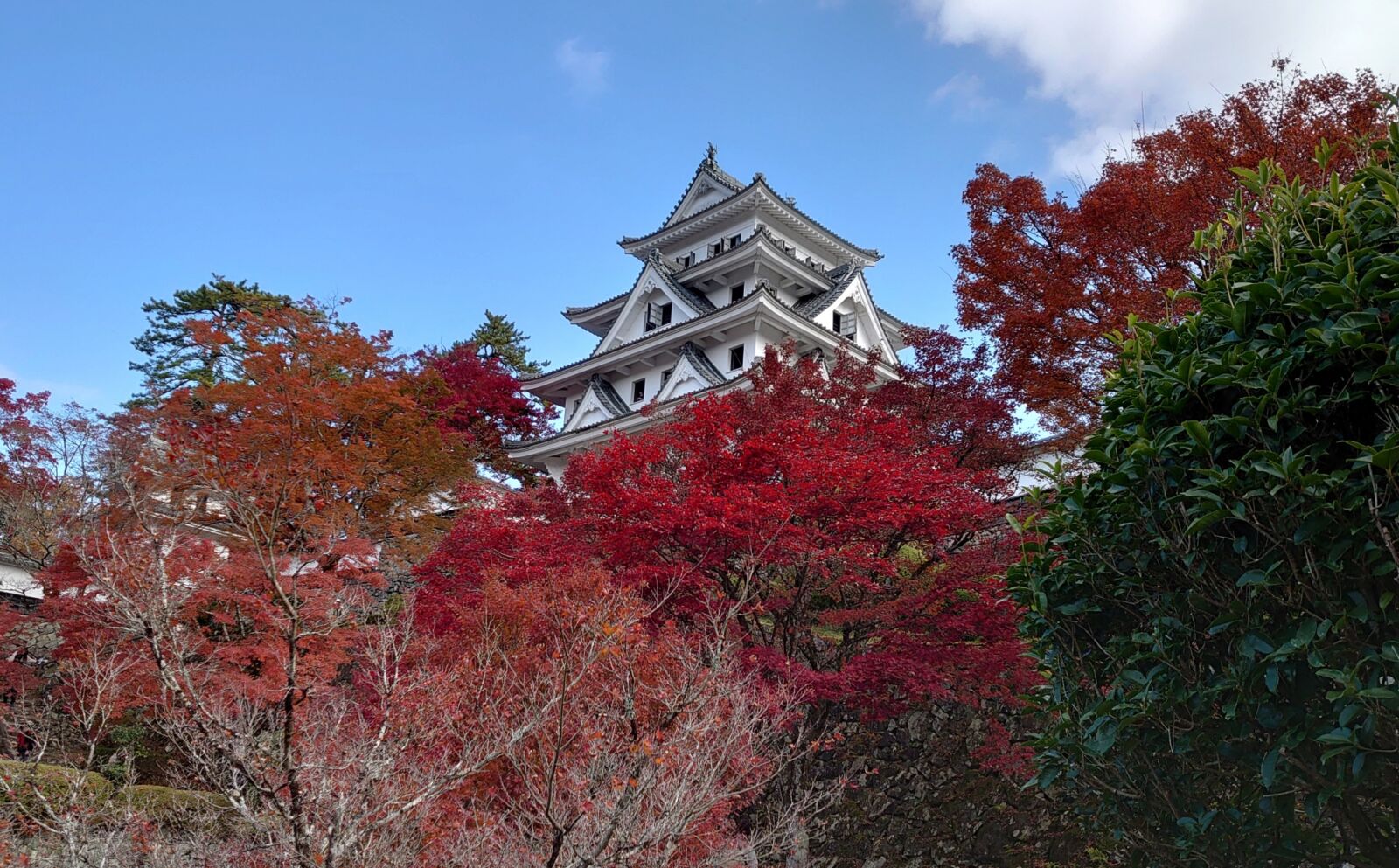
If you are looking for ideas for multi-day trips in the region around Kanazawa or tours that you can join, please check out our Best Tours and Itineraries around Kanazawa. There are many great cities and natural sights around the region but it can be difficult to connect them all together well. Get a feel for each of the major attractions and then see how you can visit them all! Central Japan has some of the best modern, cultural and natural sights in Japan. From the traditional thatched roofed houses of Shirakawa-go to the majestic mountains of Shinhotaka, there is something for everyone.
Where to Stay When Visiting Kanazawa
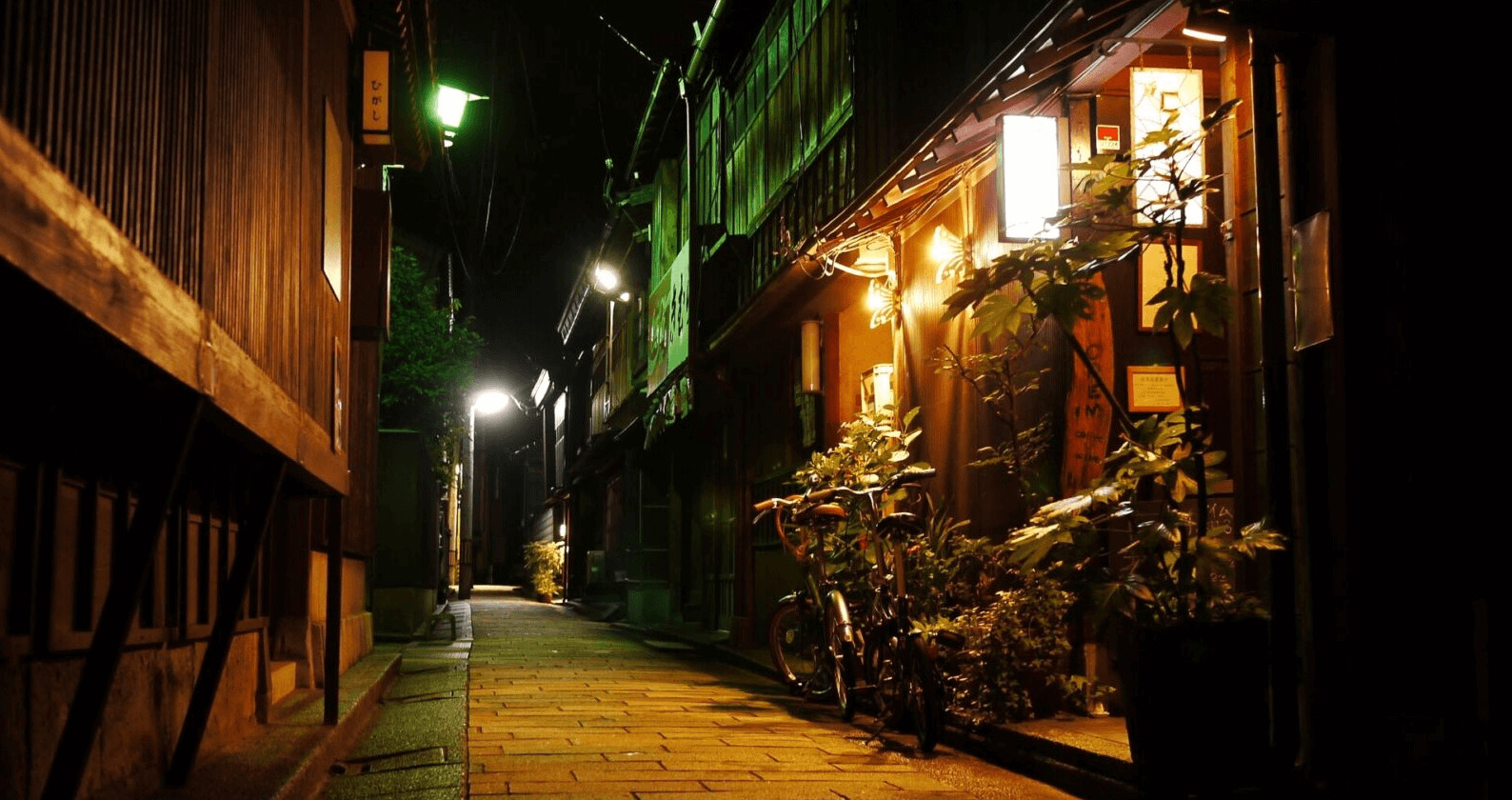
There is no shortage of accommodation in the city ranging from luxury hotels, mid-range to budget, and extending to traditional ‘ryokan’ (guesthouses) and youth hostels. A large number of hotels can be found in and around the station while the areas around Kenrokuen Garden and Kanazawa Castle Park along with the Higashi Chaya and Asano River has some excellent traditional guesthouses and restaurants. Our 'Best Places to Stay in Kanazawa' page includes everything you need to know, including accommodation listings, to find the right hotel or guesthouse for you.
How to get to Kanazawa
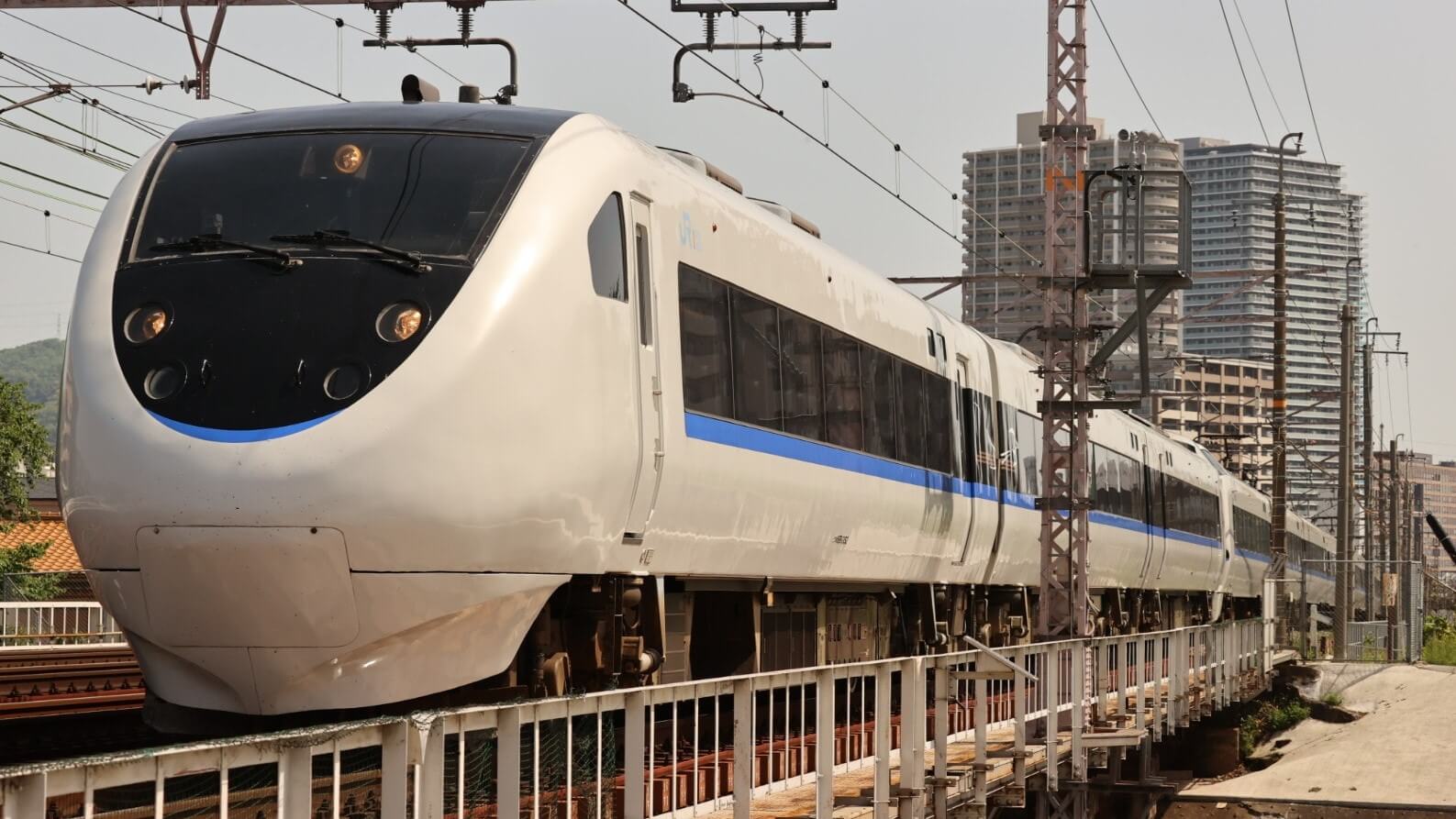
Kanazawa Station is the gateway to both the city and northern reaches of Central Japan. Readily accessible using services from Tokyo, Kyoto and Osaka, visitors can move to and from Kanazawa quickly and in comfort. For information on how to get there, see our ‘How to Get to Kanazawa’ page.
Frequently Asked Questions (FAQ)
What is the weather like in Kanazawa during summer?
Kanazawa has a hot and humid climate. The average high temperature from June to August is 32°C (89.6°F). Kanazawa is known for its humidity, however, so the "feels like" temperature is often 36°C or 37°C (98.6°F). Make sure to drink plenty of water!
What is the weather like in Kanazawa during winter?
In winter, Kanazawa is famous for its snowfall, which is substantial but milder than places like Hokkaido and Toyama. Snow usually starts falling near the end of December and lasts until mid-February, making it a perfect place to enjoy a white Christmas.
Temperatures in winter are usually from 0°C to -2°C (32 - 28.4°F). Snow doesn't usually fall every day and often only for a few hours at a time, making it easy to take a break in a museum or restaurant and look out at the nature.
Is Kanazawa a good place to visit for families?
Kanazawa is a great place for families to visit. The city offers a variety of experiences such as gold leaf crafts, sweet making, silk painting, tea ceremony, and ceramics that are fun for all the family!
When is the best time to visit Kanazawa?
Kanazawa is famous for its stunning nature, which can be most clearly seen in spring and fall. In spring, the cherry blossoms come out in full force in the Kenrokuen garden. In fall, the variety of trees there means the leaves burst into a vivid display.
Can I see geisha in Kanazawa?
Private geisha shows are possible, but the cost and availability vary from place to place.
The Kanazawa Geisha Association frequently runs events where you can see a geisha performance. The venue seats up to 32 people and tickets cost from 10,000 - 12,000 yen. Performances run every Tuesday, Thursday and Saturday during March, April, October and November. In the off-season, performances are held most Tuesdays.
While you are unlikely to see an actual geisha there, you can get a true feel for the geisha culture in Kanazawa's Higashi Chaya District, one of the largest geisha districts in Japan.
How do I get to Shirakawa-Go from Kanazawa?
There are buses that run from Kanazawa Station to Shirakawa-Go every day for ¥2,800 per person. However, reservations are often full months in advance.
If you are interested in travelling to Shirakawa-Go, why not check out our highly-rated tour? On the way, see the historic wood carving town of Inami, and a sleepy thatched roof village in Gokayama.
Best Selling
1 Day Tour from Kanazawa: Shirakawa-go, Gokayama and Wood Carving Village
- Spots:
- KanazawaShirakawago
- Pick-up:
- Kanazawa
- Drop-off:
- TakayamaKanazawa
What are the best "hidden gems" in Kanazawa?
Our local guides recommend Kurando Terashima's house. The samurai's residence has been well preserved and turned into a museum. There is also a beautiful garden and an option to enjoy matcha tea with a traditional sweet.
For those who are interested in temples, we recommend Daijoji, a Buddhist temple on the outskirts of the city. The temple is nestled in the mountainside, so you can enjoy the vivid green of spring or the autumn leaves as you walk through the temple grounds. The temple also has important historical connections to Kanazawa, as many of the Maeda clan, the former lords of the region, are buried here.
Book With Us! Nagano's No.1 Tour and Charter Operator!
Awarded a 2022 TripAdvisor Travelers’ Choice Award for our 1-Day Snow Monkeys, Zenko-ji Temple & Sake Tour – recognised as one of the Top 10 Experiences in Japan – we have the local knowledge and experience to help you get the most out of your time in Nagano.
Got a question about visiting Kanazawa and Central Japan? Contact us at snowmonkeyresorts@machinovate.com and let’s get planning together!














